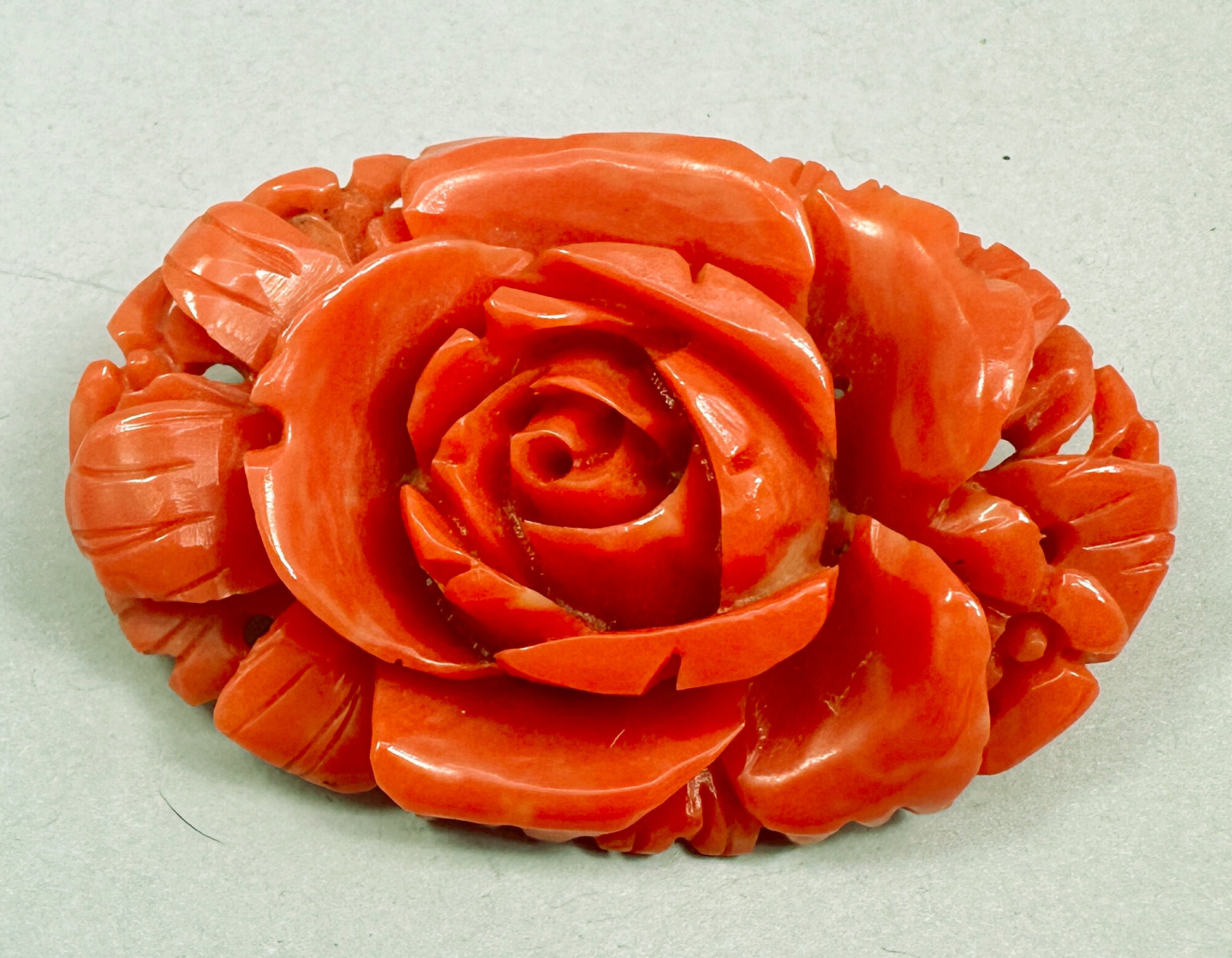
Fun celluloid elephant motif earrings 1960s
Price: £25
Pink porcelain powder box, Radnor Bone China, English Staffordshire, 1950s
Price: £15Radnor was the trade name used by Hall Bros (Longton) Ltd. Hall Brothers was a China manufacturer based at the Radnor Works, Longton, Stoke-on-Trent, England which traded from 1947 until its liquidation in 1972. It produced figures, birds, toby jugs and floral ware, mainly small porcelain boxes which were distinguished by their decoration of finely modelled flowers (see image XX for an advert from the 1960s). This box is a typical example and survives in excellent condition with just a very small amount of near inevitable damage to the petals.
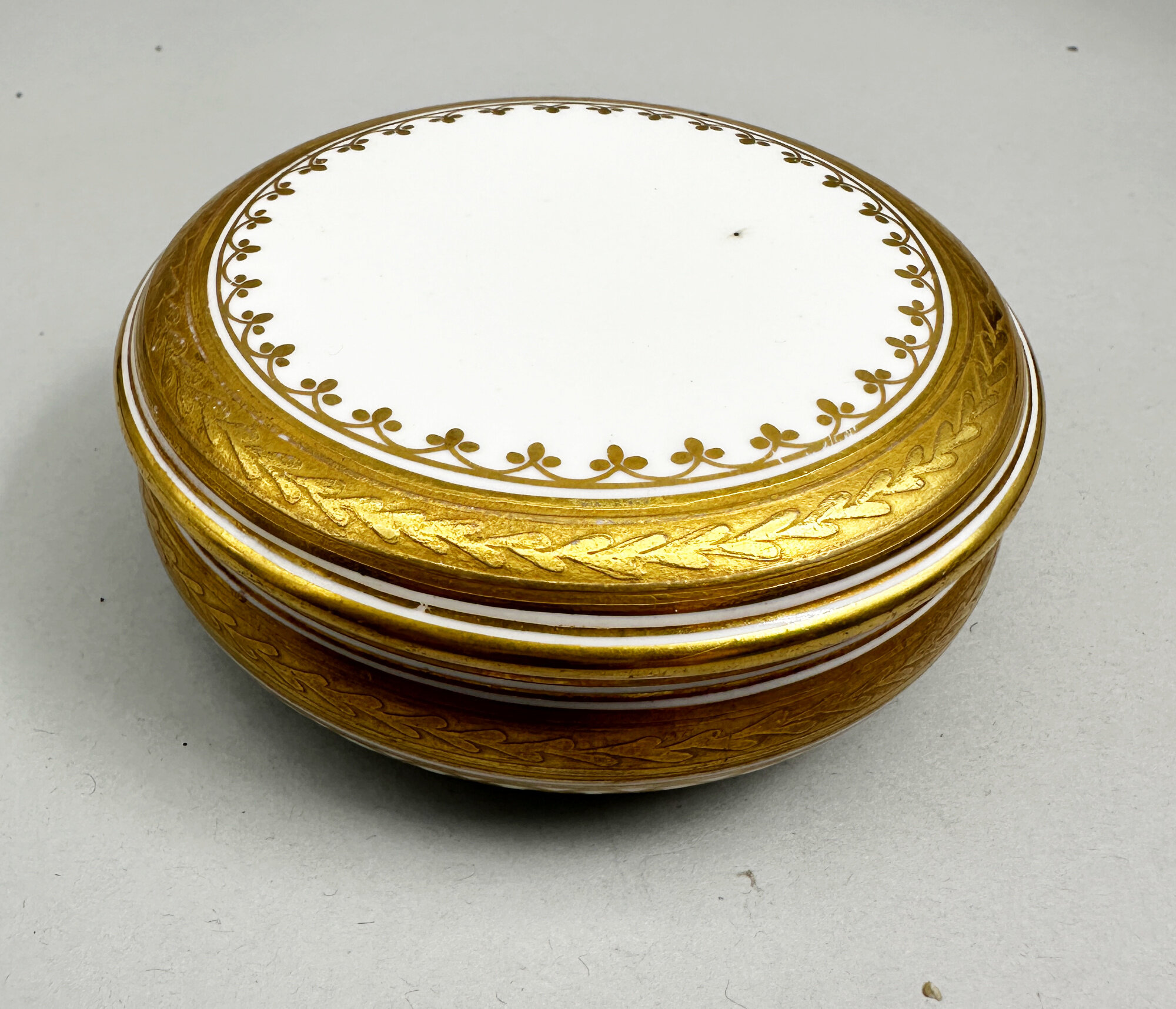
Gilt decorated English porcelain powder box and cover, probably mid C20th
Price: £15
Gilt decorated English porcelain powder box and cover, probably mid C20th
Price: £15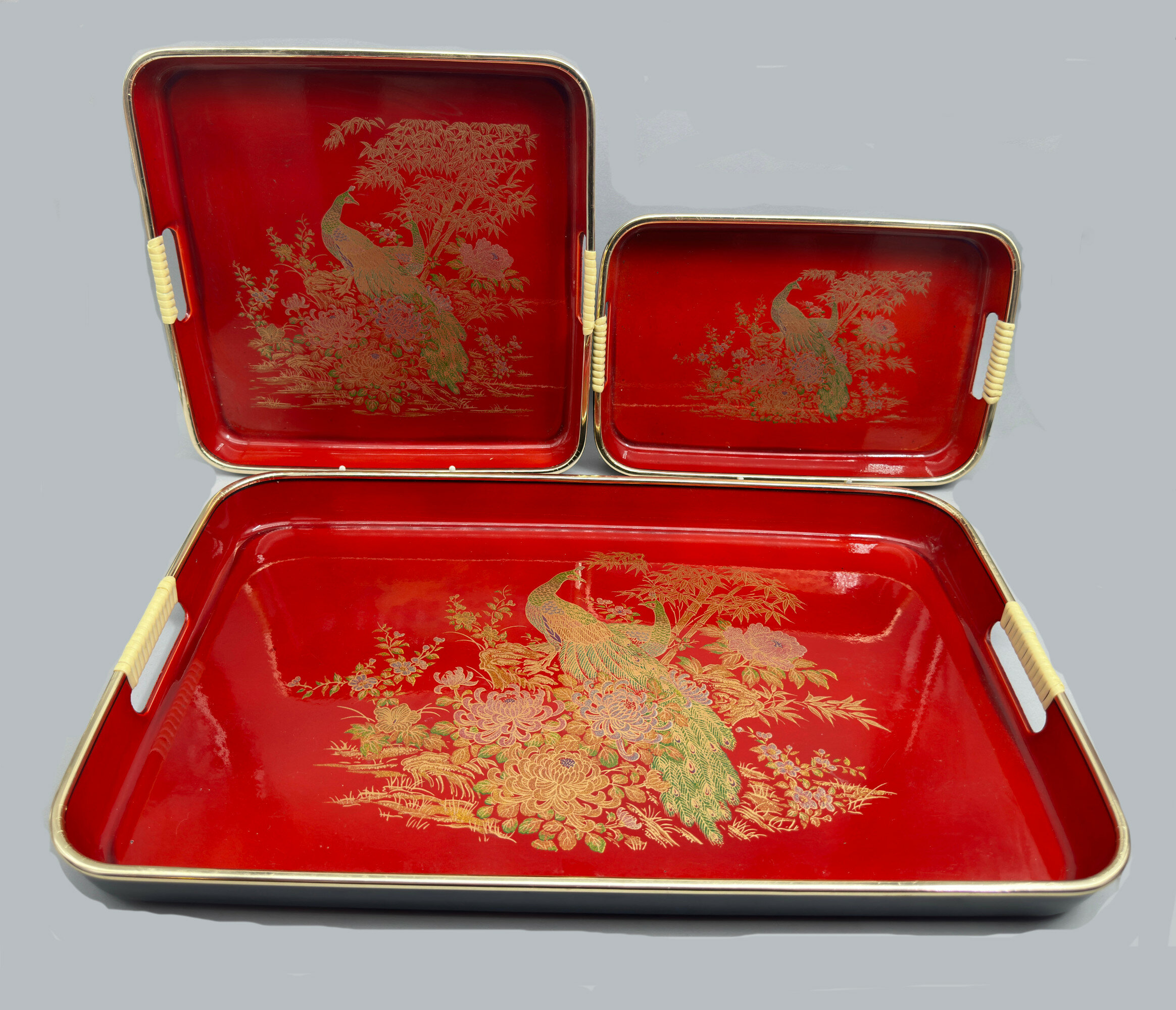
Set of Three Japanese Lacquer Nesting Trays, mid to late C20th
Price: £45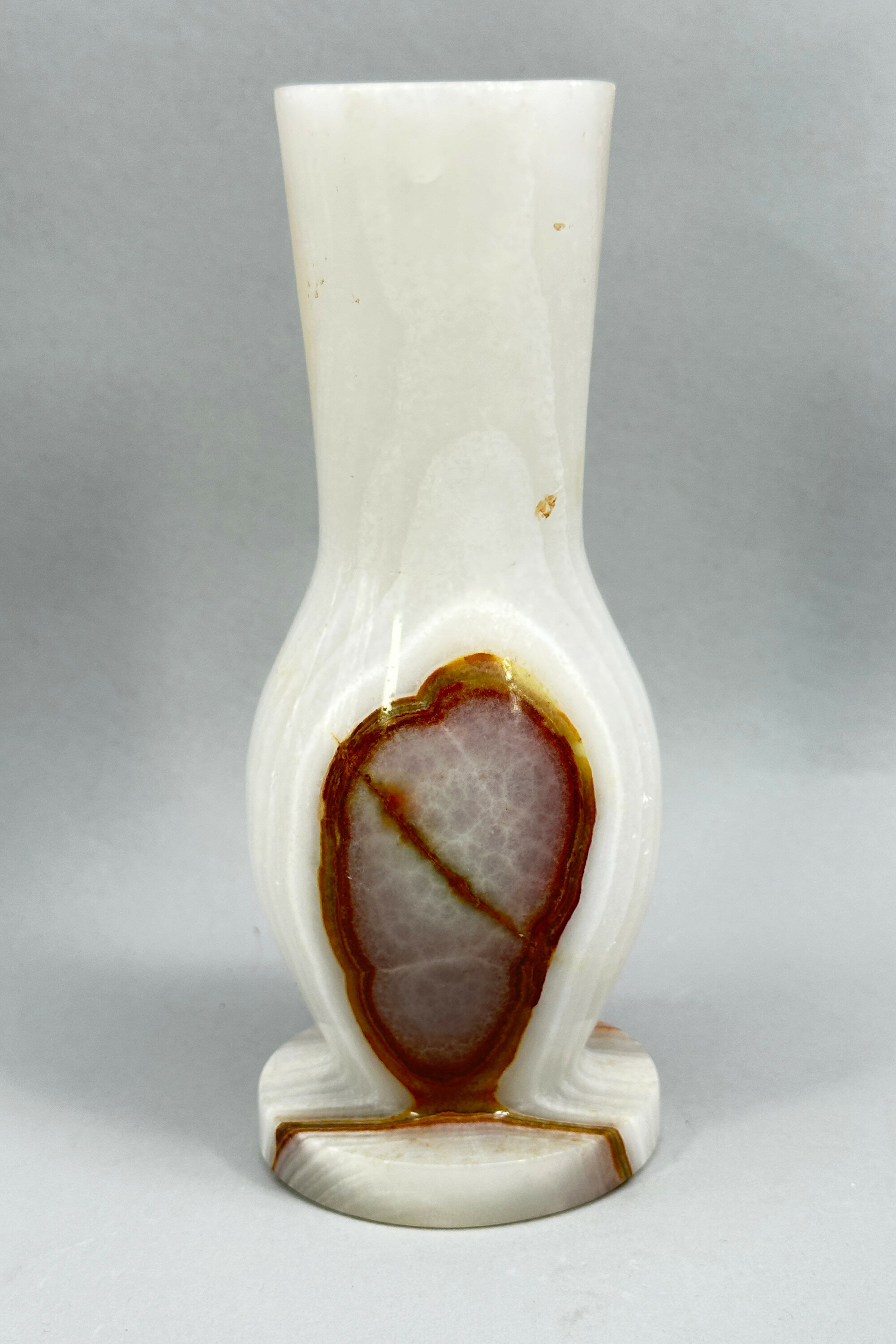
Pedestal footed Onyx Vase, mid to late C20th
Price: £25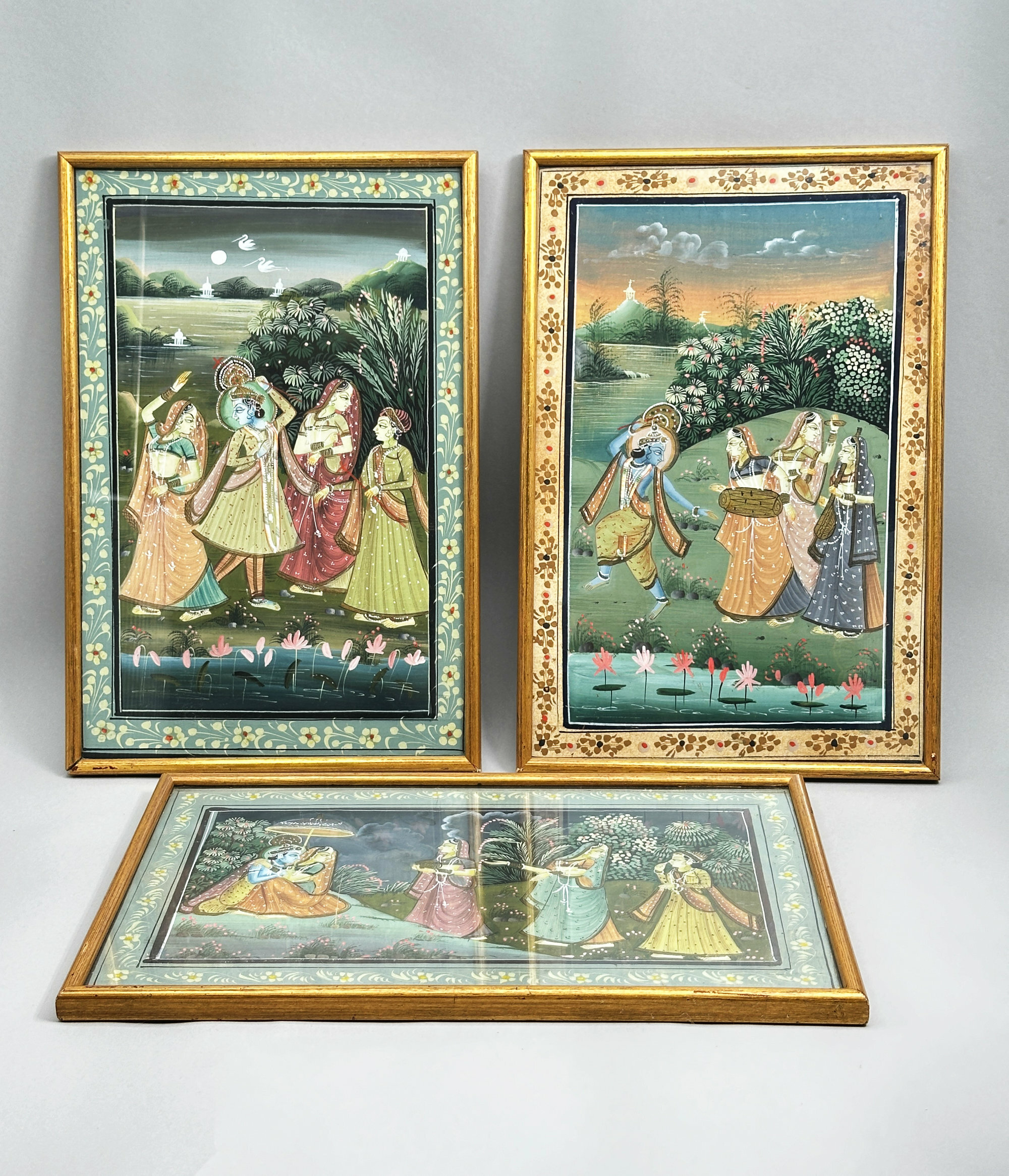
Three Indian gouache paintings depicting Krishna and Radha, framed, first half C20th
Price: £150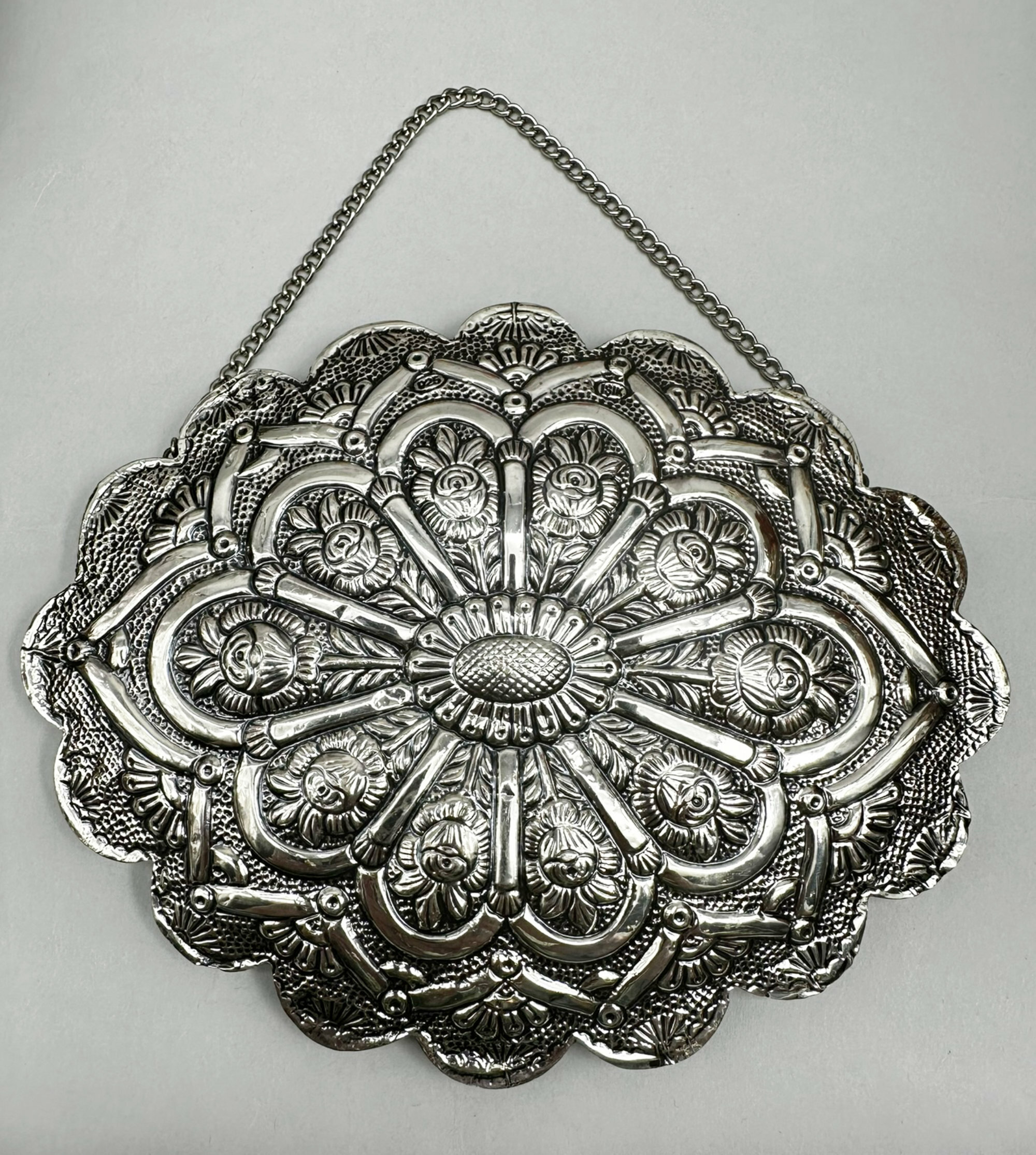
Outstanding Ottoman silver marriage mirror, Turkey early 20th century
Price: £125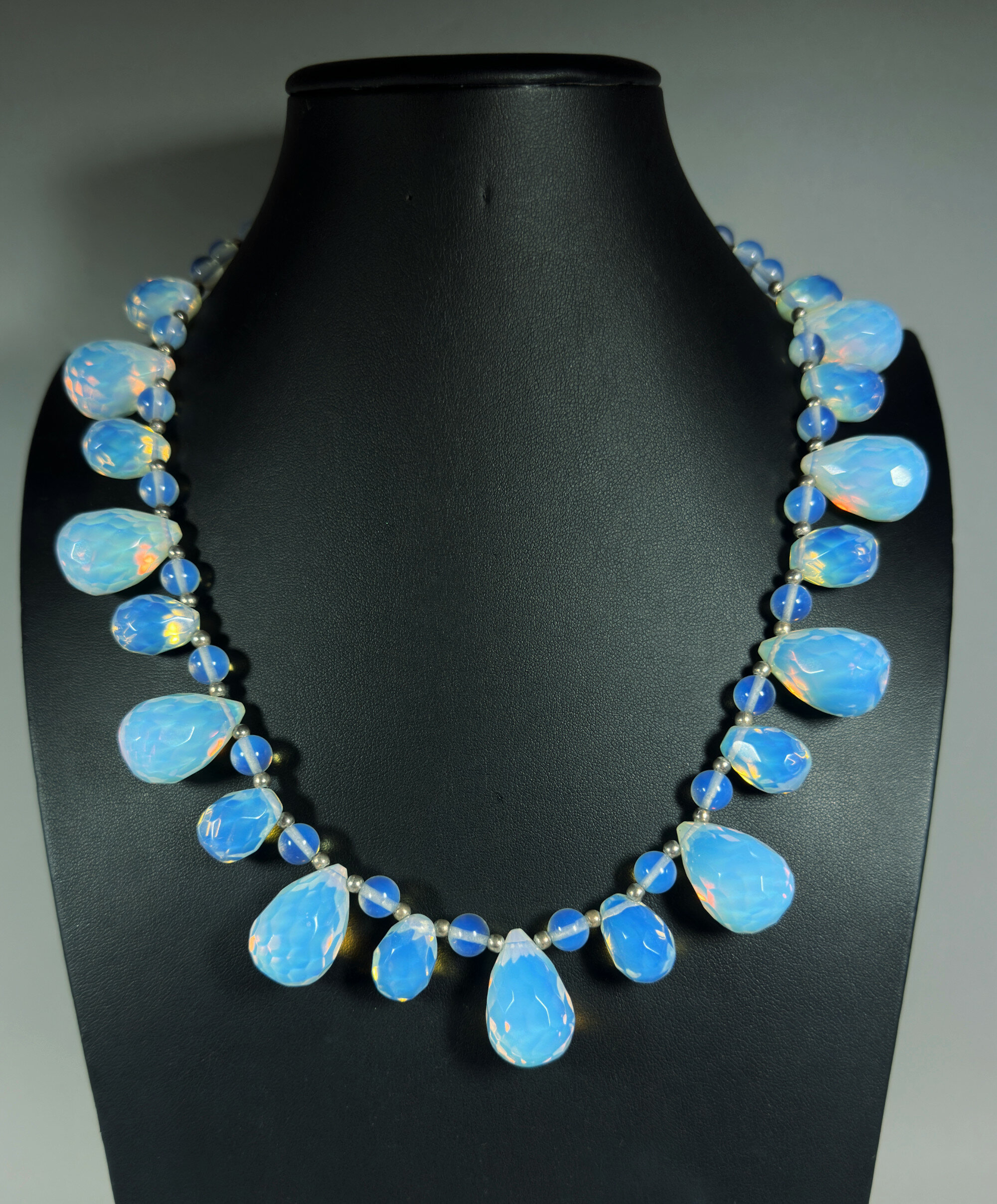
Faceted Opalite statement necklace c1970
Price: £95Opalite is a type of synthetic glass often mistaken for a gemstone due to its alluring translucence and the play of colors similar to those seen in opals. Unlike natural gemstones, opalite is man-made, primarily from dolomite and metal to create its distinctive shimmering and milky appearance. It typically exhibits a soft, opalescent sheen with a blue or orange glow when light passes through it, making it popular in jewelry and decorative objects.(geologyscience.com)

Persian Gouache painting on silk of a horseman, C 19th
Price: £25The style of painting here and the use of silk as the medium are typical of Persian work, and the detail of the brushwork, notably the man’s hair and the horse’s head suggest nineteenth rather than twentieth century workmanship and while a little age worn, this is a striking example of the genre.
Please note that the silk is glued to the hardboard backing at the reverse (see image 10); the simple gilt frame is just fitted to the edge and the piece is not glazed.
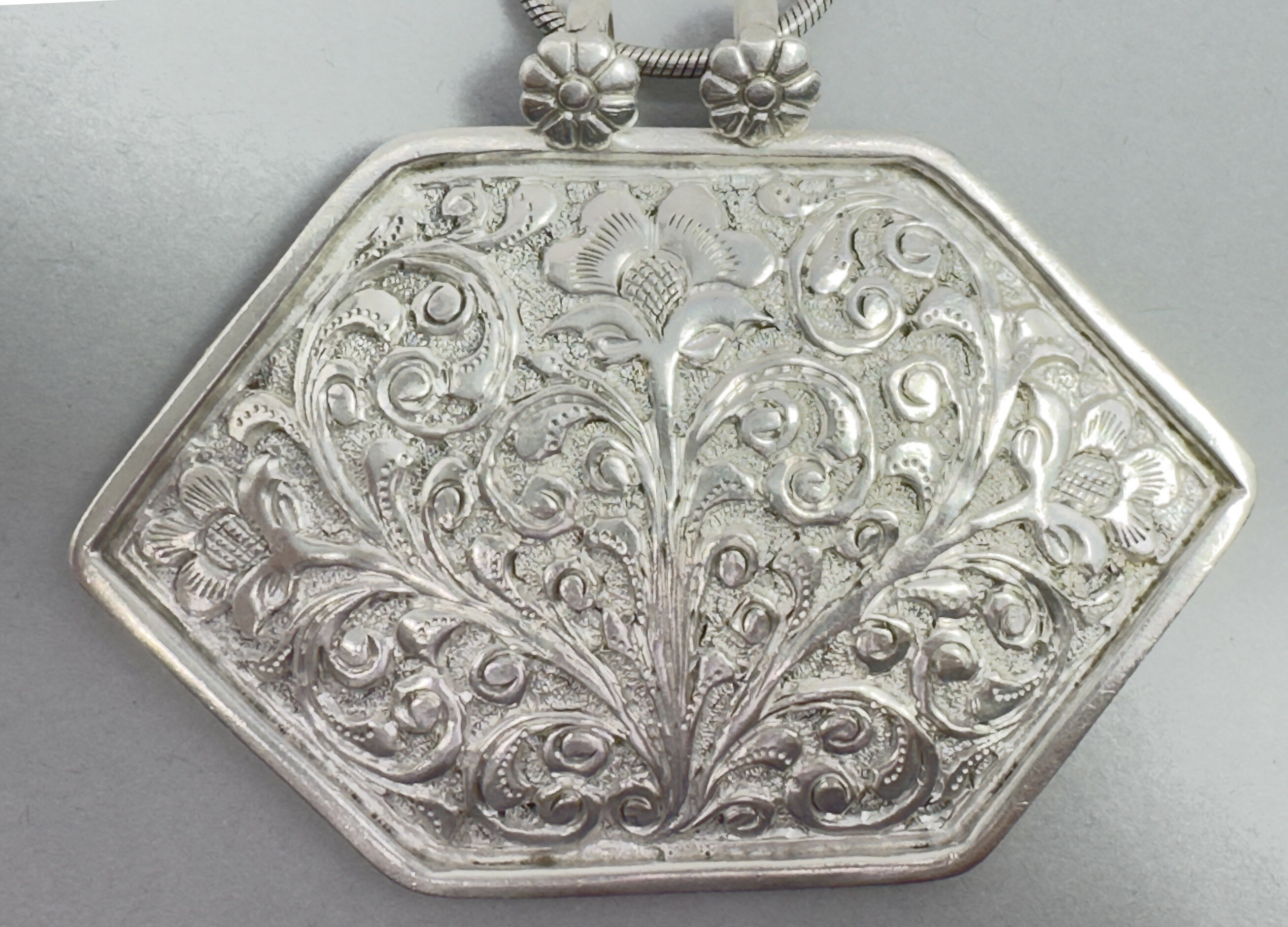
Very fine Indian silver repousse plaque Necklace, c1970
Price: £55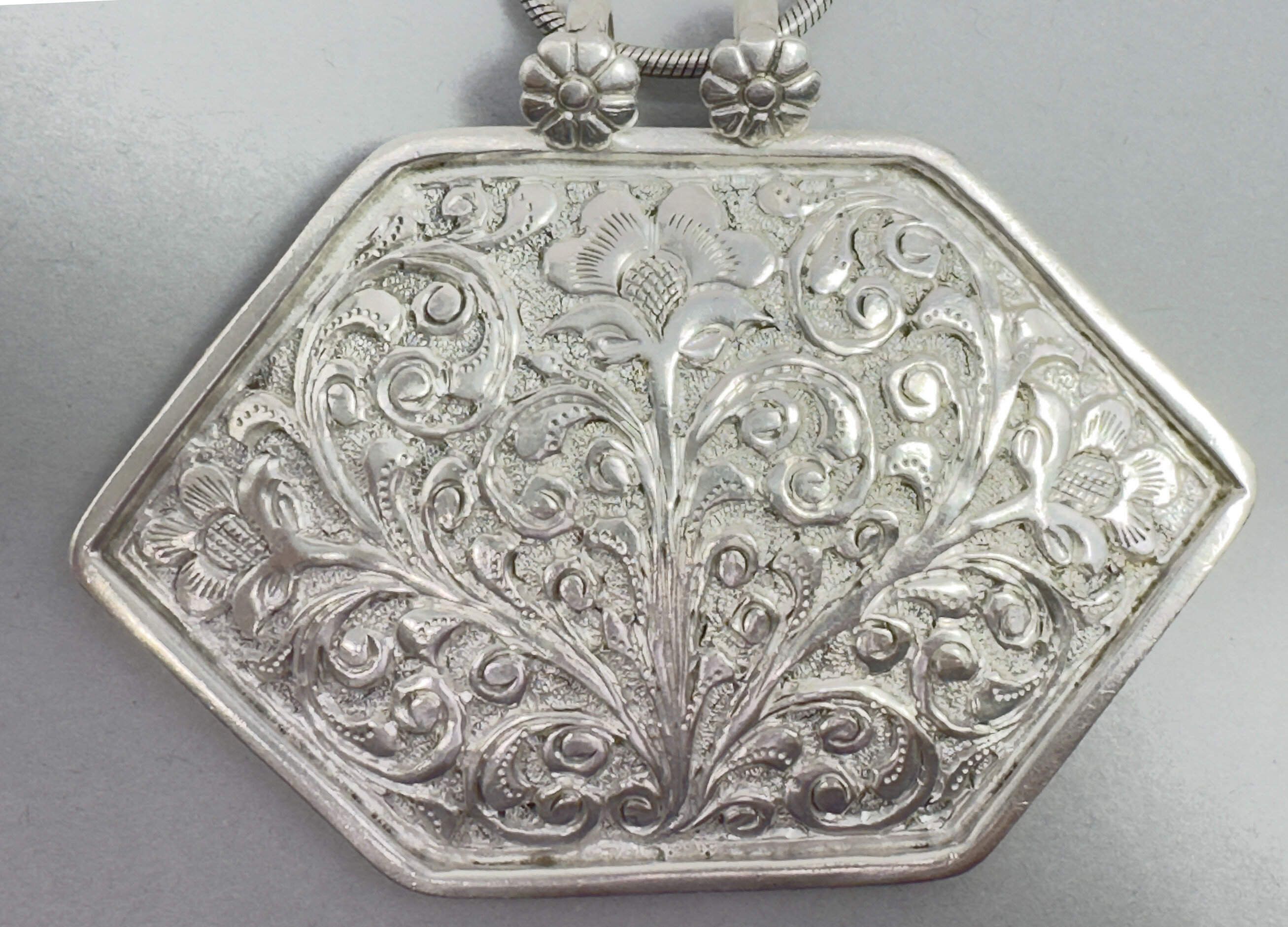
Very fine Indian silver repousse plaque Necklace, c1970
Price: £85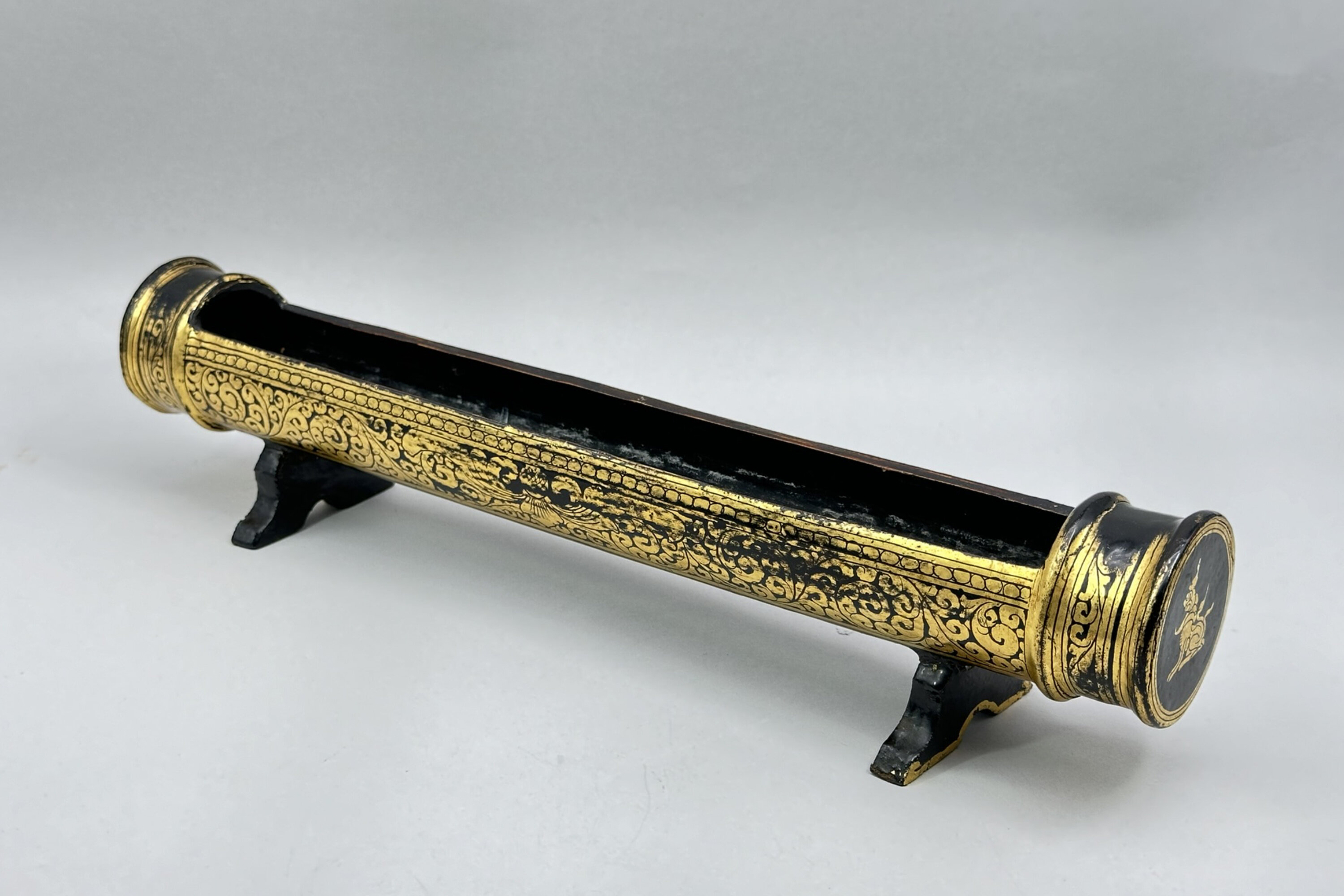
Burmese Black Lacquer and Gilt Scroll Stand, C20th
Price: £25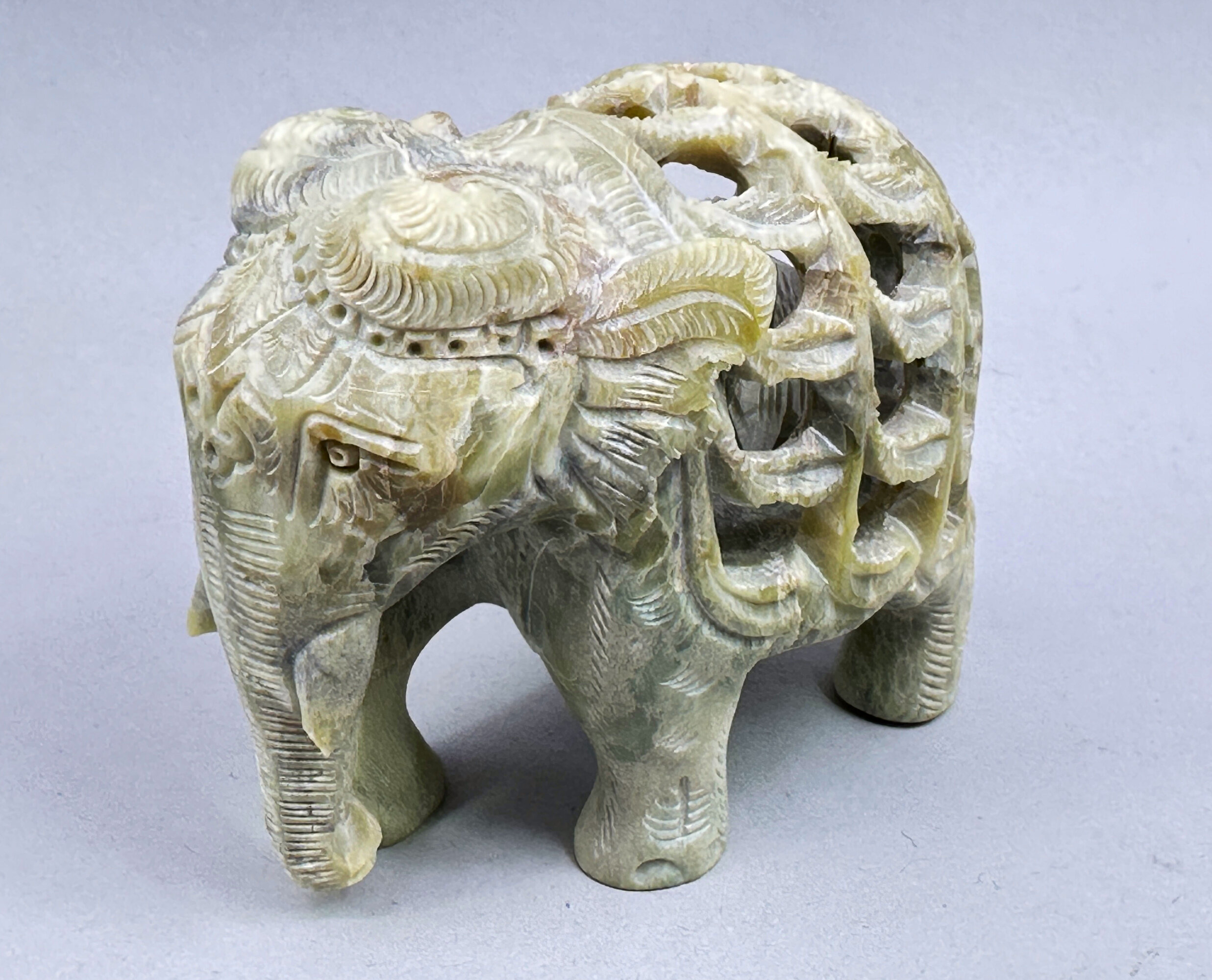
Indian carved Soapstone Figure of an Elephant and Baby Elephant
Price: £25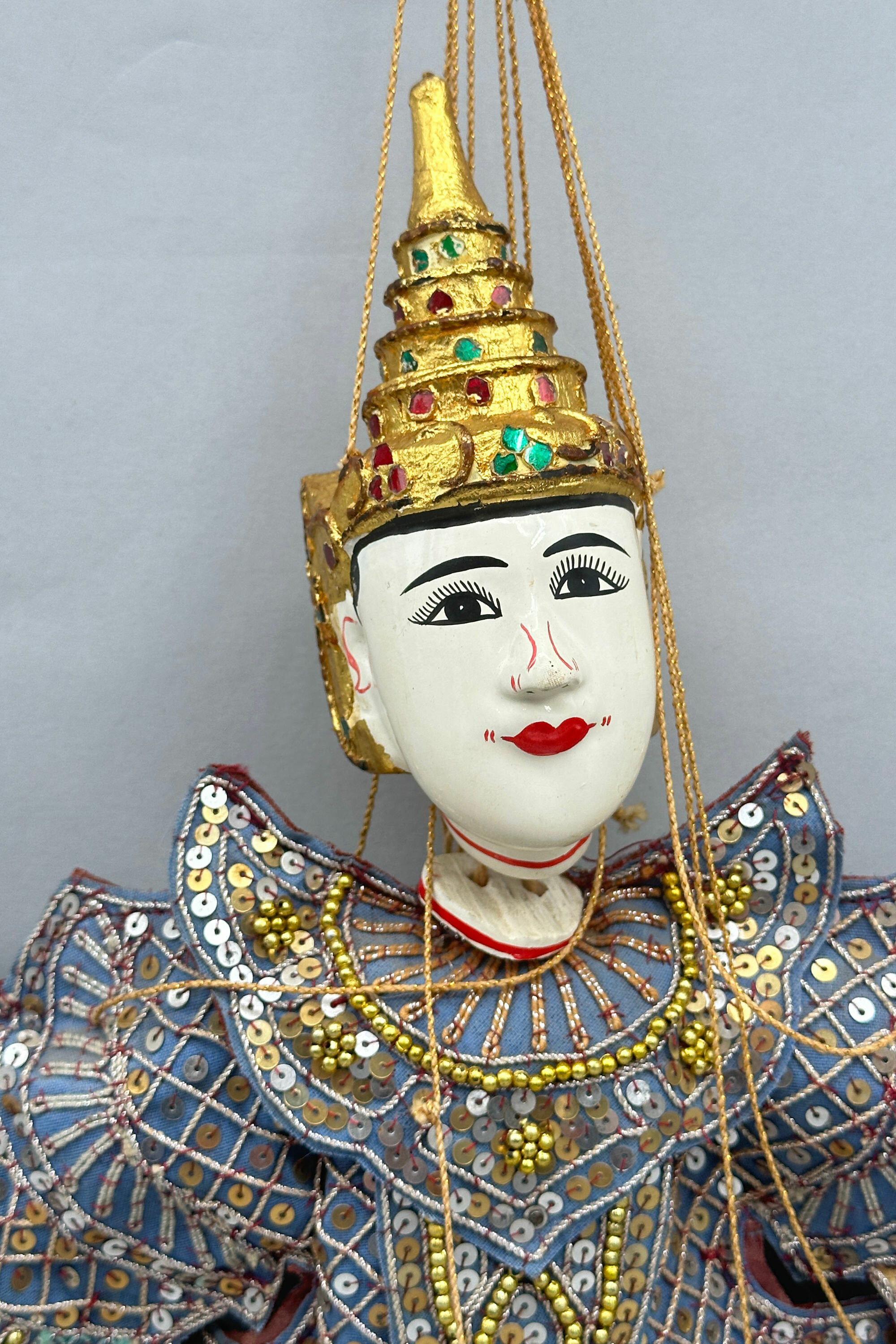
Marionette Puppet of a Dancing Lady or Princess, probably Burmese late C20th
Price: £45The style of the dress suggests Burmese work and very similar fabric decoration can be seen in the cloth wall hangings also included in this sale. Burma has a tradition of marionette puppetry (marionettes are a specific form of puppet where the figure is controlled by strings or rods) which dates back to the late eighteenth century and is still popular today with visitors to the country, now called Myanmar. Termed ‘Yoke thé’, the Burmese marionette tradition allowed political commentary under the guise of of an entertainment display. The standard ‘troupe’ comprised twenty seven characters, both animal and human, and this lady figure is probably the ‘princess’ (‘Minthami’). She is a fine example of the genre and probably dates to the 1990s when General Khin Nyunt of the ruling junta lent official support to marionette actors and troupes in an attempt to revive a tradition which had fallen somewhat into decline.
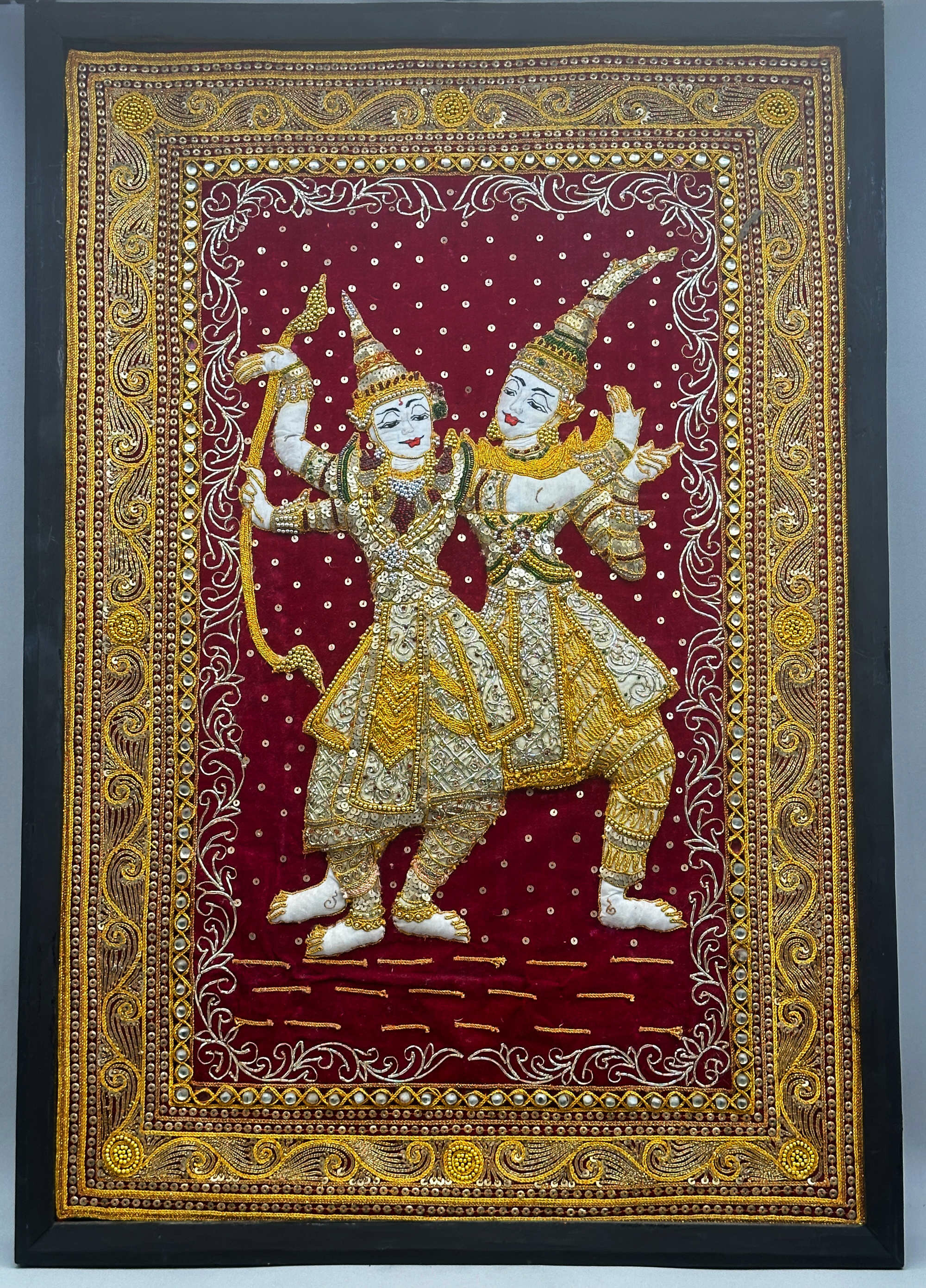
Large Burmese Textile with two dancing figures, probably second half C20th
Price: £110The distinctive style of embroidery and applied work here is typical of Burmese work known as ‘Kalaga’ which means ‘curtain’ in Burmese and is used to refer to heavily embroidered appliqué tapestry sewn with a technique called ‘shwe gyi do’. First produced around 150 years ago, Kalagas are generally linen, silk, cotton or velvet background fabrics embellished with sequins, embroidery, beads, coloured stones, tiny pearls, coral, braids and metal threads, the choice of materials depending in part on the client’s budget. Cotton padding was used to produce the ‘3D’ effect seen here and on many other examples of the work. The elaborate decoration meant that some of the larger pieces could take many months to produce which is likely to have been the case here. Dating is difficult and a mid C20th attribution here is probably sensible but an earlier period of manufacture is quite possible. The hanging has been recently mounted on board and fitted with a simple frame making it ready for display in a contemporary interior.
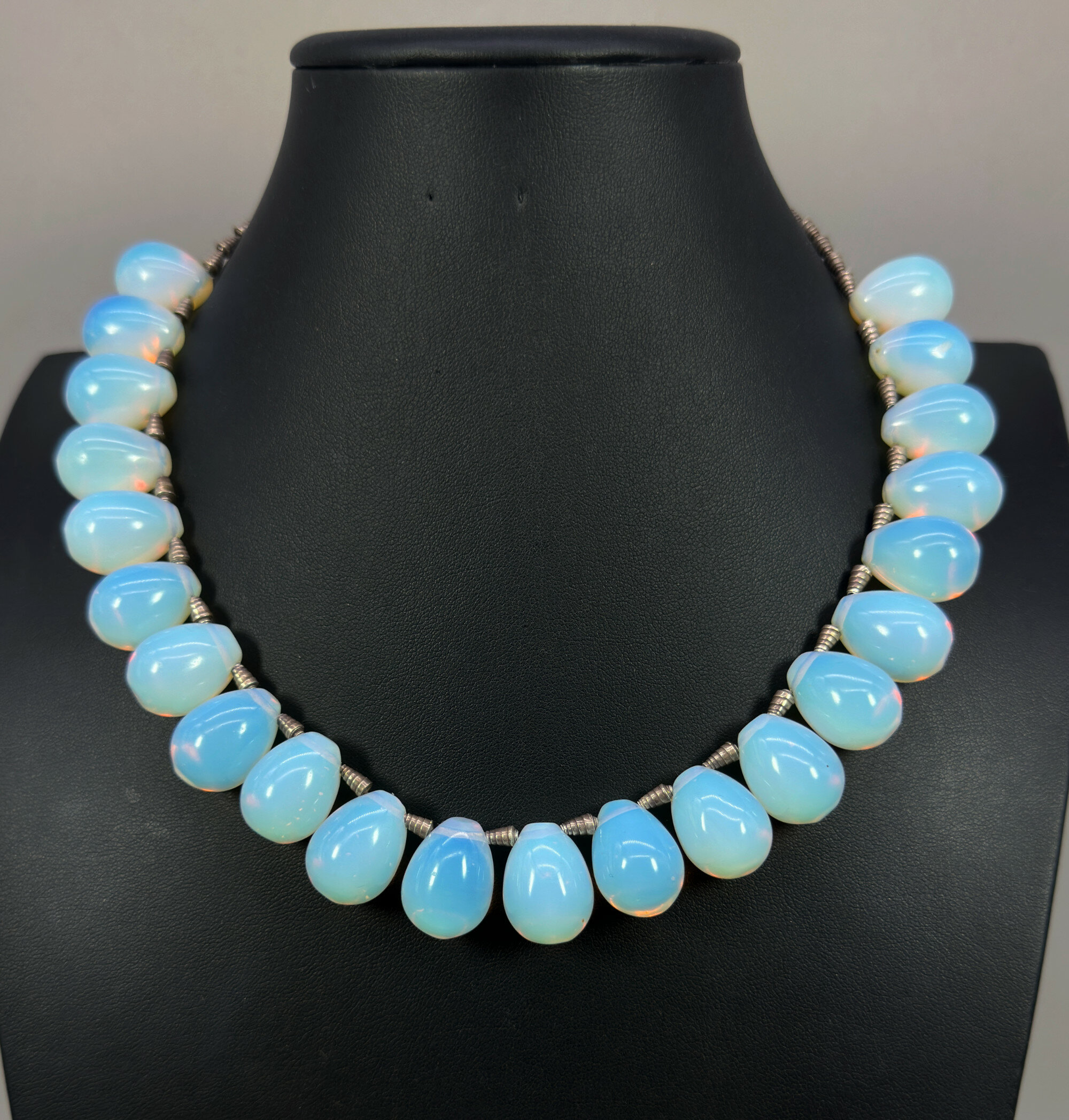
Art Deco opaline glass necklace 1930s
Price: £125
Vintage Carved wood figure of a Lady, Bali, Indonesia, second half C20th
Price: £45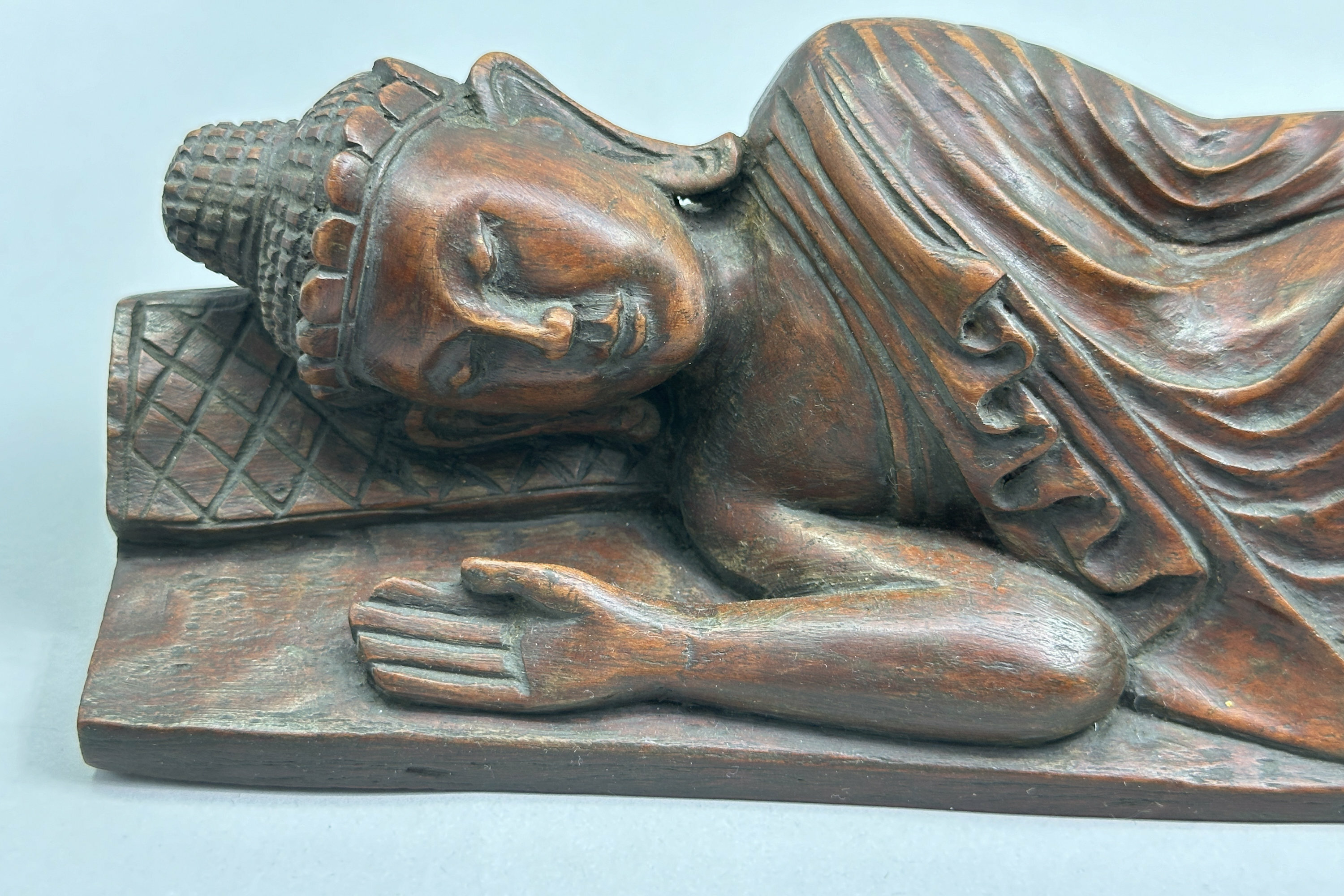
Burmese wood figure of a reclining Buddha with worshipper, C20th
Price: £25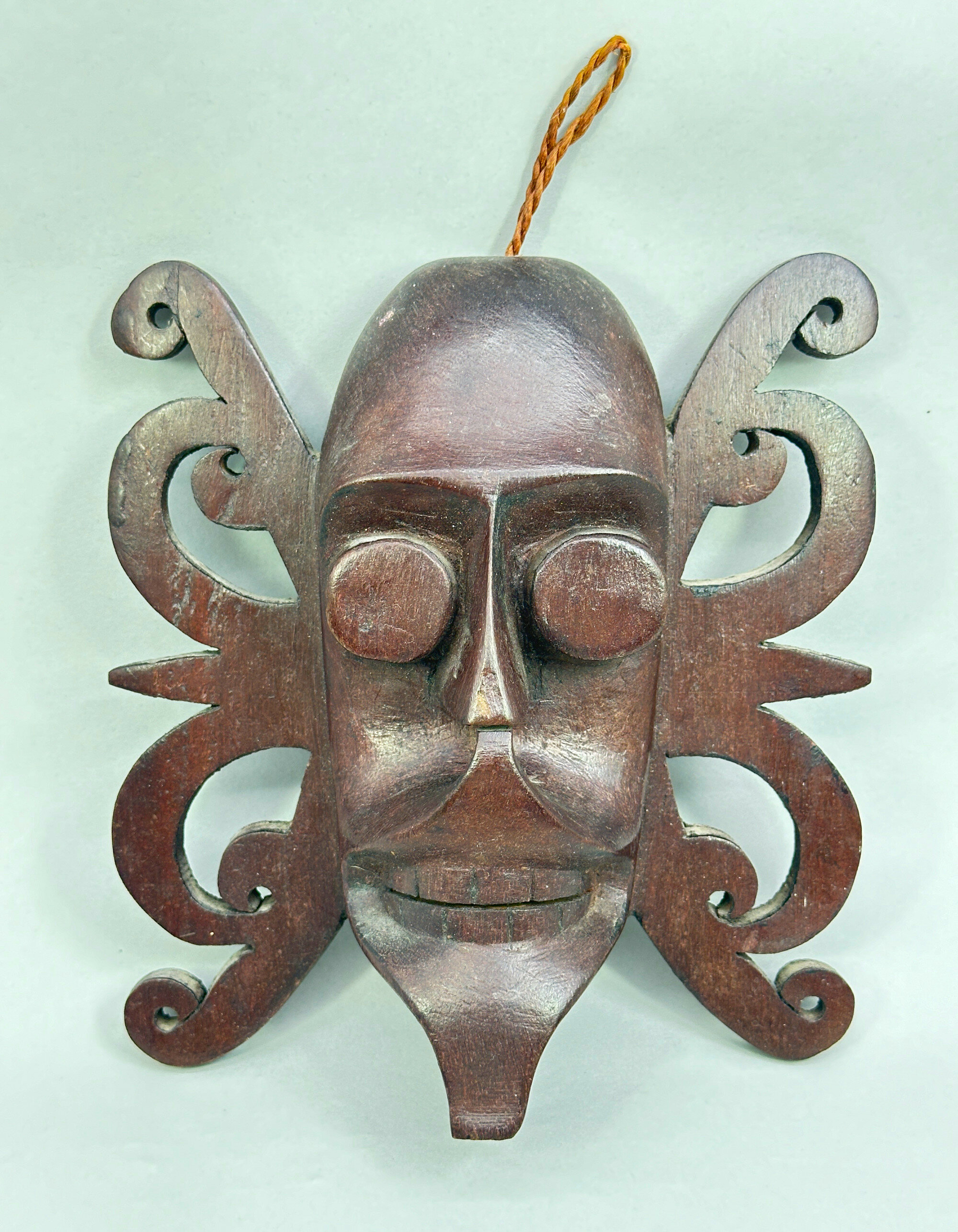
Wood Mask, Borneo late C20th
Price: £25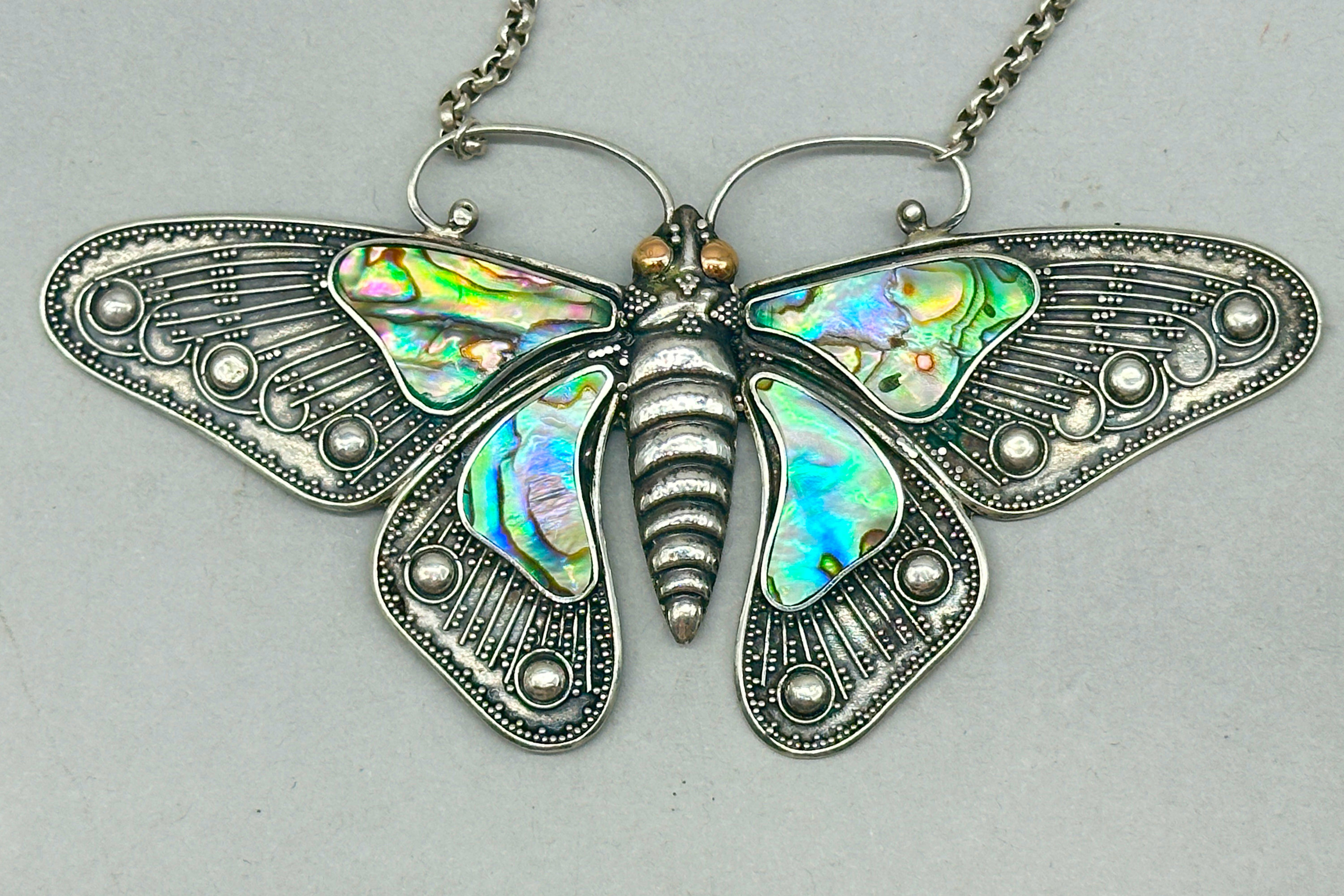
Silver Butterfly form Pendant set with Abalone, Bali, C20th
Price: £95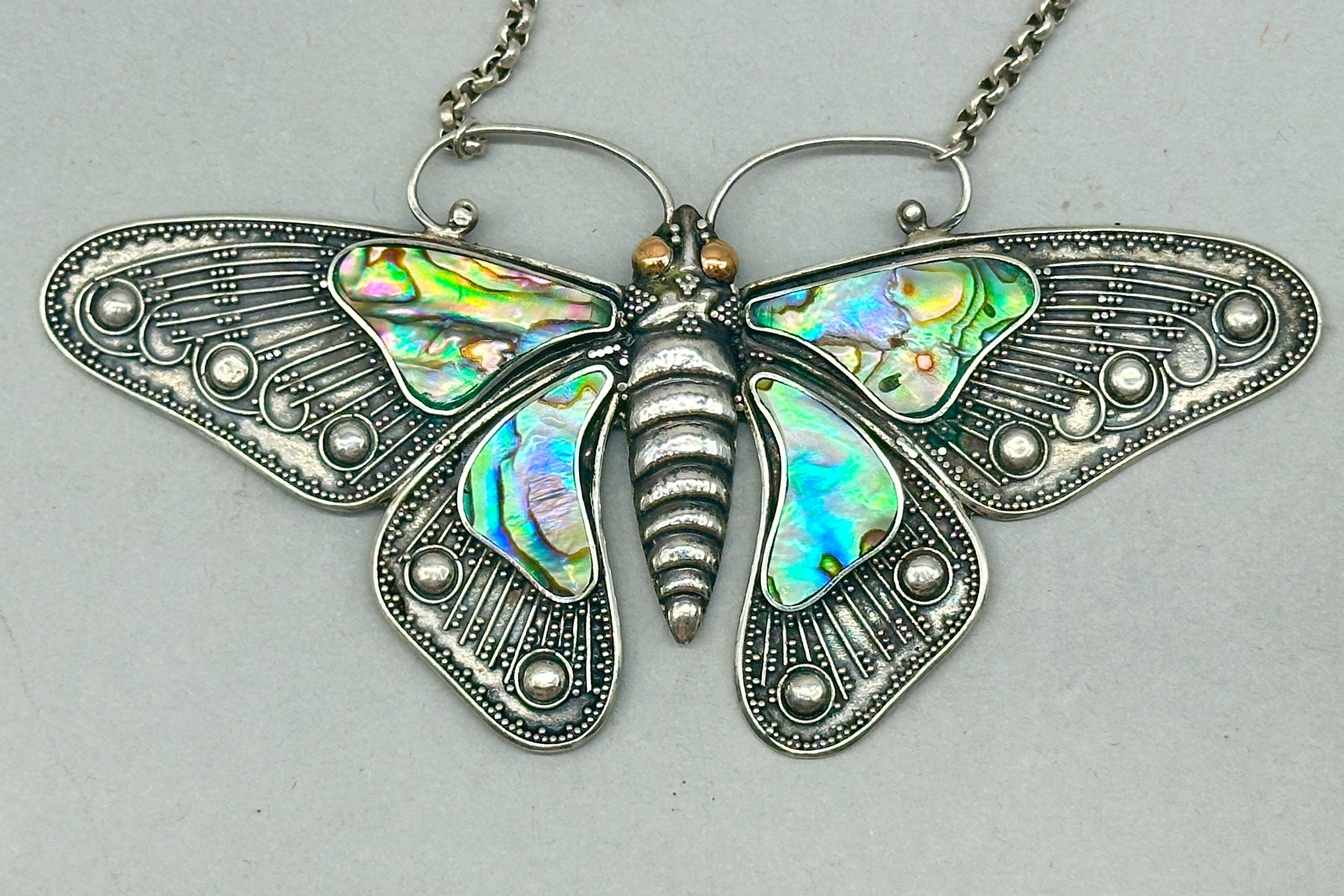
Silver Butterfly form Pendant set with Abalone, Bali, C20th
Price: £95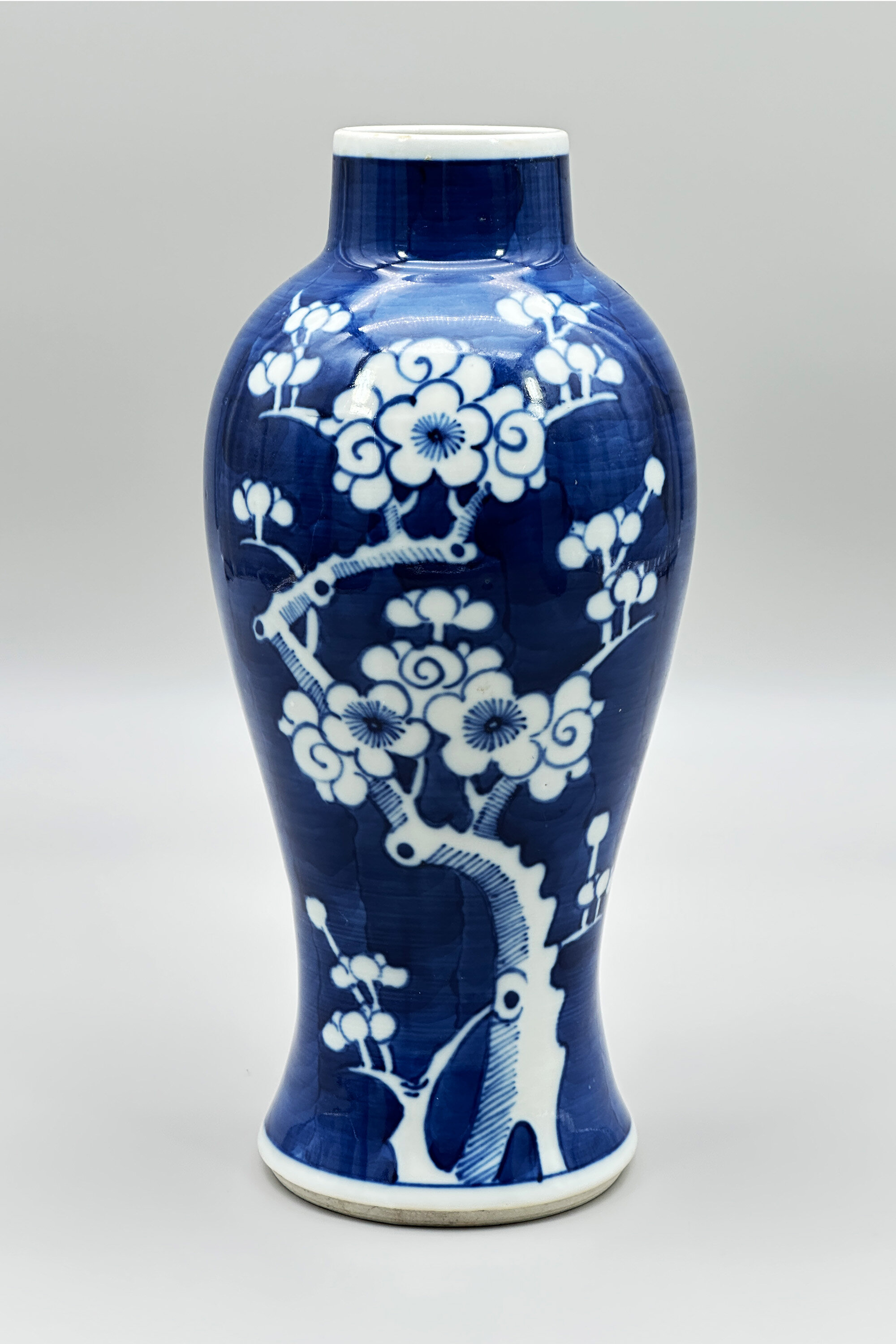
Chinese Blue and White Vase decorated with flowering Prunus circa 1900
Price: £55Flowering prunus or plum blossom is one of the most iconic of the decorative designs used by Chinese potters and first appears in the Kangxi period (1662-1722). Kangxi ginger jars in the pattern were highly prized by Victorian collectors with one example, the legendary ‘Huth’ jar, fetching 5900 guineas, a little over £6000, at auction in 1905, a price equivalent to over a quarter pf a million pounds today. The tree symbolises perseverance and renewal and was usually shown against a pattern of ‘cracked ice, representing the end of Winter and the beginning of Spring. Branches of plum blossom convey the ‘Five Blessings’ : longevity, wealth, health, love of virtue and a peaceful death. The number five was an auspicious number for the Chinese and is reflected in the five petal form of the prunus flower.
Once evolved, the design was continuously repeated by Chinese potters and is even produced today. Many of late nineteenth century pieces display a rather more slapdash interpretation of the pattern as here where the ‘cracked ice’ of the eighteenth century pieces is replaced by the repeated brush strokes of a blue wash ground and the painting of the tree itself is sketchy. The style of decoration and the paste of the foot indicate a circa date to around 1900, but this modest interpretation of centuries old pattern still possesses a charm of its own.
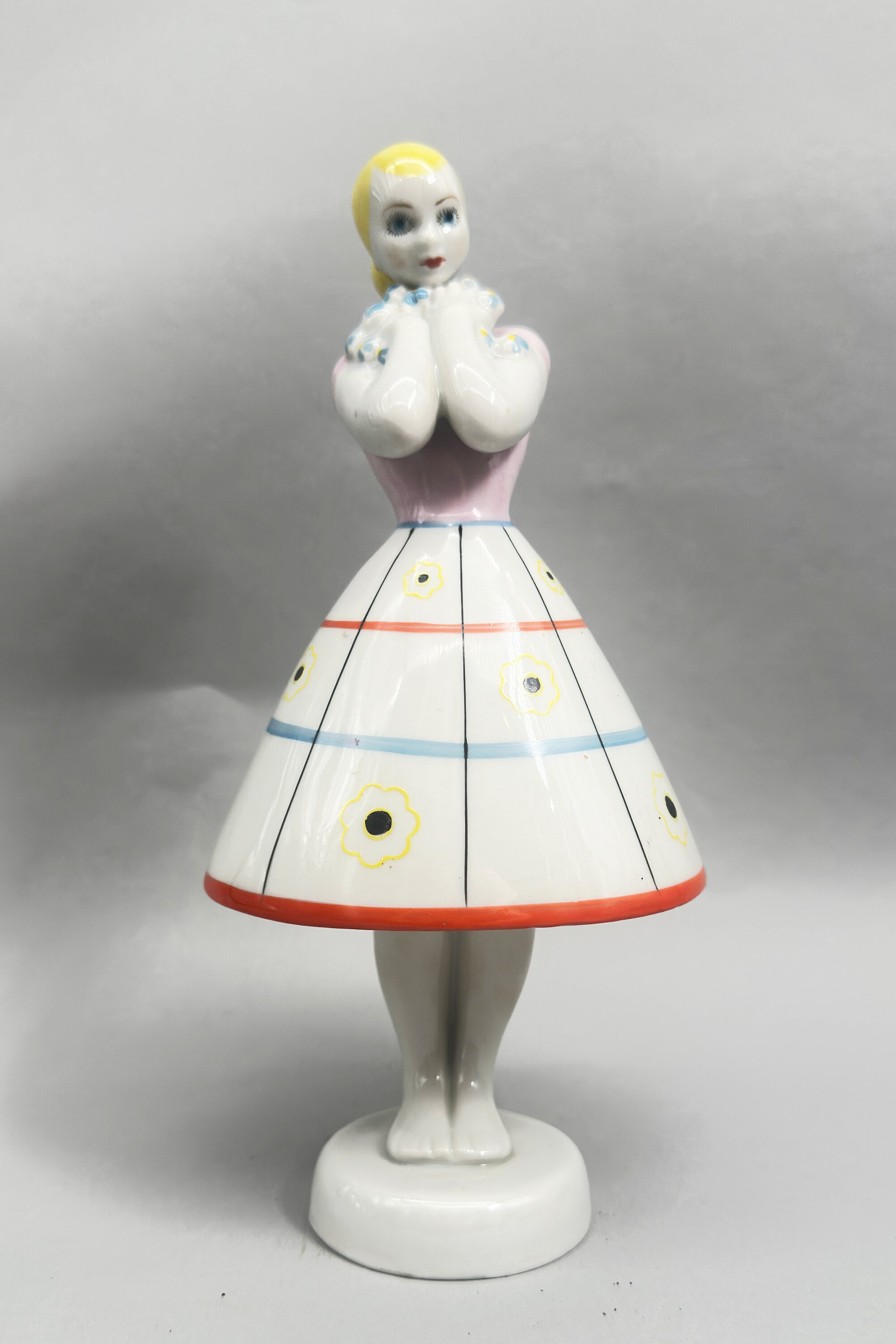
Figurine of a girl, Baranivka Ukraine, 1950s
Price: £55The Baranivka Porcelain Factory, one of Ukraine's oldest porcelain manufacturers, was founded in 1802-1804 by Mykhailo Mezer. Situated at Baranivka, at the time in Poland but now part of Ukraine, the factory was considerably assisted in its development by the discovery of rich clay deposits in the area. Production was continuous even during the Soviet era until the early twenty first century. Both the angular modelling and the abstract decoration of this piece point to a dating in the 1950s when production would have revived after the second world war and more contemporary styles adopted.
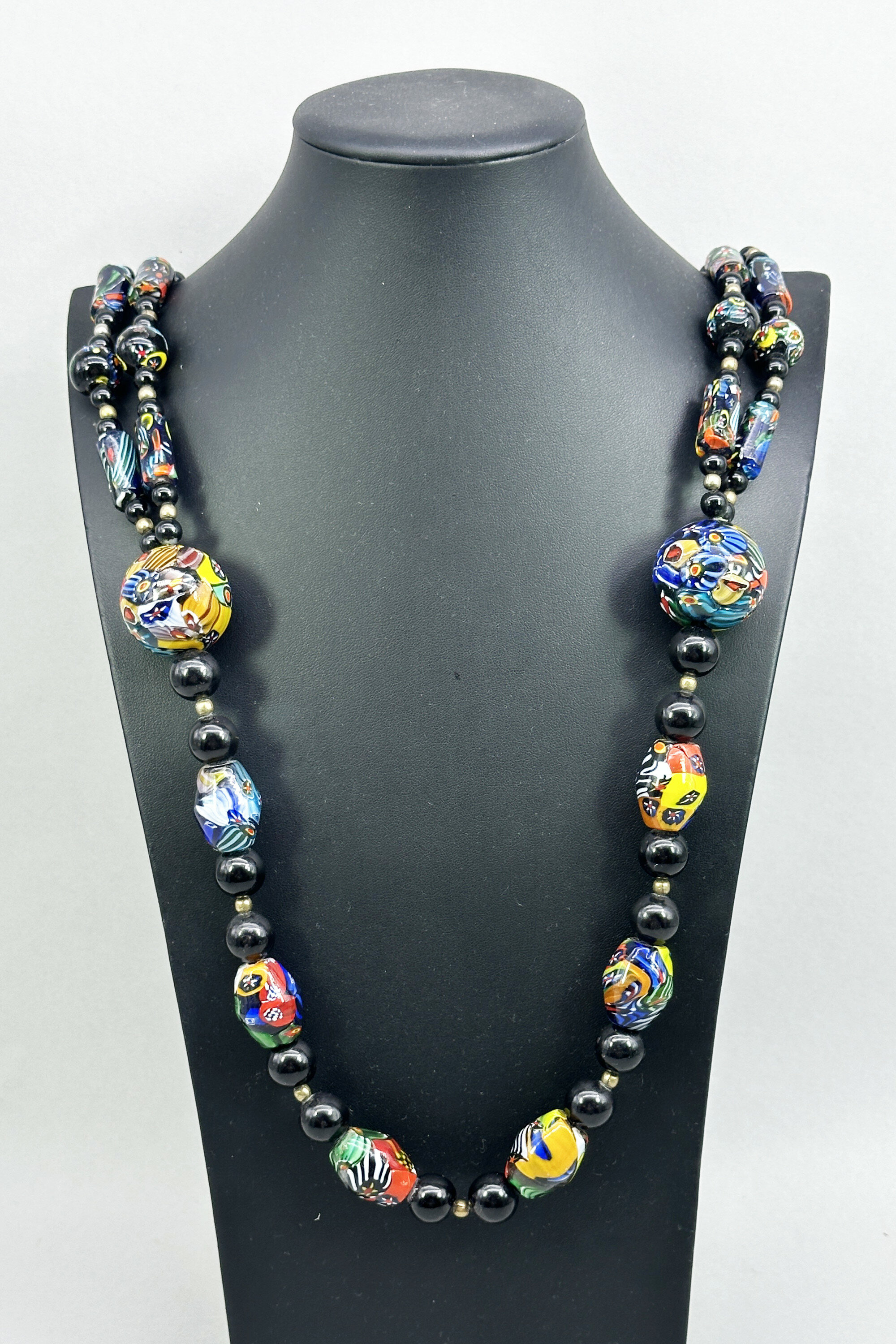
Monumental Mille Fiore glass bead necklace c1970
Price: £175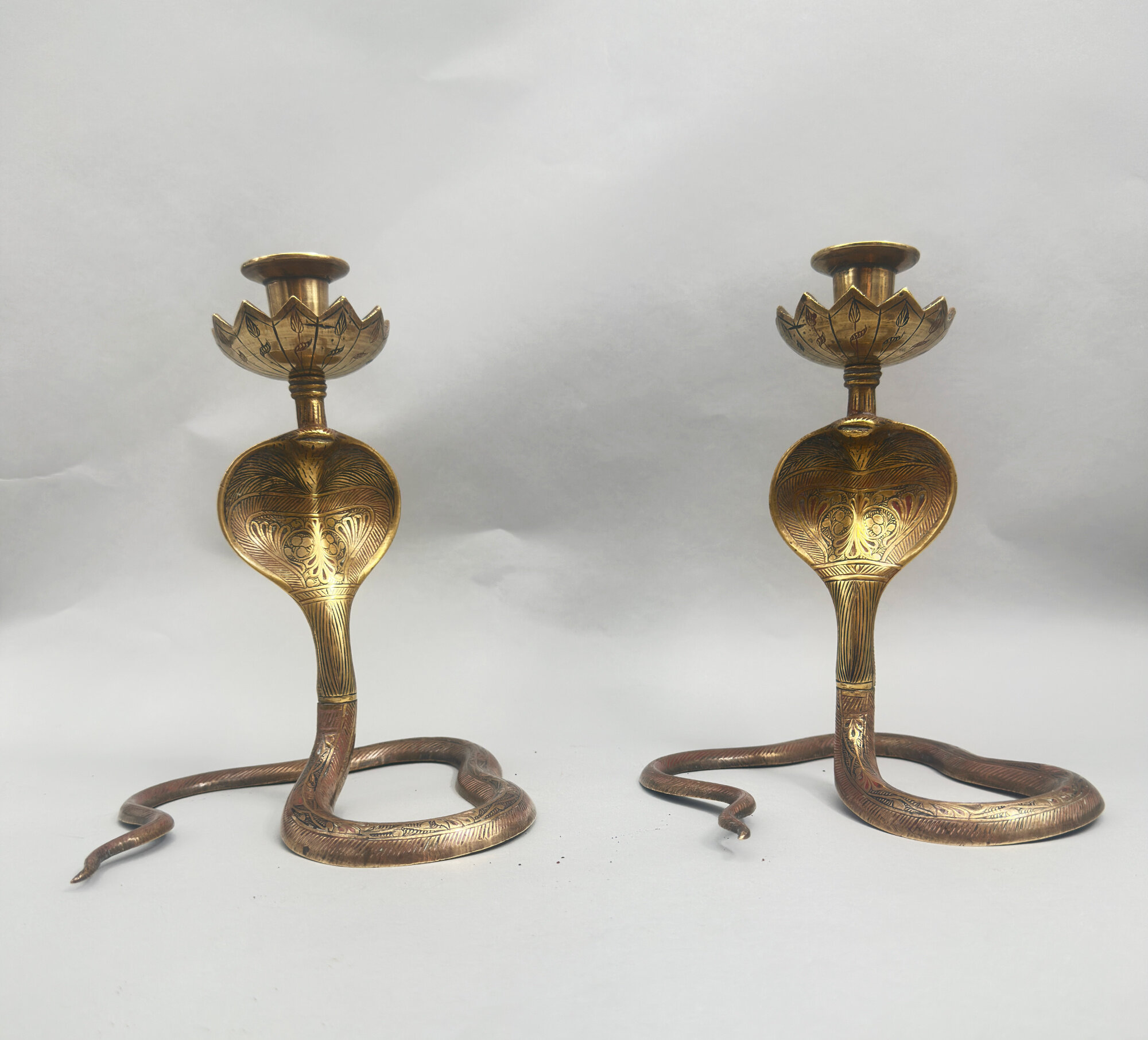
Pair of Indian brass candlesticks c1900
Price: £175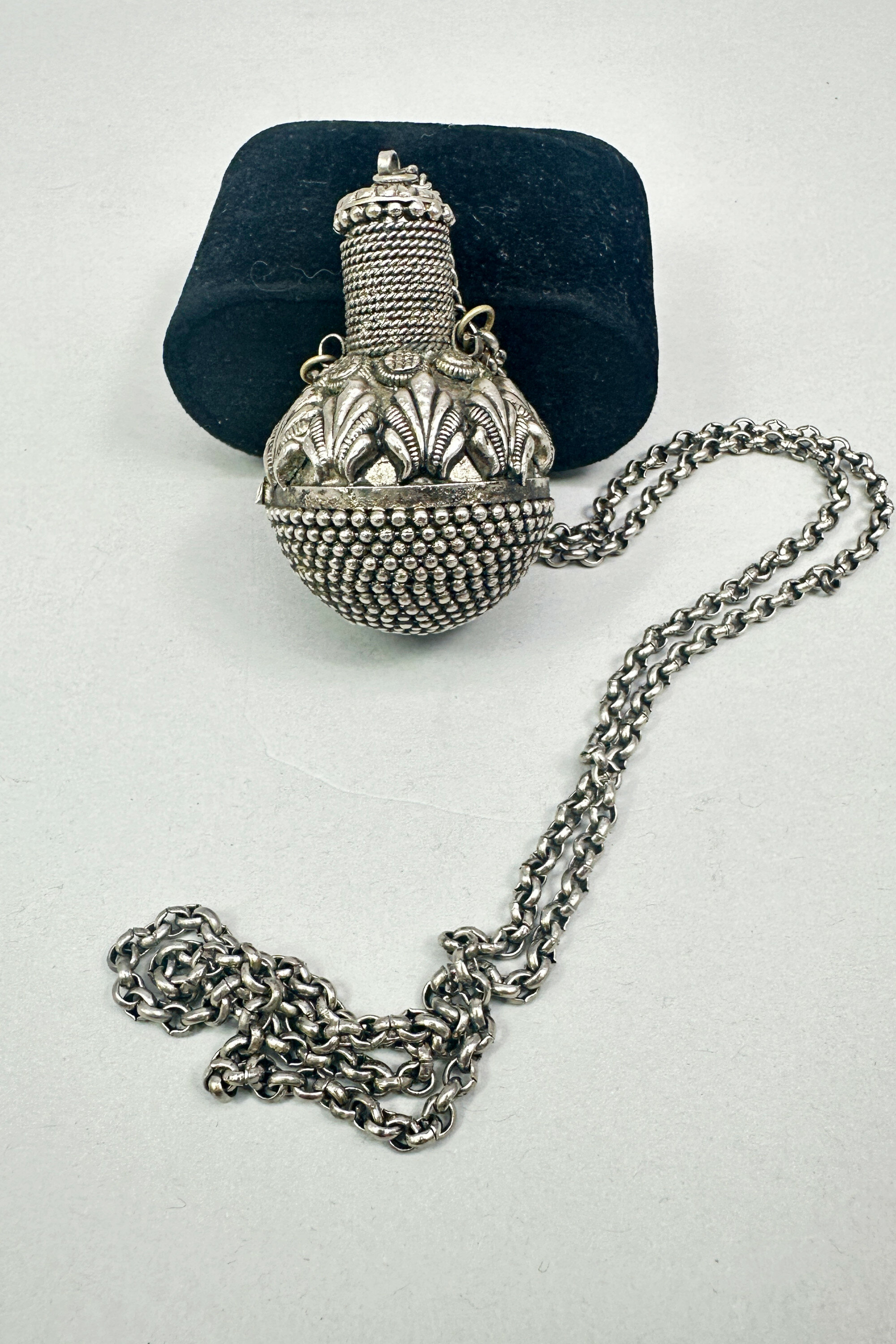
Silver metal Perfume Bottle Necklace, probably Indian early C20th
Price: £55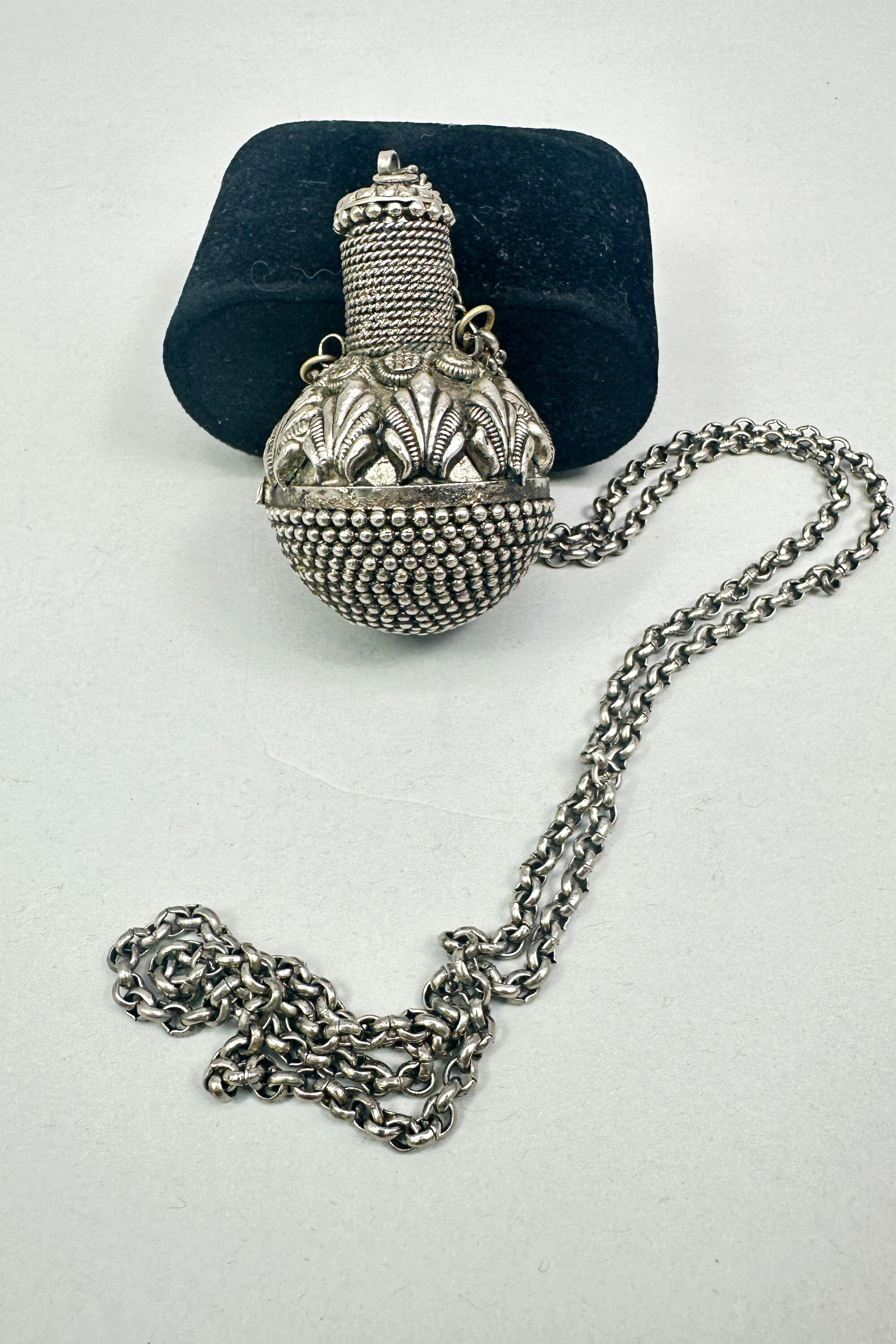
Silver metal Perfume Bottle Necklace, probably Indian early C20th
Price: £55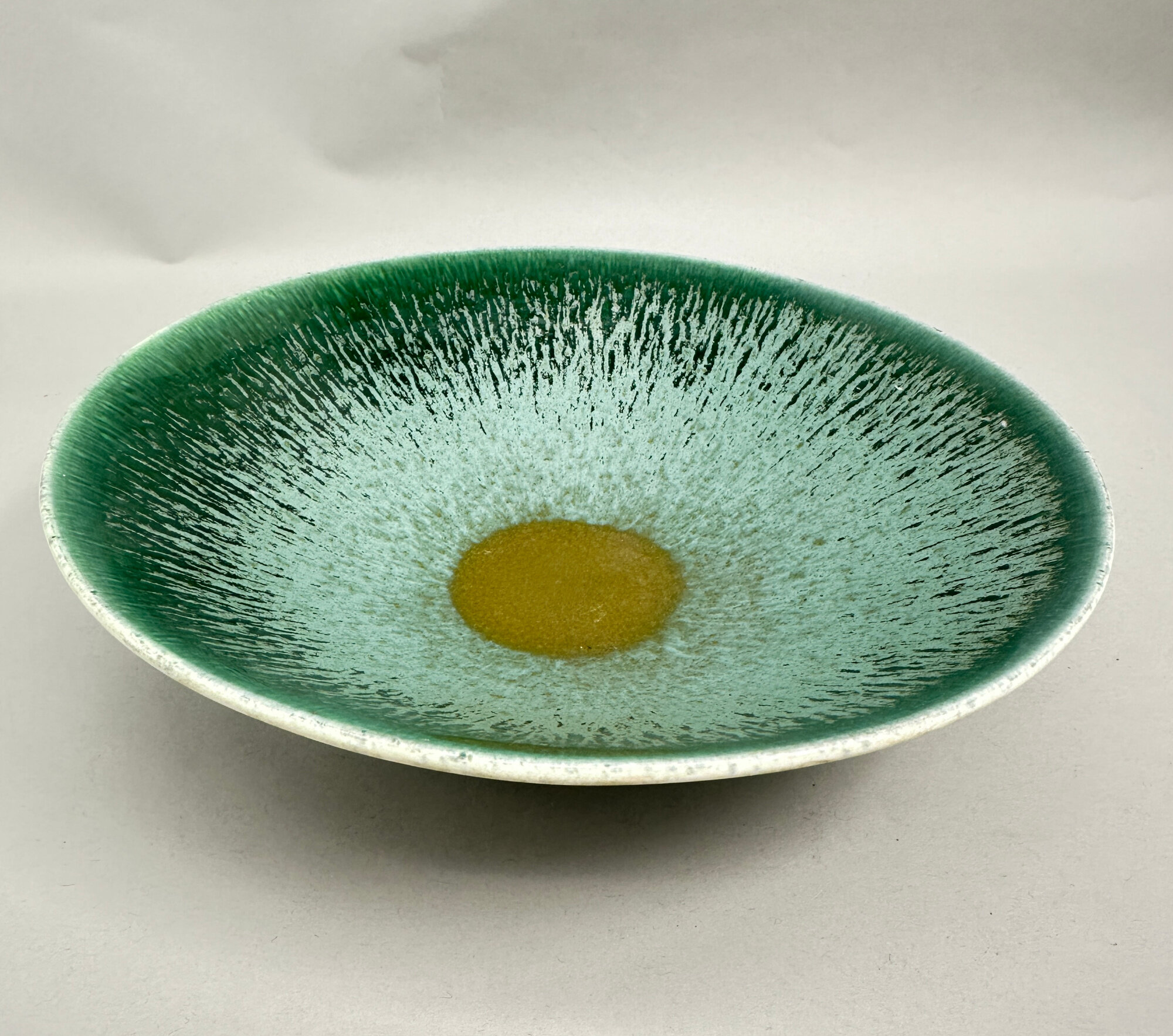
Poole Pottery Studio Bowl with splash glazes, 1960s
Price: £45Both the form and some of the glaze effects here reflect much earlier Chinese ceramic pieces which is fully consistent with the ‘studio pottery’ style of this piece. Poole Pottery established an art pottery studio within their factory in 1958 which, following the Scandinavian model, produced high quality studio ceramics alongside designs for new ranges until 1966 when they were replaced by the new Delphis, Atlantis and Aegean pottery lines which began production a year later. Dating here is therefore fairly precise and this bowl is an excellent example of ‘studio’ wares produced which could often equal the work of other independent studio potteries.
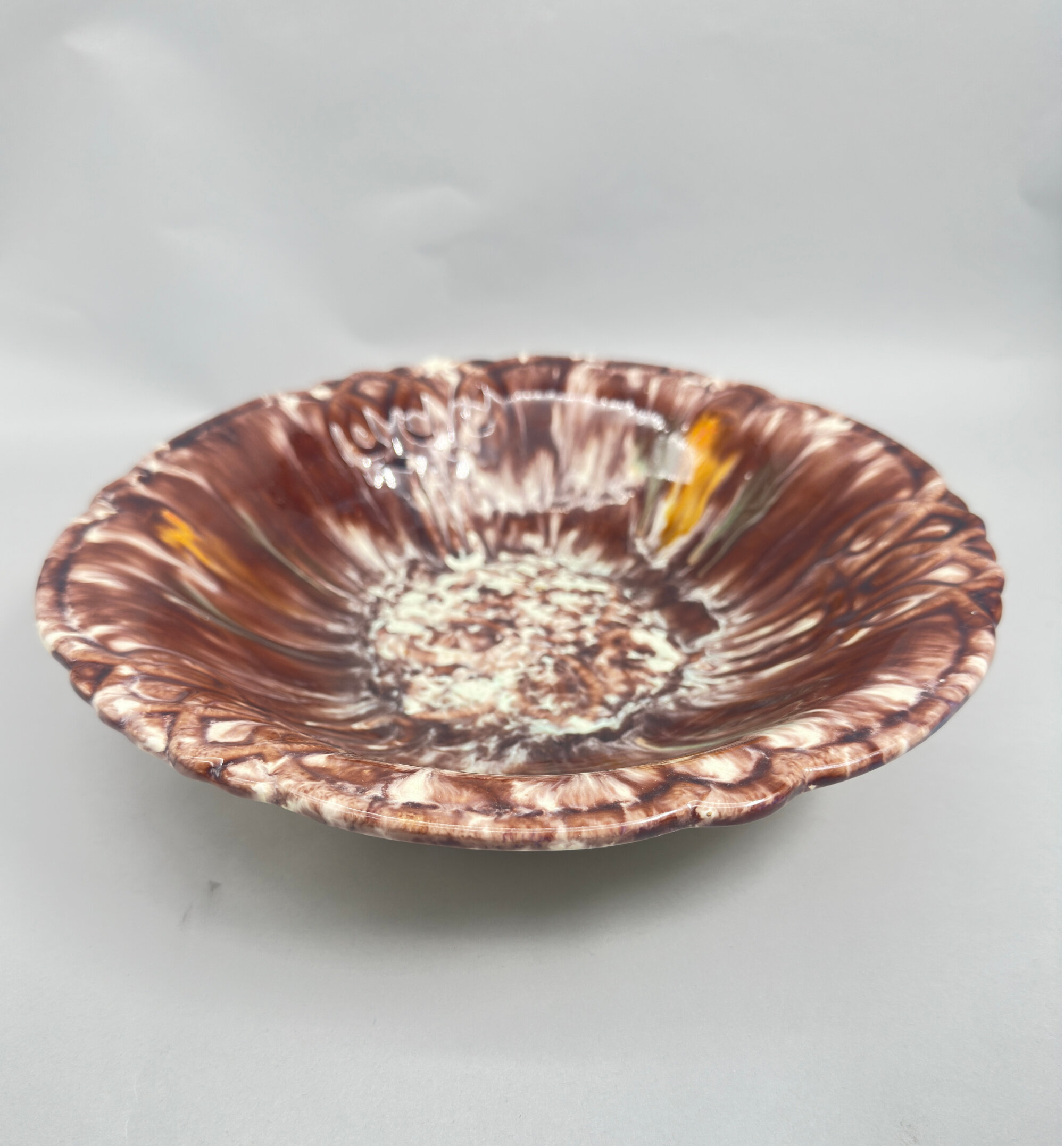
Majolica Footed Fruit Bowl, Germany, 1930s
Price: £55
Pair of Royal Worcester Grainger and Co Vases, date mark for 1902
Price: £150The influence of the Art Nouveau movement, with its emphasis on organic and plant forms, is clearly seen here. The vases date to the early 1900s and were made by the ‘Grainger and Co’ branch of the celebrated Royal Worcester factory. The first porcelain factory at Worcester was set up in 1751 by John Wall (a doctor) and William Davis (an apothecary), along with 14 other businessmen. Fifty years later in 1801 Thomas Grainger (1783–1839) started a rival company ‘Grainger’s Worcester Porcelain’ and during the nineteenth century both companies traded successfully. However following the death of George Grainger, the son of Thomas Grainger, in 1889 the Grainger factory was sold to Royal Worcester who continued manufacture on its old rival firm’s St.Martin’s Gate site until finally closing the works in 1902. Ivory style porcelains were one of the specialities of this brief manufacturing period and the date mark ‘L’ which appears on these vases is for the year 1902, just before the two concerns were completely merged.
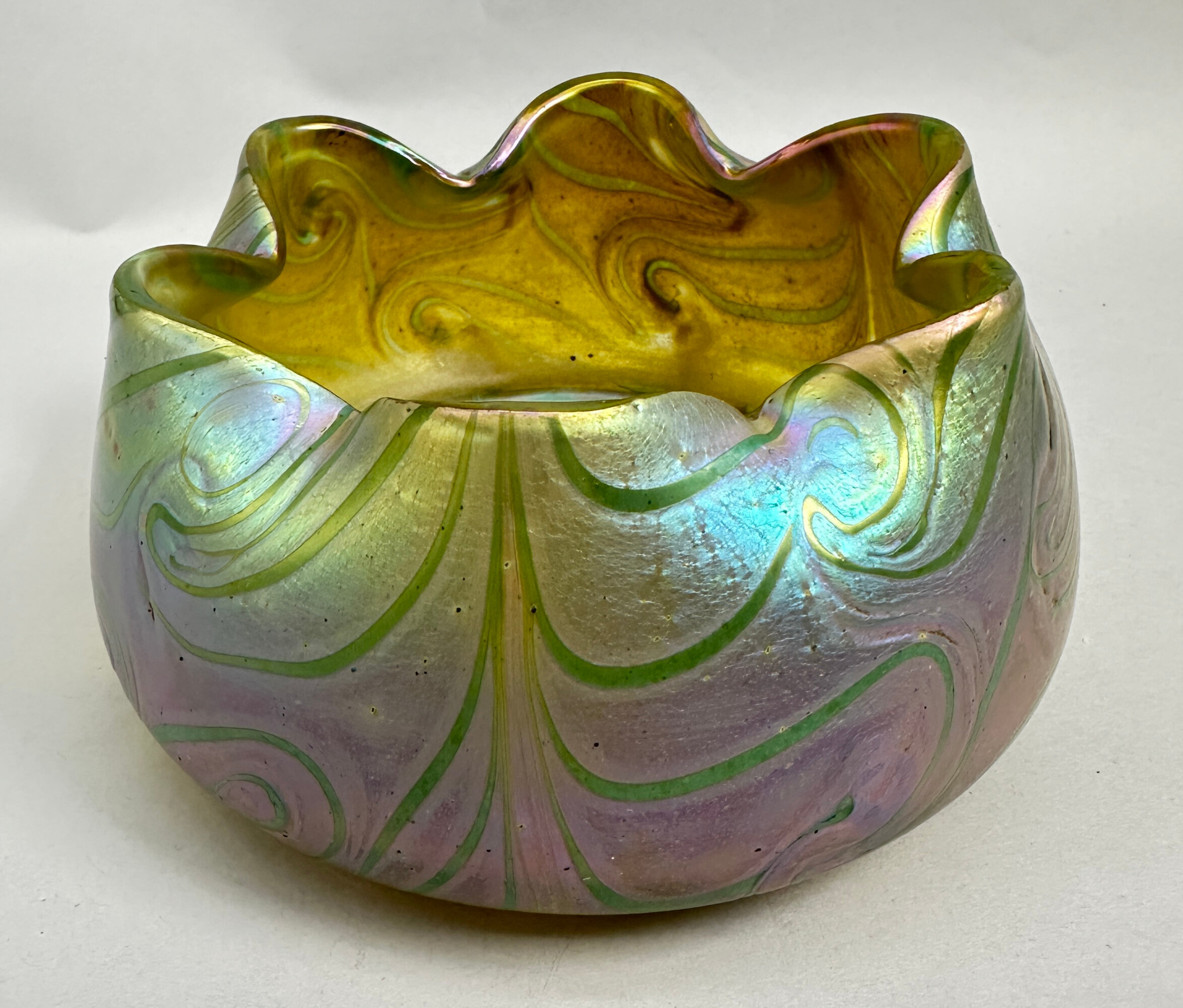
Loetz style glass Bowl, early C20th
Price: £110Most of the original Loetz pieces were not signed and there were many contemporary manufacturers making pieces in a similar style. There are, furthermore, modern reproductions. The attribution ‘Loetz’, is, inevitably, generously and loosely applied but sometimes true certainty is hard to achieve. Much information and assistance can be obtained from the website Loetz.com. On that basis this attractive bowl with its crimped rim and wavy line design on a purple ground is best regarded as Loetz style but probably contemporary with the output of the Loetz factory itself. It has great decorative appeal nevertheless.
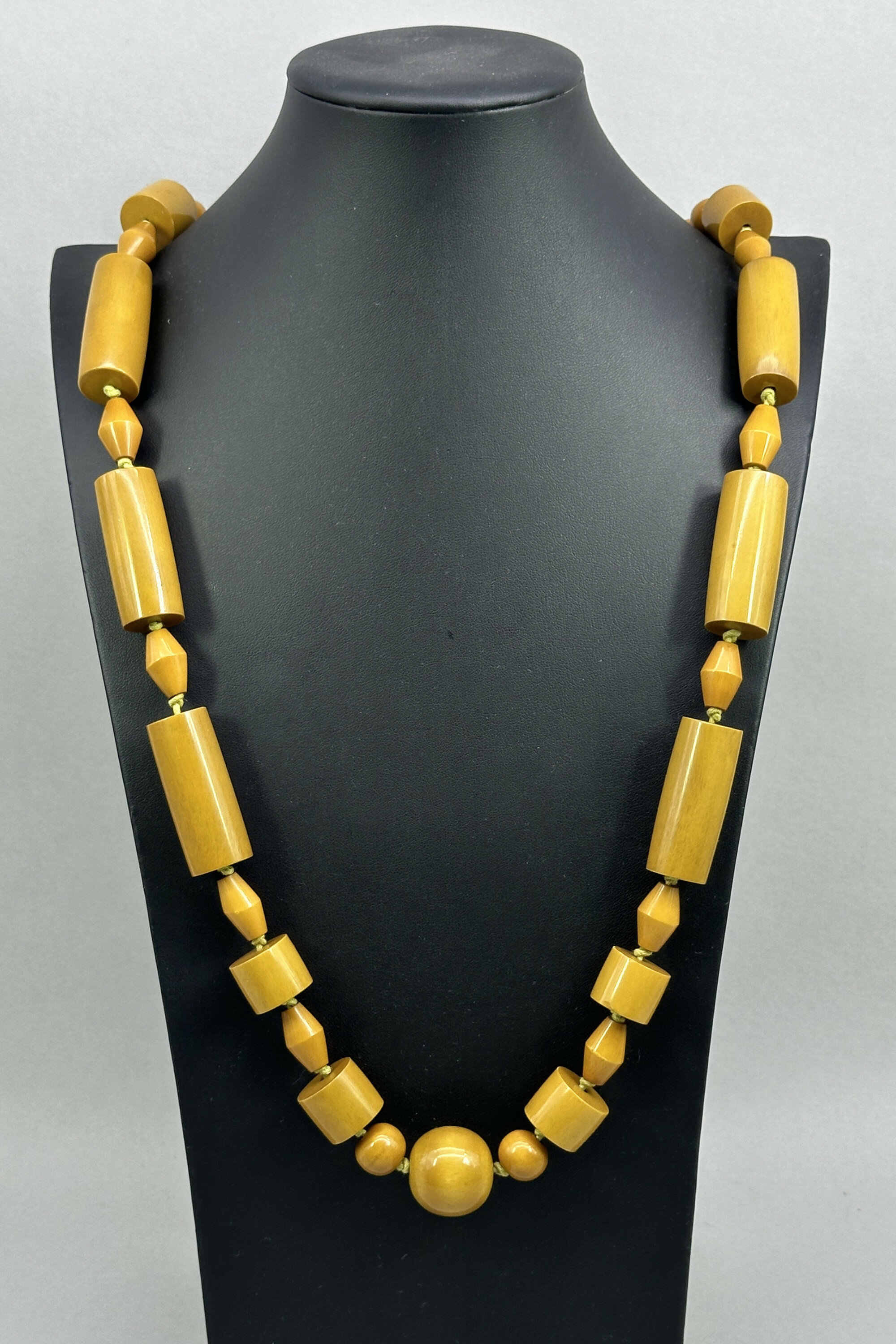
Art Deco Catalin Bakelite necklace, American c1930
Price: £125
Art Deco style beaker form Vase, probably Beswick, mid C20th
Price: £35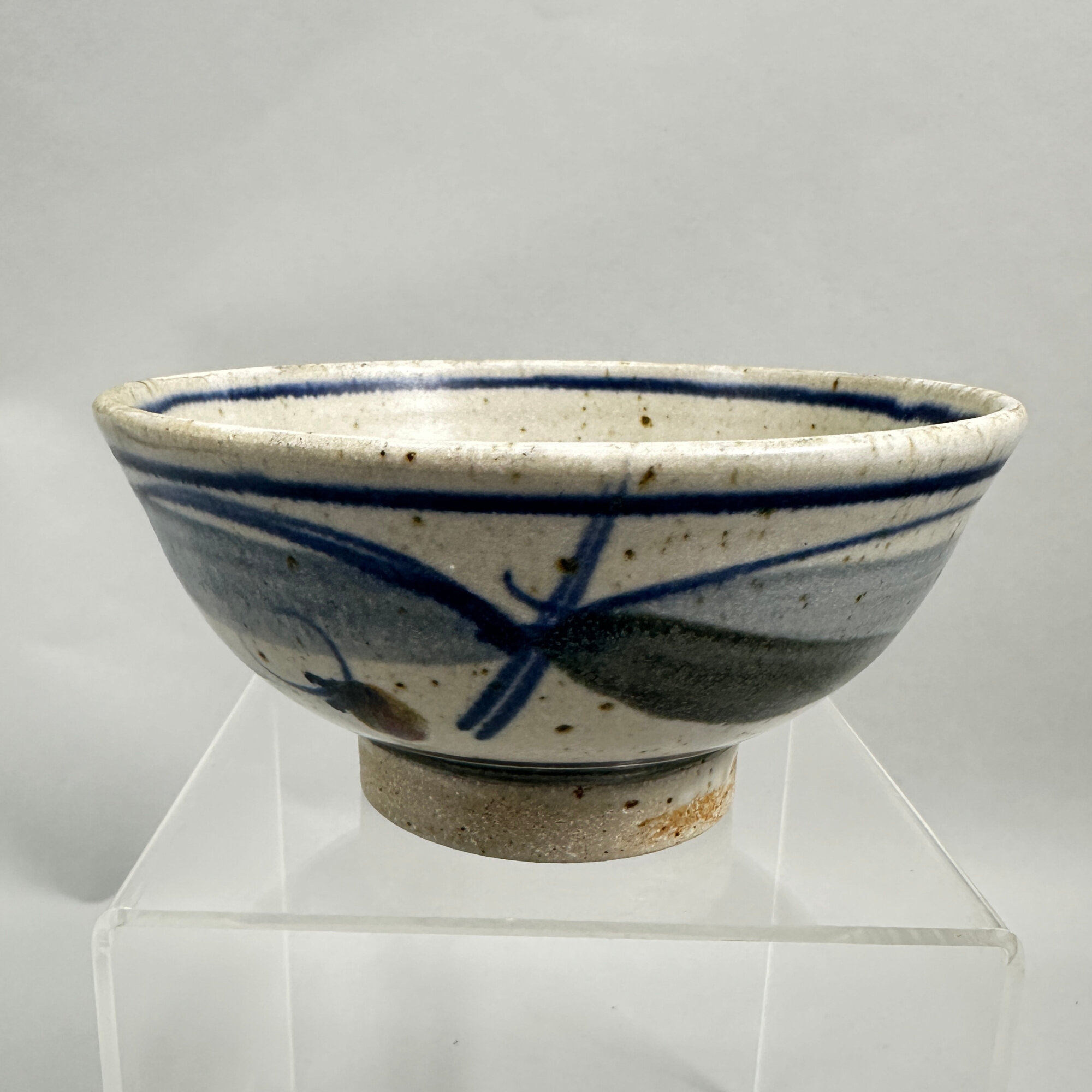
Studio Pottery Bowl, possibly Derek Clarkson (1928-2013) with impressed mark, C20th
Price: £55While it is not absolutely certain the mark on this piece is possibly that of Derek Clarkson (1928-2013). Clarkson trained at the Manchester college of Art between 1944-47 and Burnley School of Art from 1959-61 and then combined a successful lecturing career with the making of his own work which is now to be found in international and private collections including the Victoria and Albert Museum, London. In 1980 he retired from lecturing to focus on his work as a potter, continuing to produce pieces of great skill and attraction until his death in 2013. There are other pieces signed by him which strongly resemble the bowl here (see images 8,9) making it a possibility that this is his work. Certainly, the potter who created this piece and impressed his mark at the bottom was clearly accomplished and this bowl is more than worthy to stand comparison with pieces by more famous contemporaries.
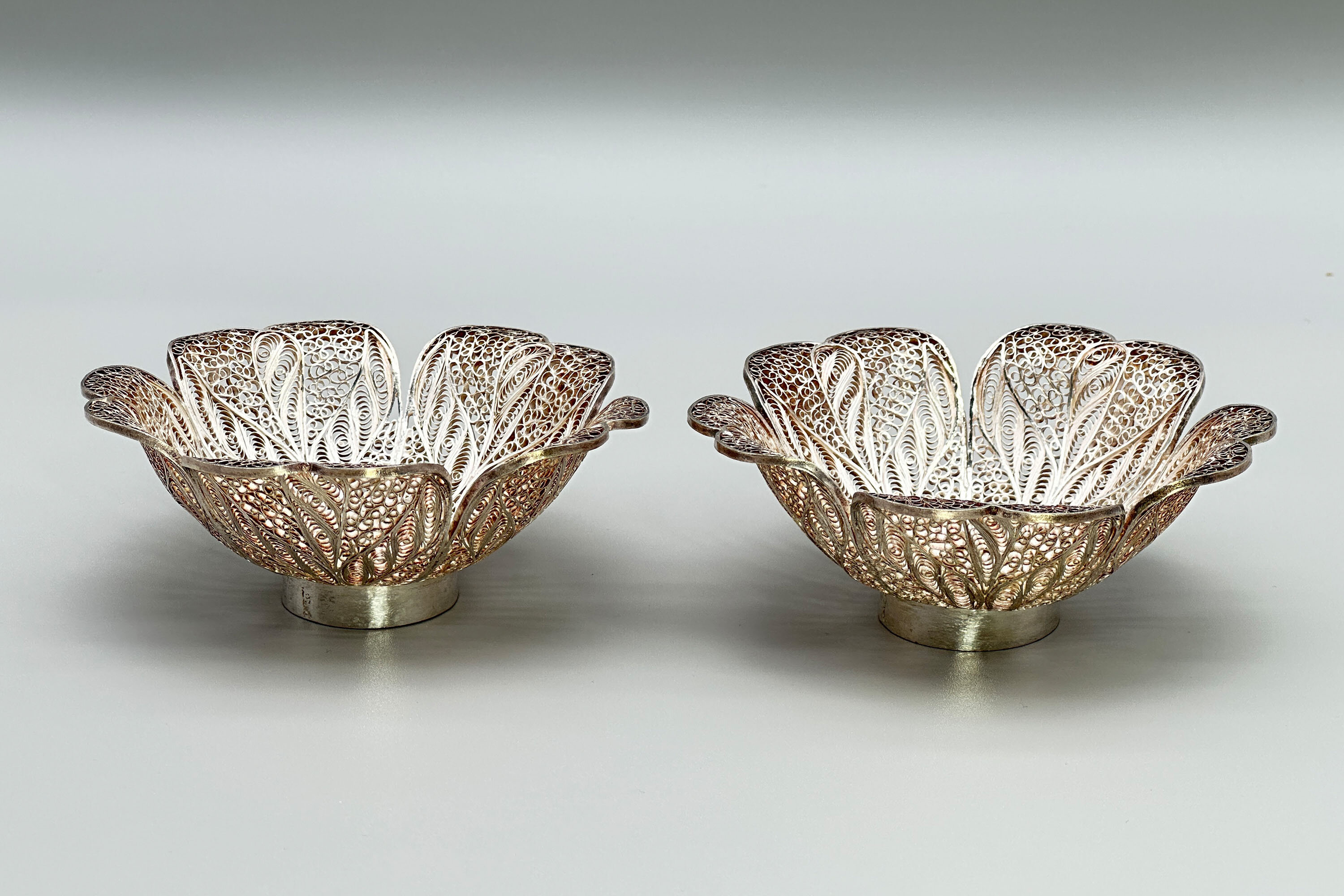
Pair of Silver Filigree Bonbonnieres, probably continental circa 1900
Price: £110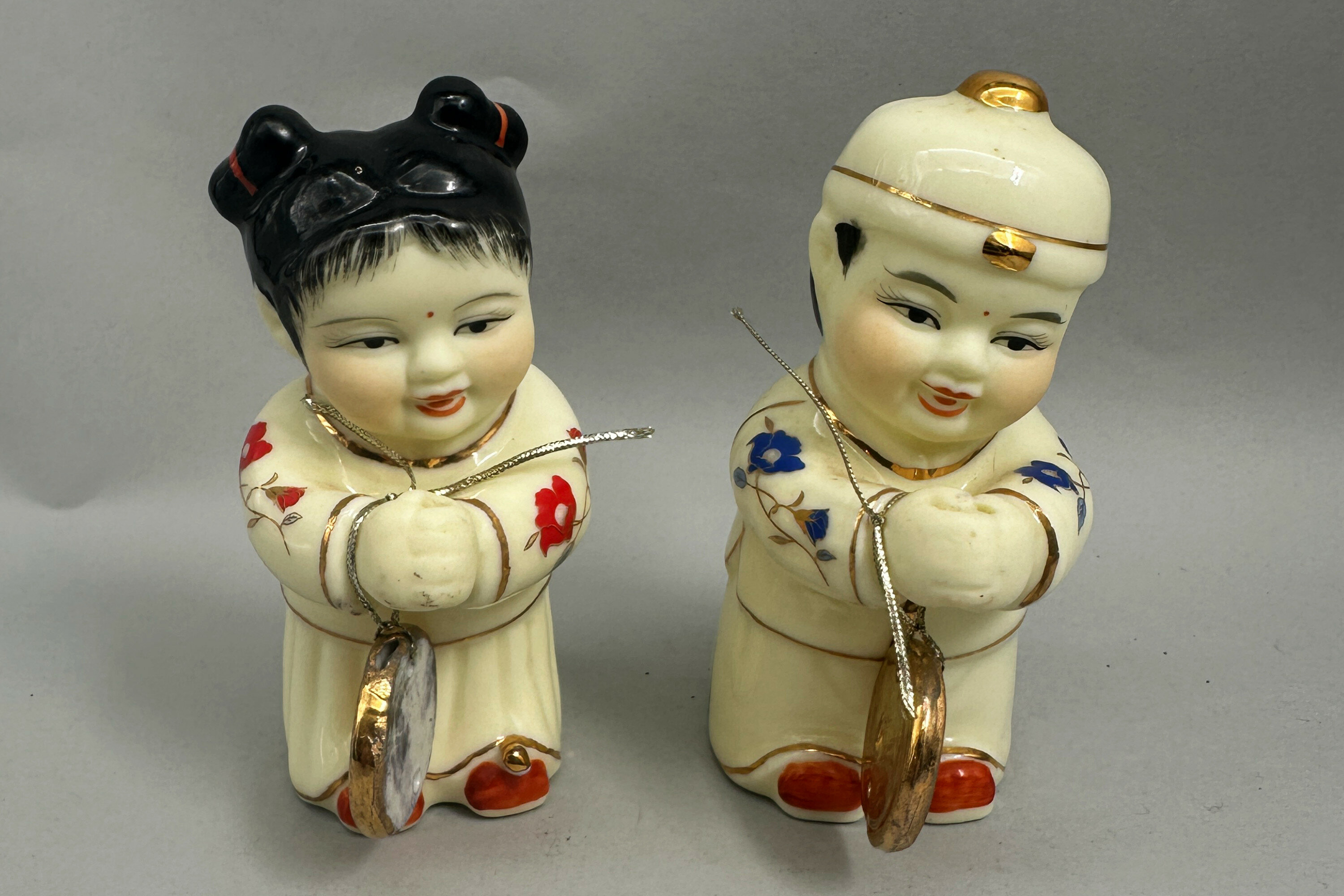
Decorative pair of Chinese ceramic figures of children, Yunu and Jintong , late C20th
Price: £45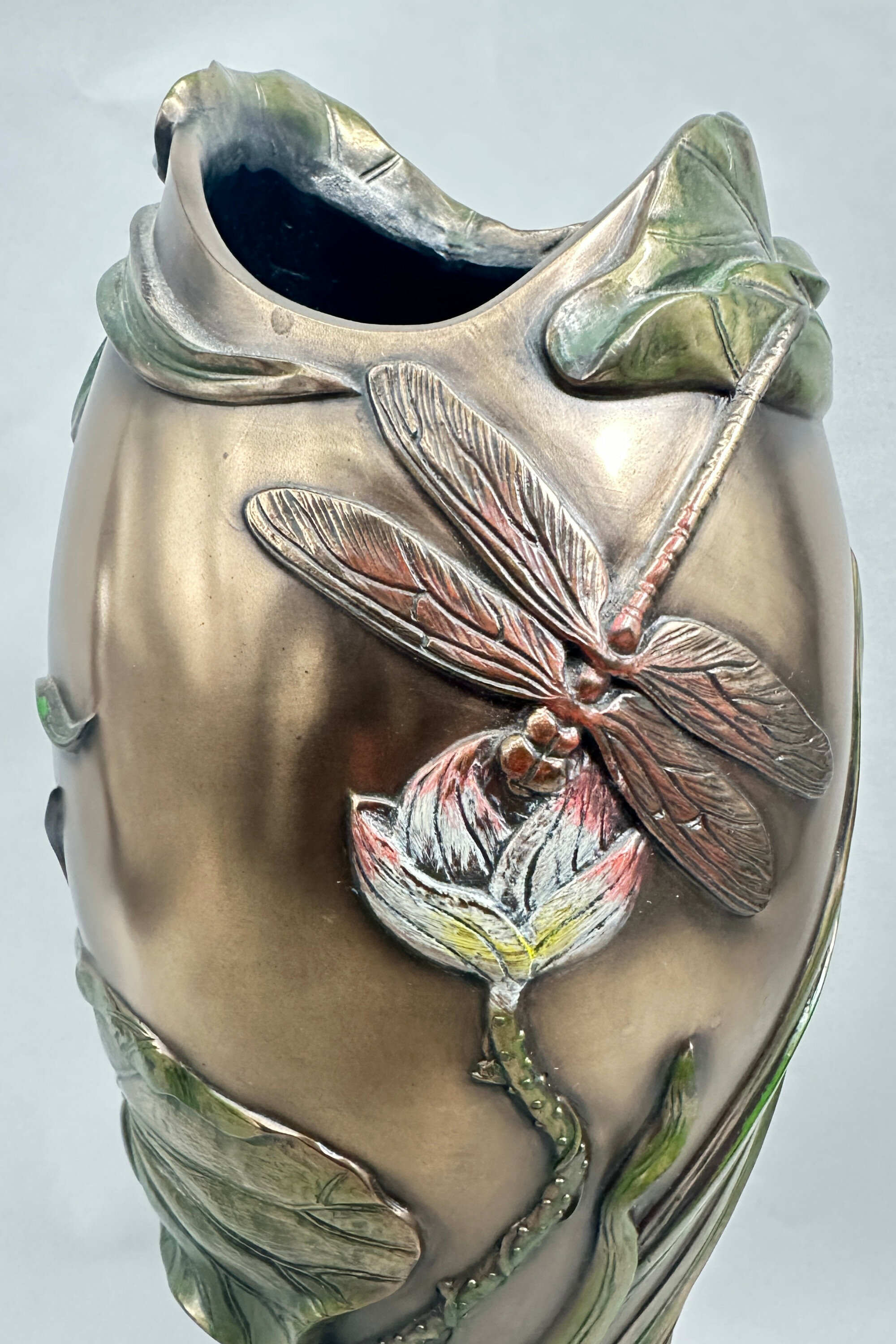
Past Times Art Nouveau Style Vase, Veronese Collection, 2004
Price: £45‘Past Times’ was founded in 1986 by John Beale, at first as a mail order company but then trading from physical stores and developing into a business which enjoyed enormous popularity with over one hundred shops in the early 2000s. The stock was focused on retro and vintage style items also including a wide range of licensed products, such as Harry Potter and Beatrix Potter merchandise. Badly impacted by the recession in 2008 it went into administration in 2012 and was bought by W.H.Smith a year later leading to the disappearance of its products from the marketplace.
This ‘Art Nouveau’ vase can be seen as an example of their range at its best. Manufactured with care it presents an appealing souvenir of the era it aims to recreate at a rather more affordable price than the authentic originals.
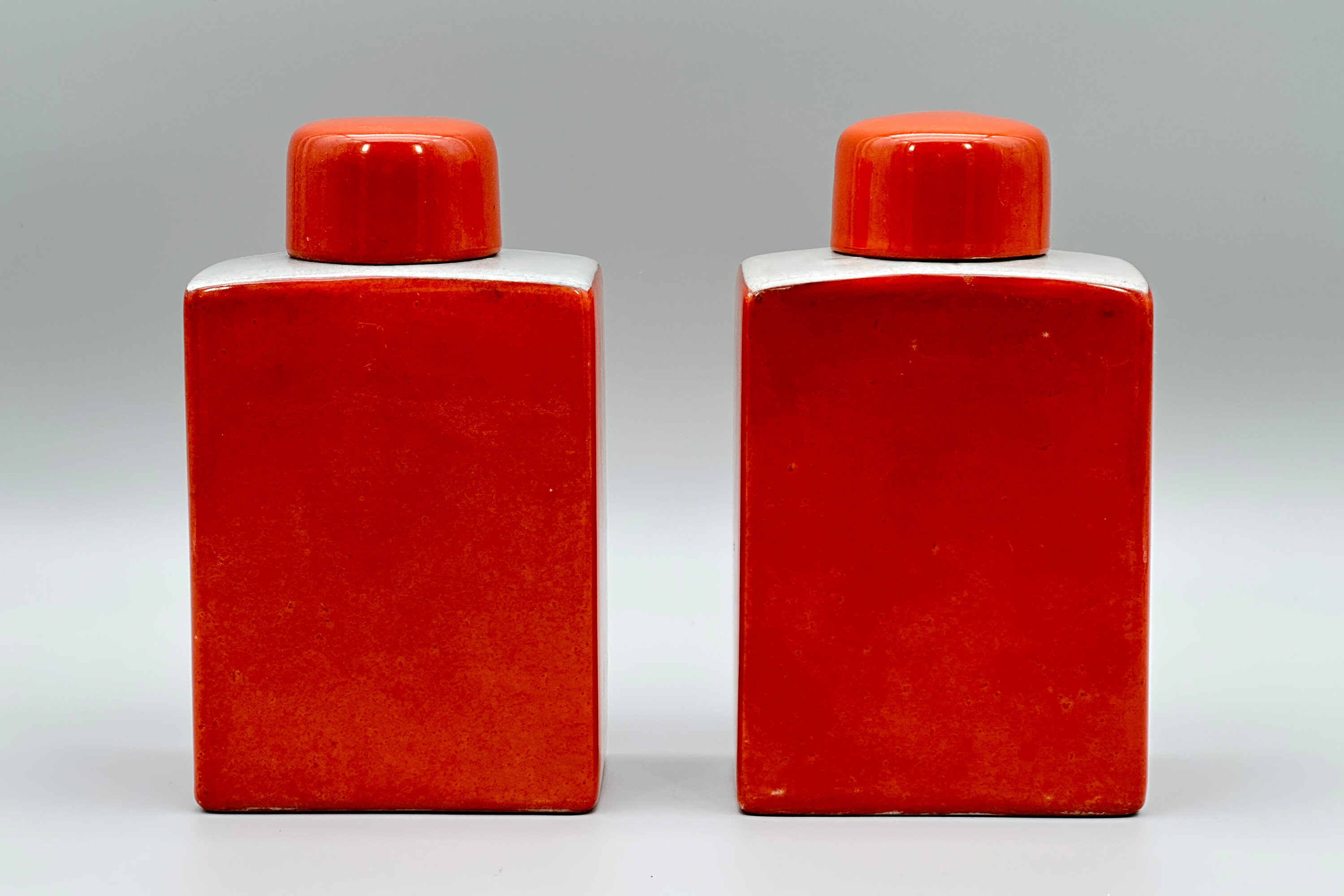
Pair of Orange Glazed Flasks and Covers, Fabienne Jouvin Paris, C20th
Price: £150The French designer Fabienne Jouvin (see image 9) graduated from the superior school of applied arts Duperré in 1985. Since then, she has travelled the world collecting designs for pieces sold and exhibited under her name internationally, with a studio based in Paris. On her website, she writes “From my travels - from Tokyo to The Habana, from the streets of Paris to the sea bed of The Maldives - I bring back sketchbooks, pads of notes, drawings and collages: hispanic or contempory architectures, faces reminding those of Piero Della Francesca, enigmatic objects non identified... These spontaneous sketchbooks give rise to unique pieces and editions painting, textile, porcelain, cloisonné...”. Her first exhibition was in 1989 and in 1996 she began an association with the firm ‘Asiatides’ allowing her to create pieces made in China and Thailand and utilising their designs and techniques.
This pair of flasks, possibly intended as tea caddies, are typical of her ability to give a ‘twist’ to the pieces from which she draws her inspiration. The shape is Chinese from the seventeenth century (see image 10), while the iron red colour is found on Chinese pieces two hundred or more years later. Combining this with a white ‘crackle glaze’, also well known from Chinese ceramics, was Jouvin’s own idea completing the mix of ancient and modern. Marked as from the Asiatides range with the stylised ‘A’, pieces like these are no longer available currently implying that they were probably made early on in her association with the firm and now have a uniqueness of their own.
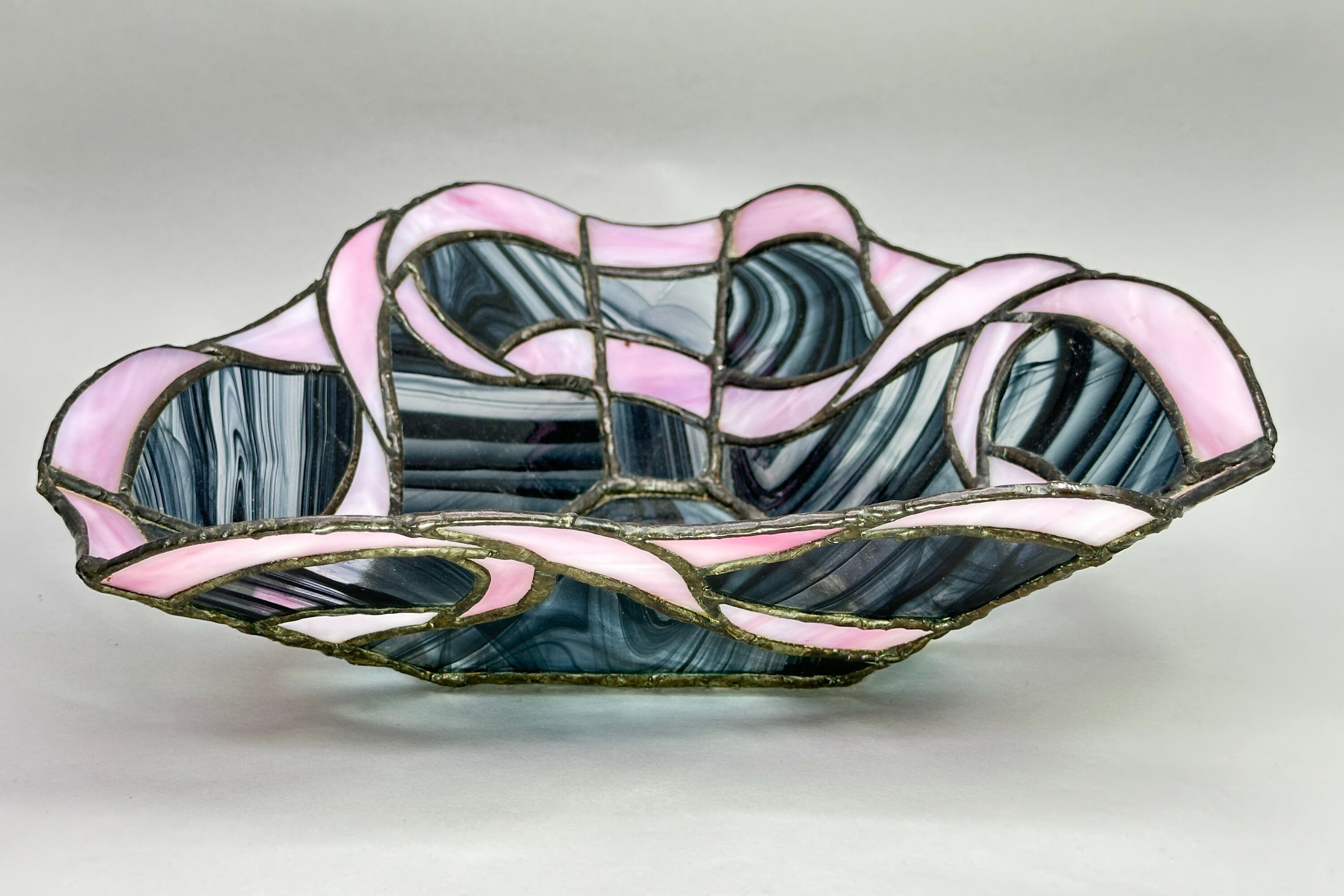
Leaded Slag Glass Bowl, C20th
Price: £45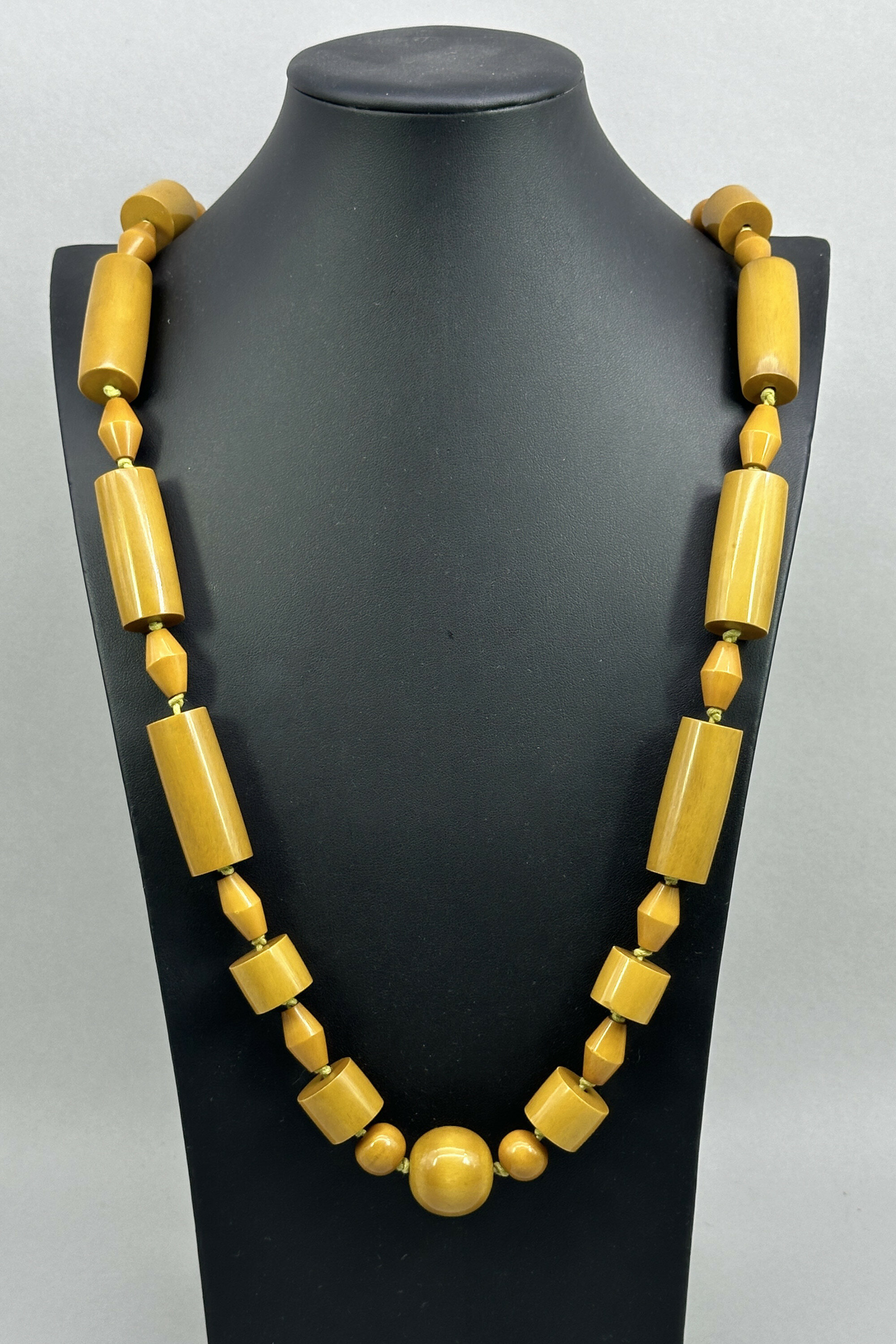
Art Deco Catalin Bakelite necklace, American c1930
Price: £125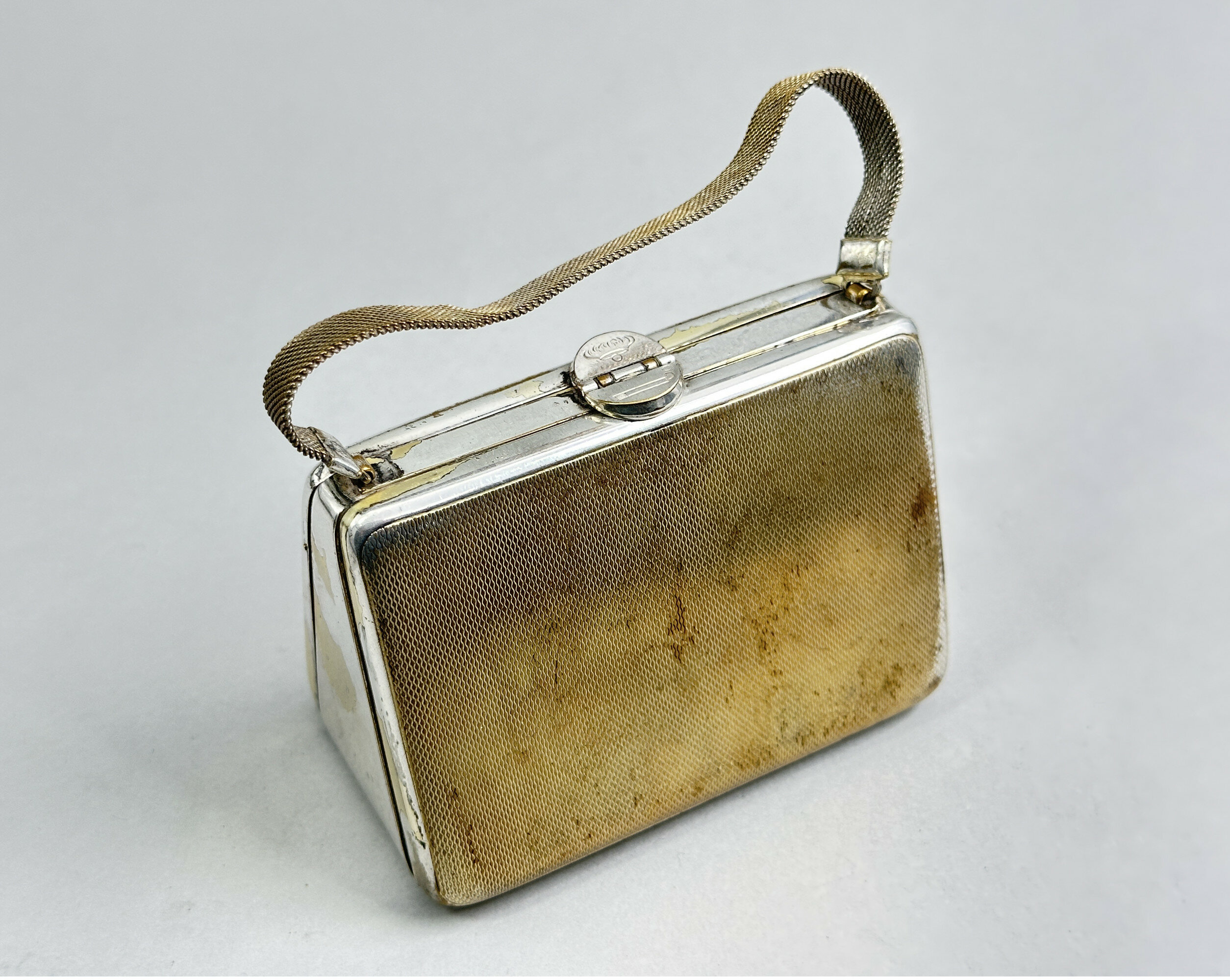
Double sided minaudiere wrist bag 1920
Price: £20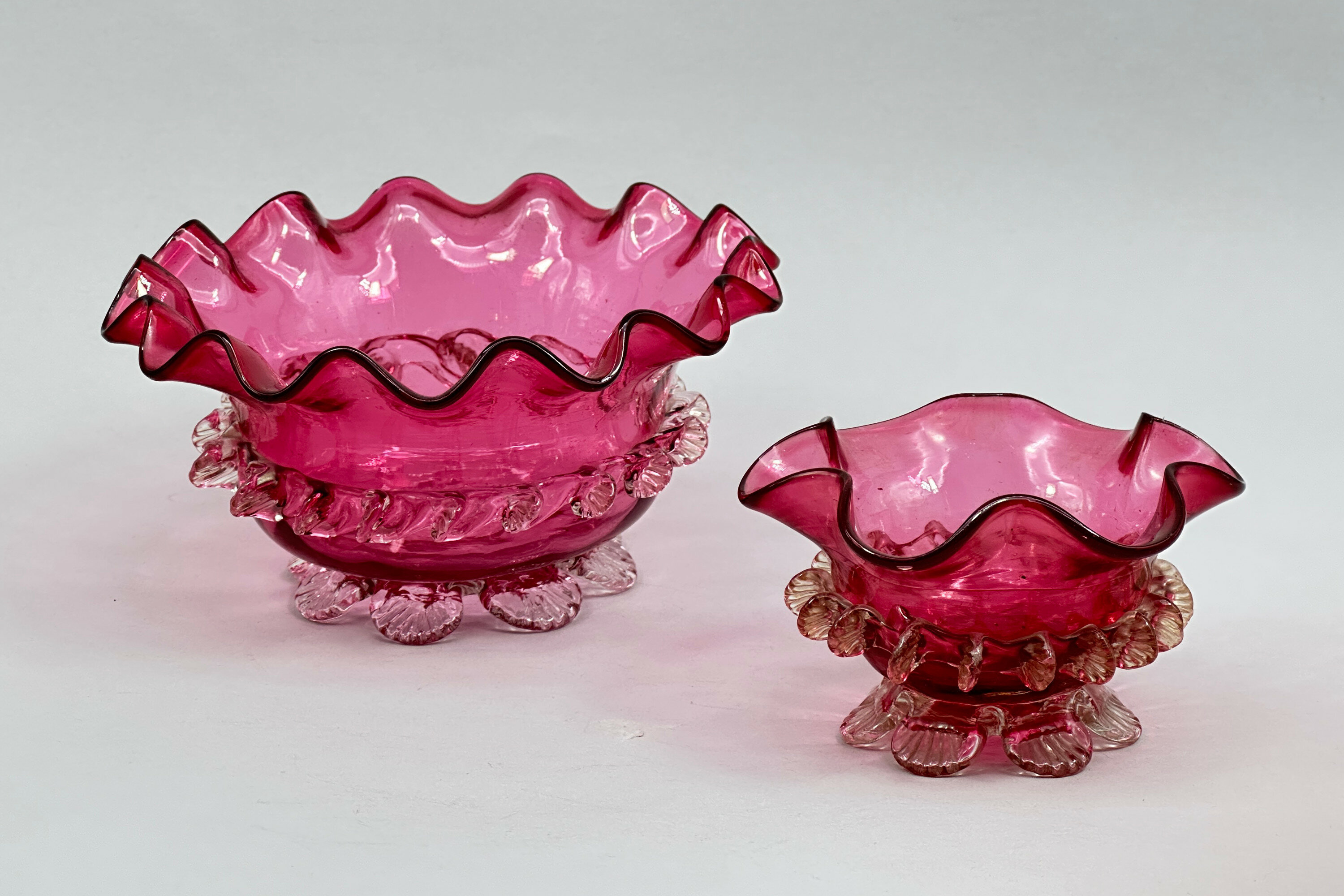
Two Victorian Cranberry Glass Bowls, late C19th
Price: £75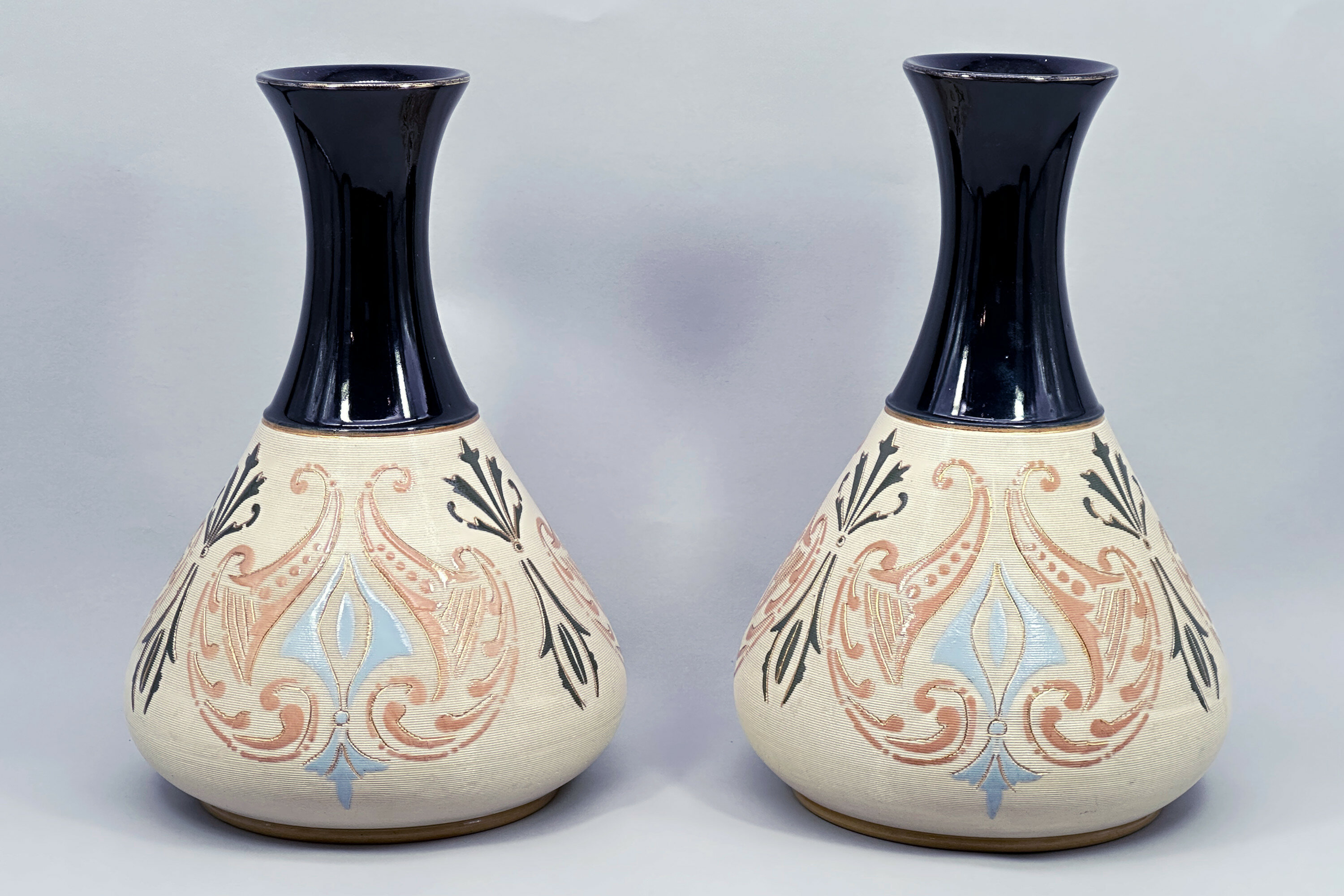
Pair of Lovatt and Lovatt Earthenware Vases, early C20th
Price: £95The Langley Mill Pottery was located in Langley Mill, Derbyshire on the Derbyshire – Nottinghamshire border. From its establishment in 1865 to its final closure in 1982, it went through five distinct periods of ownership, producing a wide range of stoneware ranging from utilitarian items and to high quality art pottery. This pair of vases dates from the third company that traded there, Lovatt and Lovatt. The Lovatt family had entered into partnership with the owner of the founding business at Langley Mill, James Calvert. From 1895 the business was in sole control of the Lovatt family and traded as ‘Lovatt and Lovatt’ until 1935. The early years of the twentieth century proved to be something of a zenith for them and a wide range of art pottery pieces were made which enjoyed great popularity. Production techniques were streamlined without a reduction in quality and in 1905, leadless glazes were introduced. These are proudly announced on the base of this pair of vases which are a fine example of the Lovatt and Lovatt style and probably date to 1913, indicated by the impressed numbers for that year.
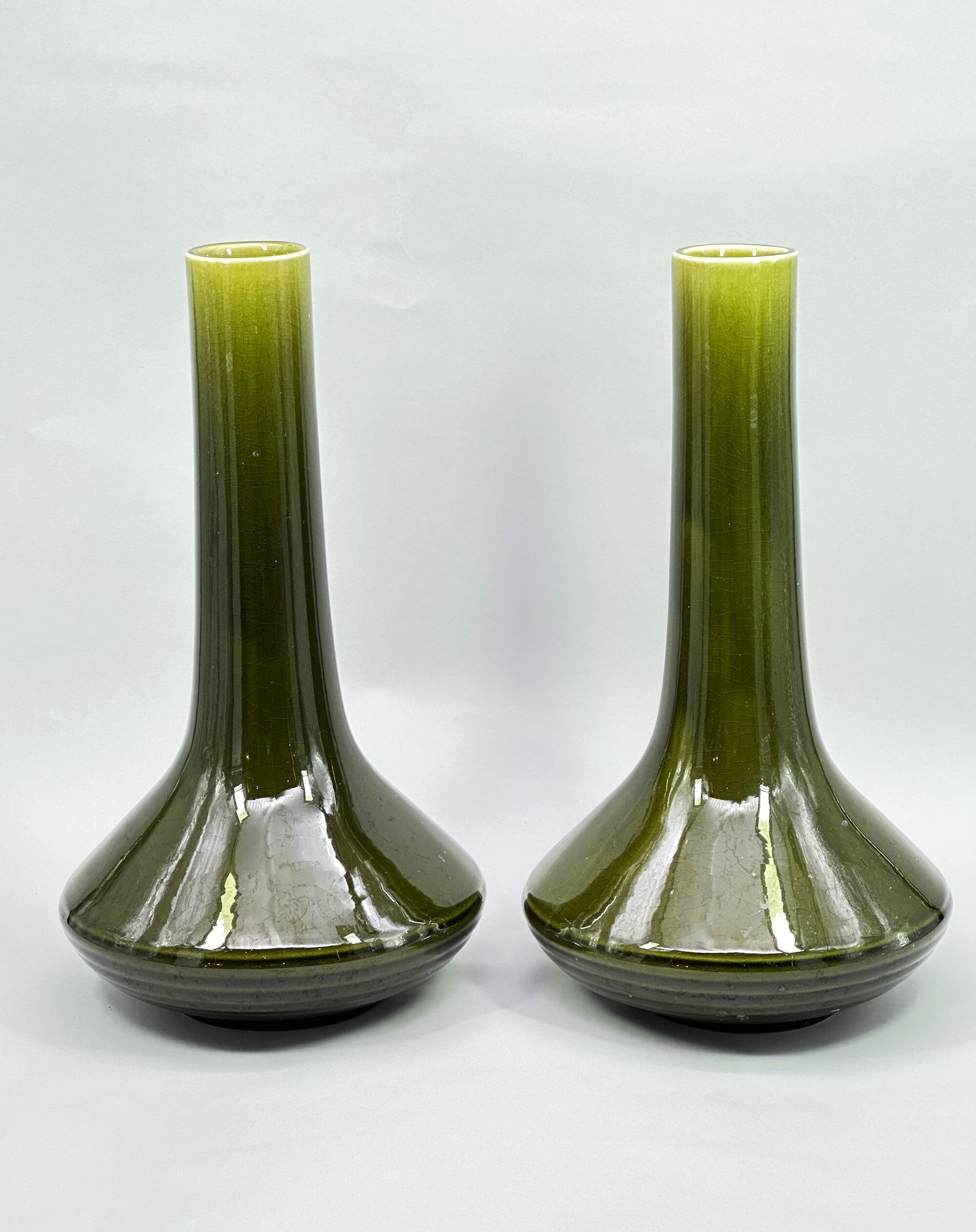
Pair of Green Glazed Bottle Vases, possibly French C20th
Price: £180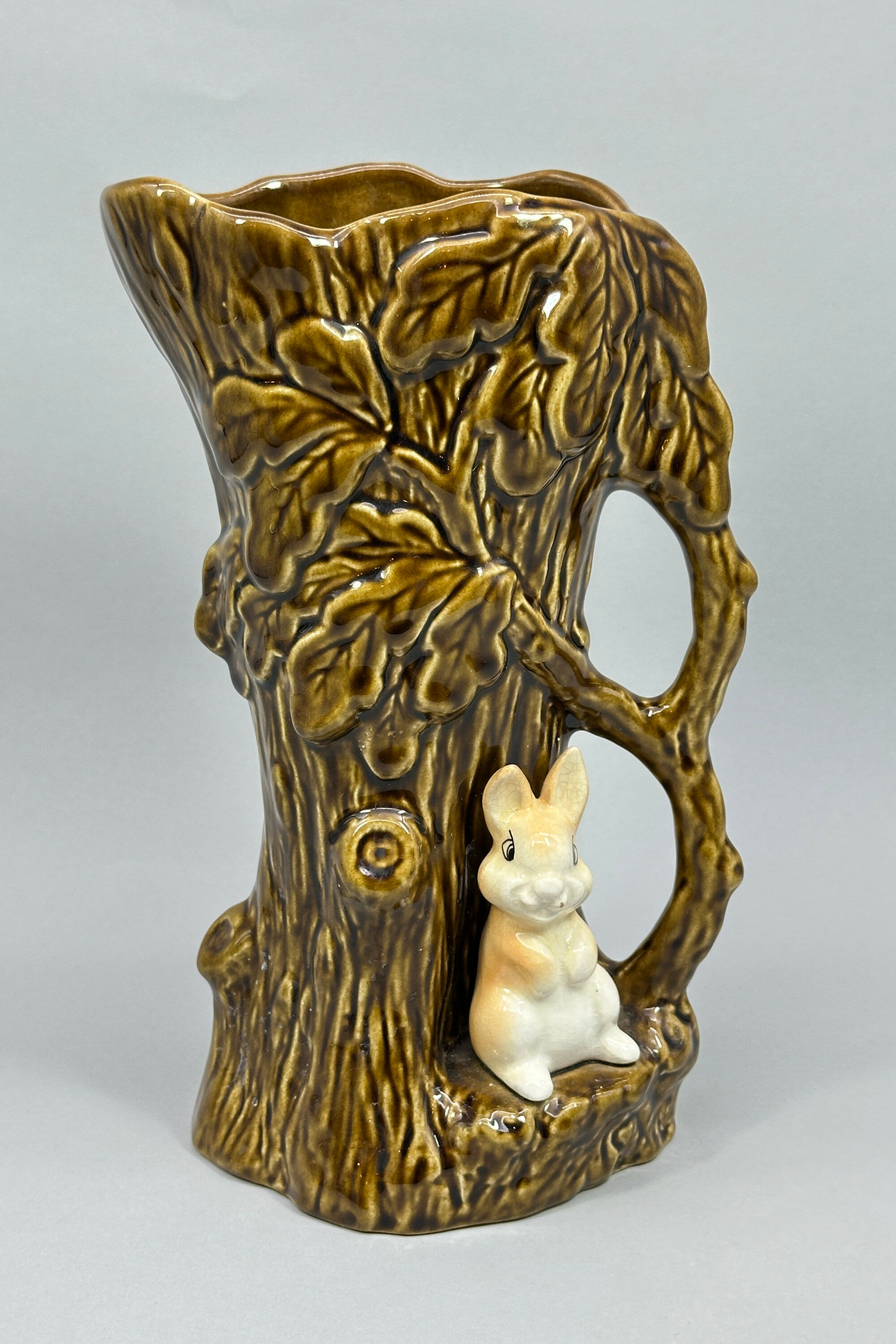
Sylvac woodland range Rabbit and Tree Jug, 1950s
Price: £35‘SylvaC’ (the name was written with a capital ‘C’ after registration of the trademark in 1938) was a trade name of Shaw and Copestake, a company formed by Mr. William Shaw and a Mr. Copestake around 1900. Mr. Copestake sold his shares to a Mr. Richard Hull after about six months of business and this partnership continued until Mr. Hull’s death in 1935. He was succeeded by his son, Mr. Richard Hull junior. In the following year, the business became a limited company. Various mergers and acquisitions followed and in the 1950s new premises were built and production expanded considerably continuing until the early 1980s when changing markets and increased competition forced the company into liquidation.
Sylvac were famous for imaginative glazed wares, particularly animals, and this jug is a typical and pleasing example of their work.
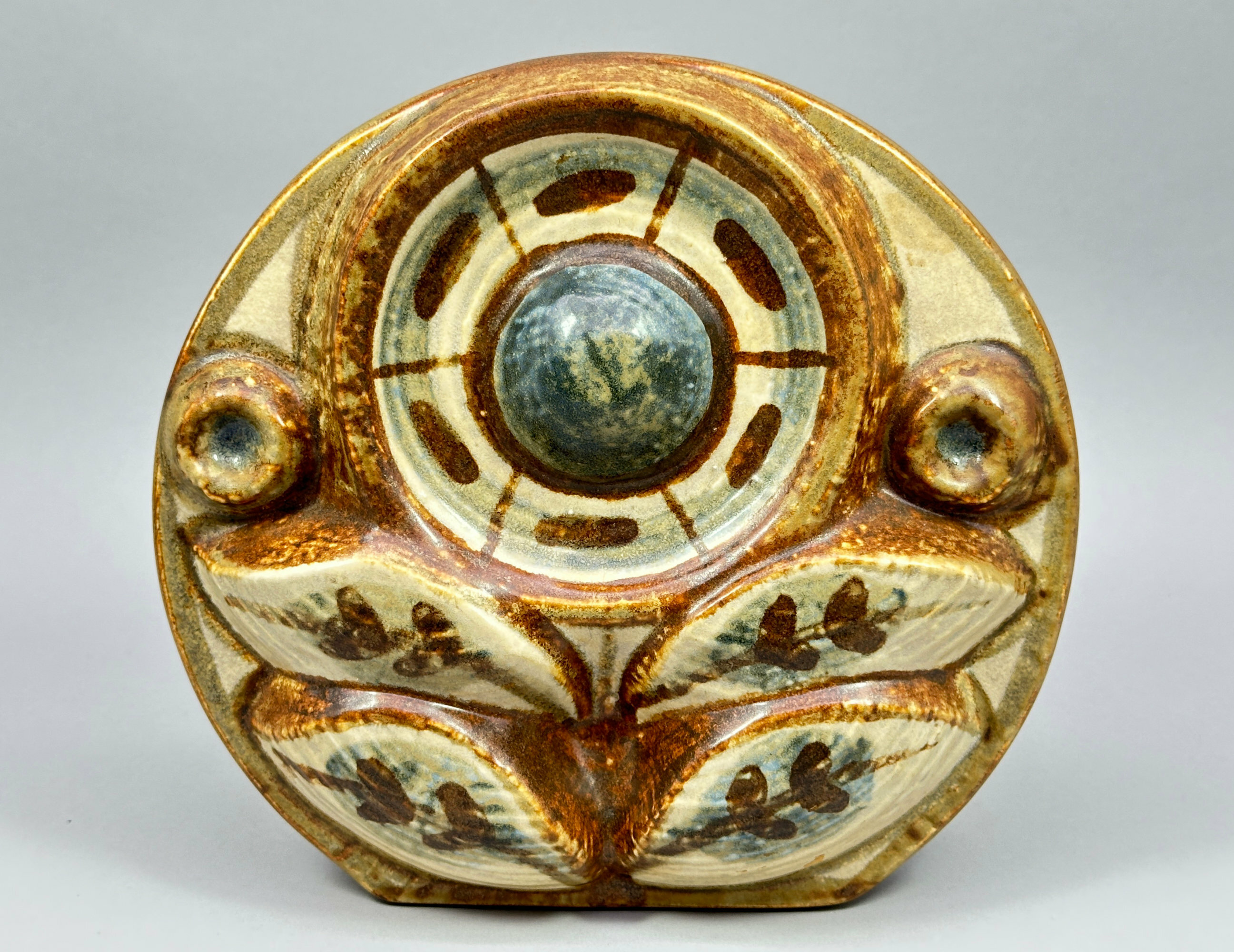
Wall Vase, designed by Noomi Backhausen, Søholm Stentøj, Denmark, late C20th
Price: £95The company Søholm Stentøj was founded by Herman Sonne Wolffsen and Edvard Christian Sonne in 1835 at Rønne, the principal town of Bornholm, a Danish island off the south coast of Sweden. One of the most respected of the Danish potteries it continued producing a wide range of ceramics until the firm closed in 1996. Noomi Backhausen was a designer for Søholm from 1966 to 1990 and set up her own pottery in Rønne in 1996 after the closure of her old employers. This wall vase is a typical example of her abstract organic designs and would be a worthy addition to a collection of twentieth century Danish design.
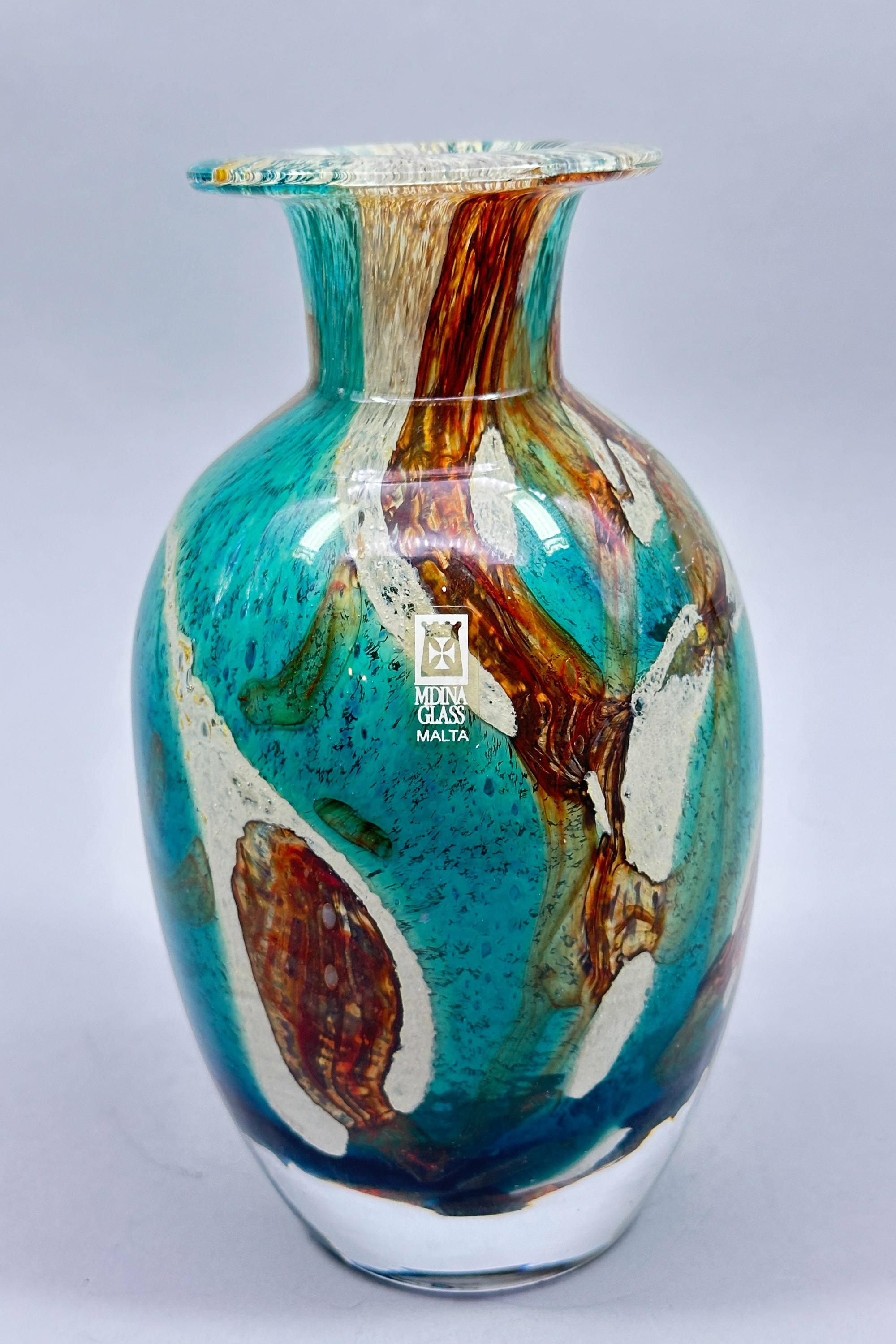
Mdina Glass Vase, signed and with maker’s label, late C20th
Price: £95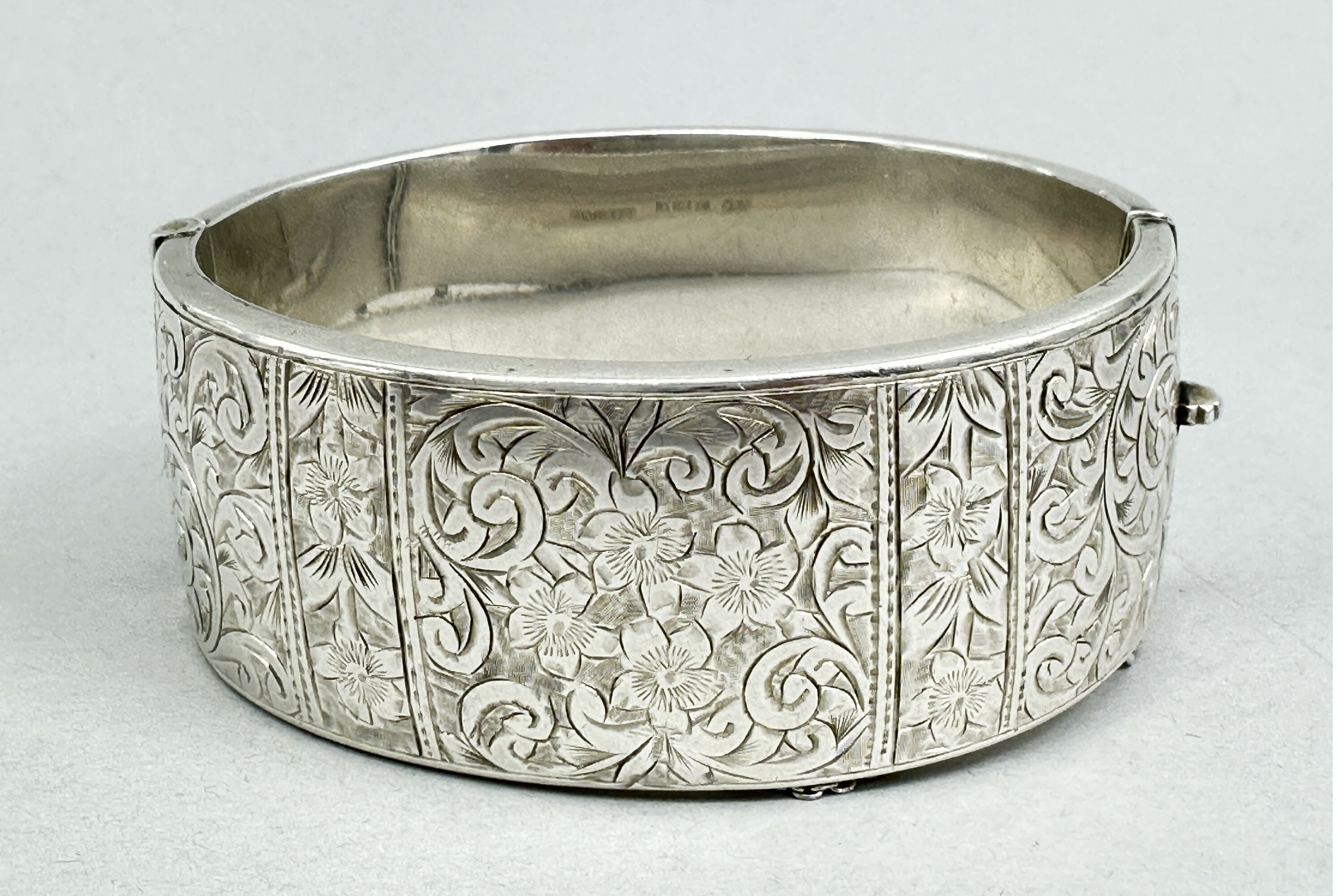
Deaking & Francis silver bangle, Birmingham 1955
Price: £125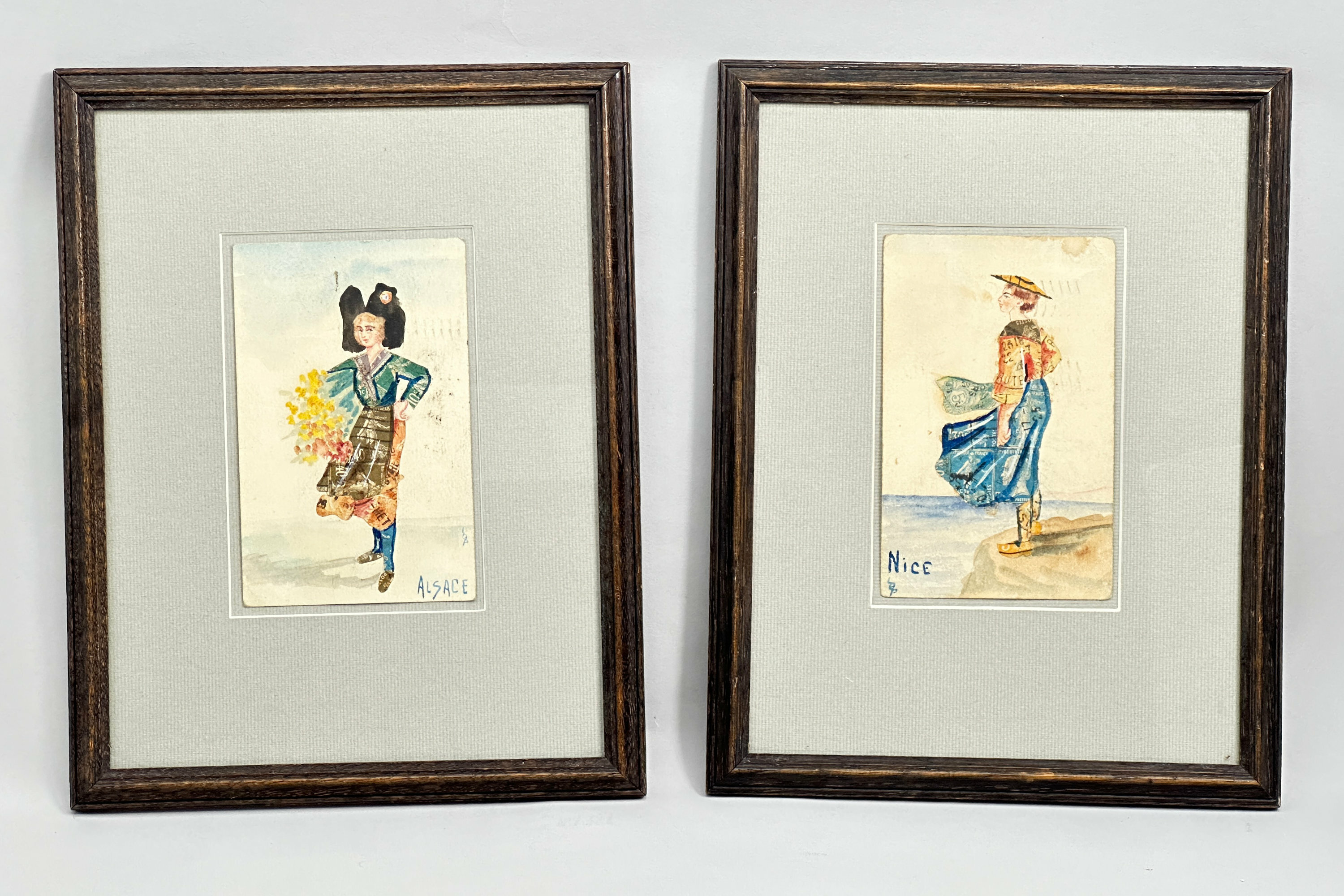
A pair of stamp collage Postcards, Alsace and Nice, framed, early C20th
Price: £45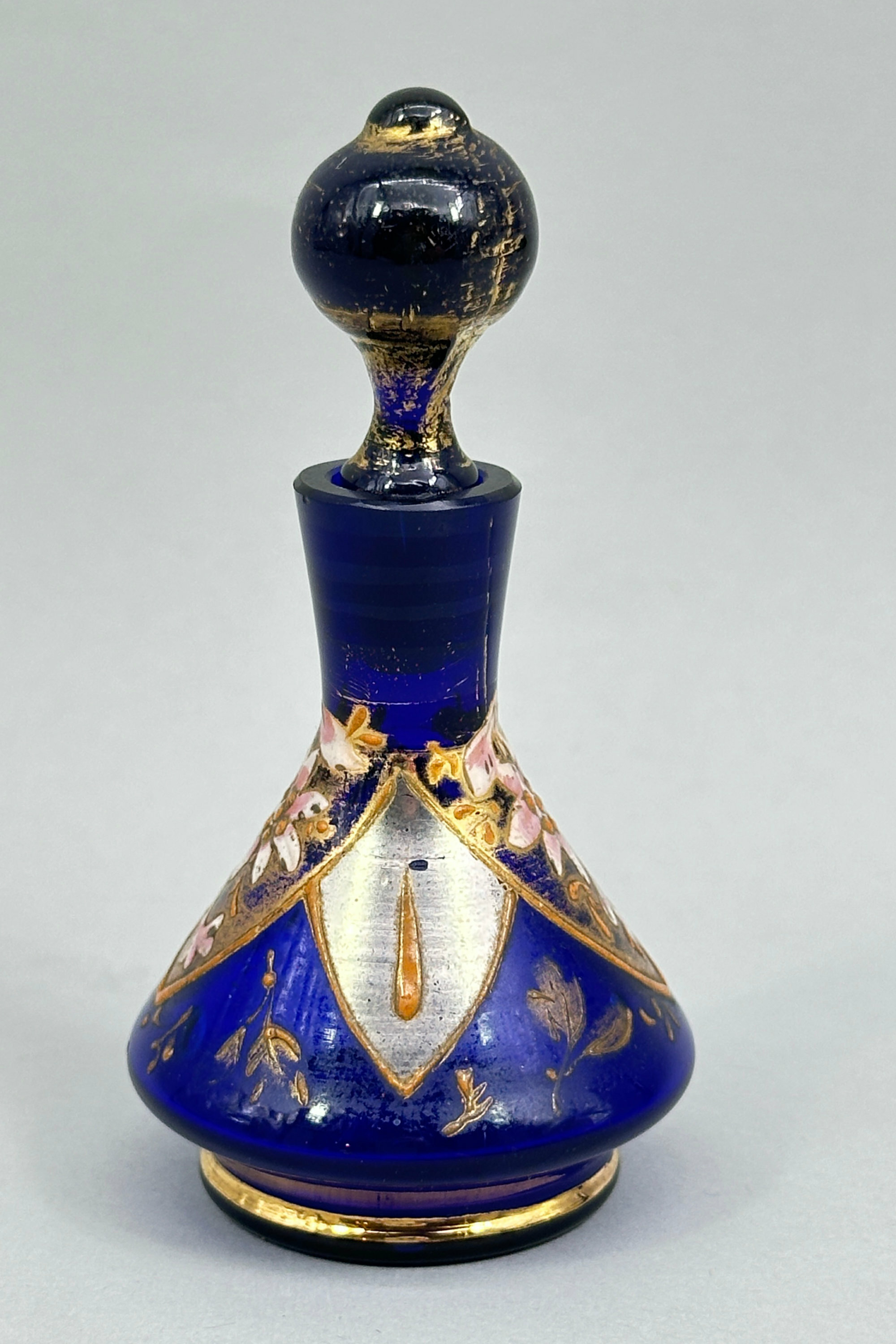
Bohemian cobalt blue Perfume Bottle and Stopper with enamel decoration, C20th
Price: £45So called ‘Bohemian’ glass was produced for export from the second half of the nineteenth century onwards by the workshops from the regions of Bohemia and Silesia, now parts of the Czech Republic. With its origins in the renaissance, Bohemian glass with its elaborate forms and colourful decoration of thickly enamelled floral subjects was made in substantial quantities to satisfy a keen demand from both Europe and America. The angular shape here along with the geometric elements to the decoration reflects the Art Deco style and suggests a dating to the 1930s.
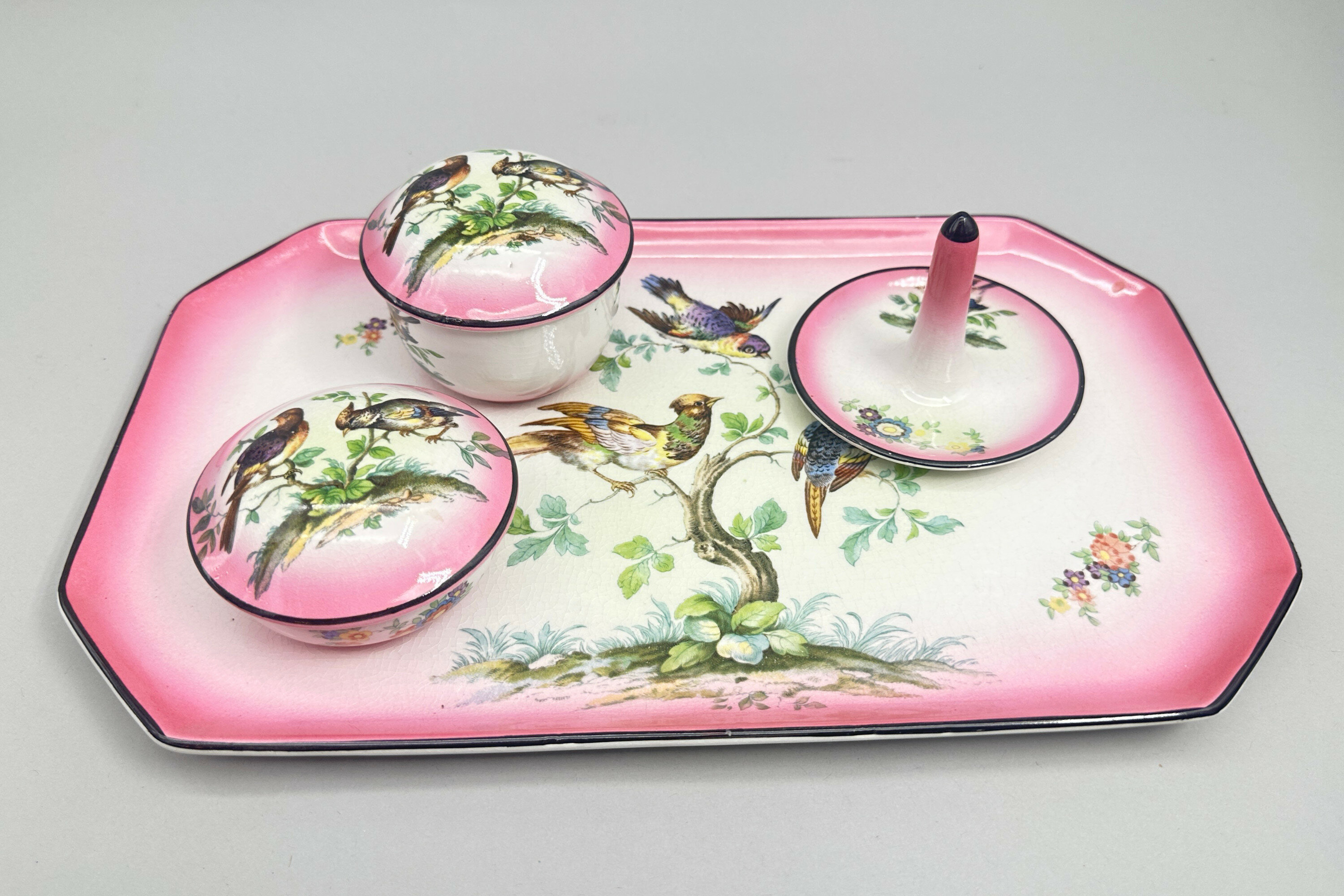
Kiralpo ware Dressing Table Set, marked, 1930s
Price: £35Kiralpo ware was one of the trade names used by Kirkland and Co, earthenware and ceramic manufacturers based at the Albion Pottery, Etruria, Stoke-on-Trent, England who traded from 1891 to 1938 when the business was bought and renamed by Mr A.E.Gray. The format of the mark gives a dating between 1928 and 1938 with ‘E’ standing for Etruria. Kirkland and Co made various modest but colourful decorative items to furnish the home. In a 1907 guide they are described as ‘general earthenware, fancy goods, and majolica manufacturers’. Their designs were not sophisticated but obviously had a popular appeal and this set with its bold transfer decoration of birds set within a rather vivid pink border is typical of their work.
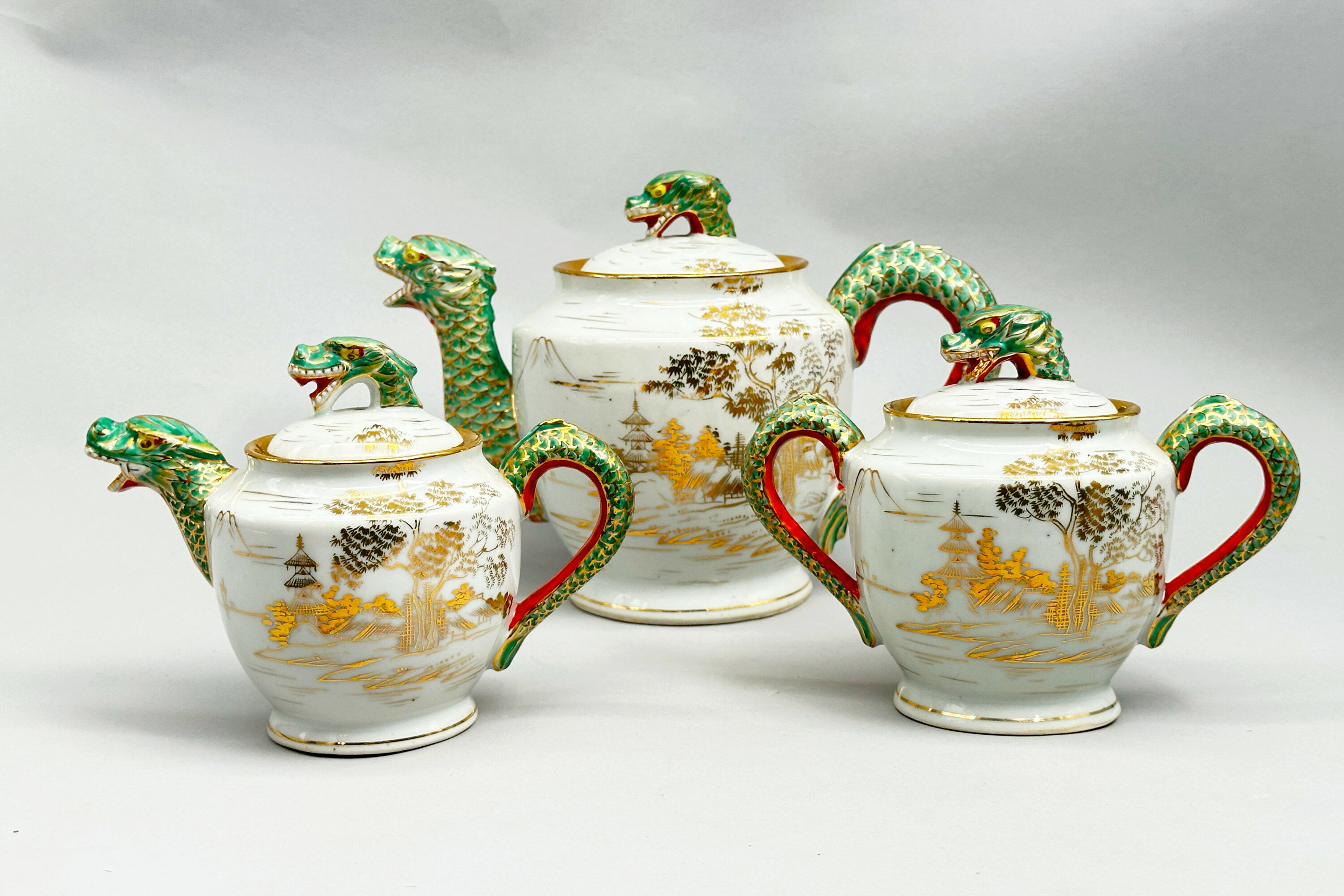
Japanese Kutani Part Tea Service circa 1920
Price: £75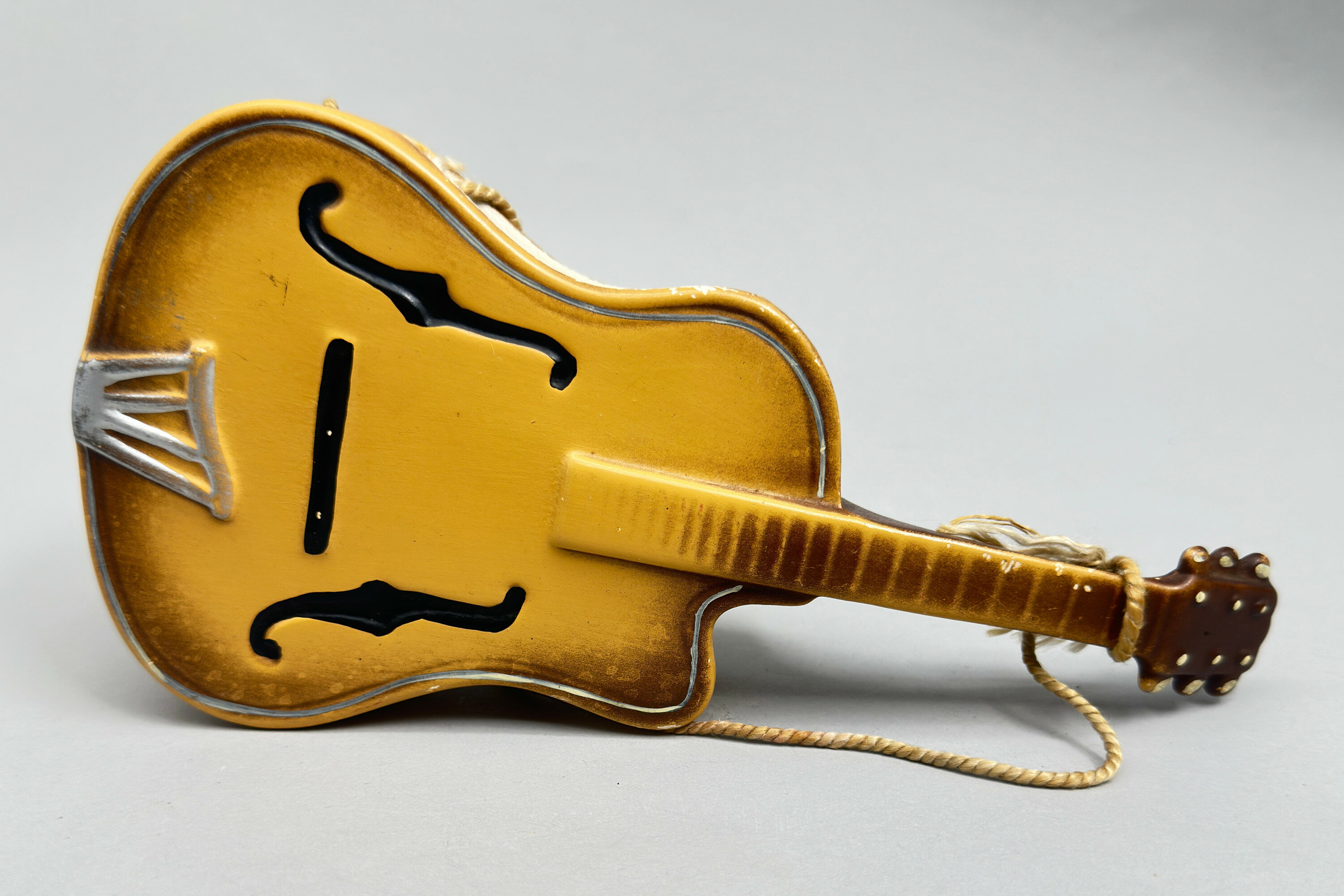
Novelty ceramic Wall Vase in the form of a Gretsch Guitar, English, 1950s
Price: £25
Novelty ceramic Wall Vase in the form of a Gretsch Guitar, English, 1950s
Price: £25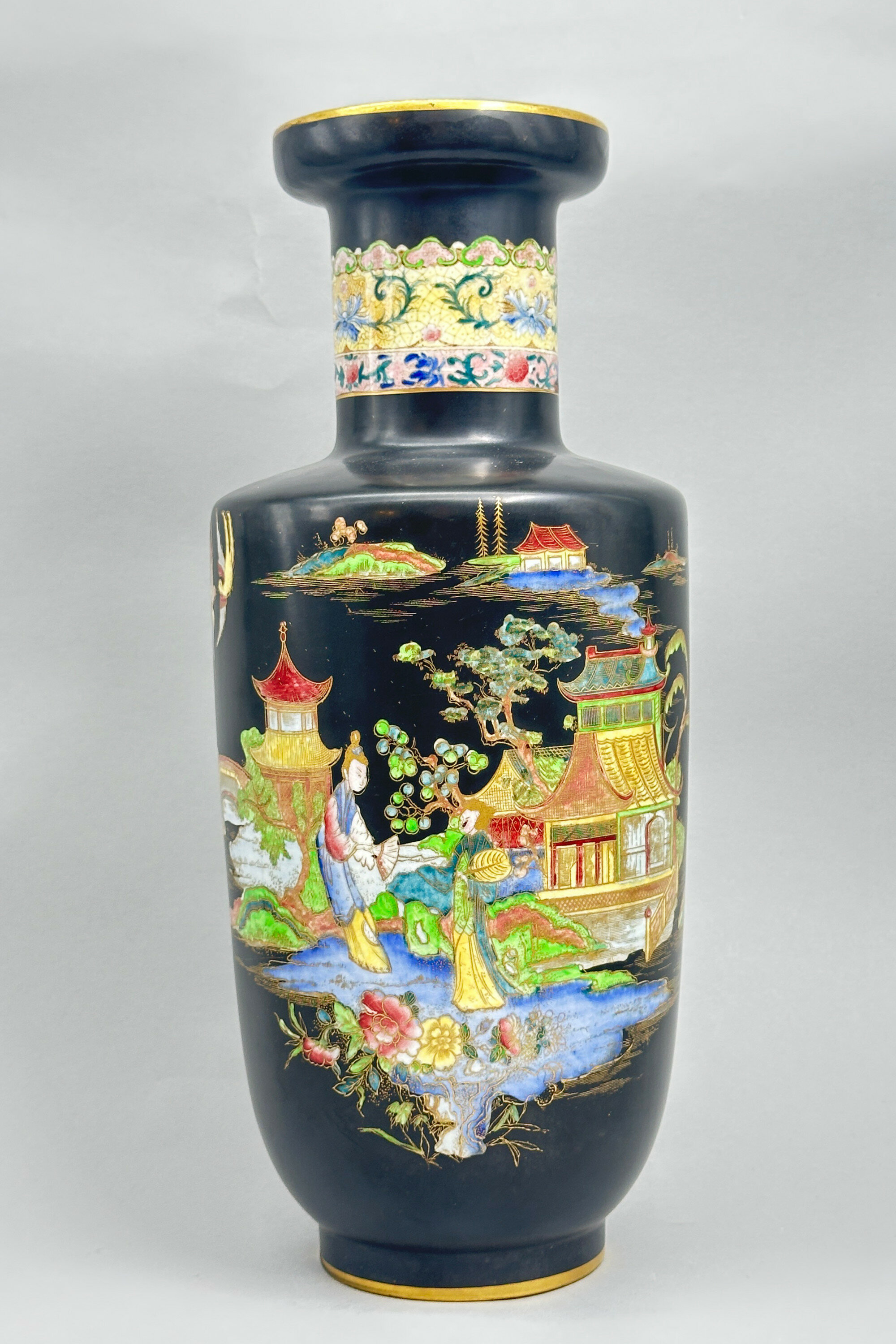
Mikado Carlton Ware Vase, 1920s
Price: £45Carlton Ware was the trade mark used by the pottery manufacturer Wiltshaw and Robinson, whose premises were located in Stoke on Trent, four years after the firm’s establishment in 1890. The firm mostly concentrated on decorative giftware and new methods of production introduced in the 1920s put it at the forefront of the earliest Art Deco pottery pieces produced, firstly with designs originating from Tutankhamun’s tomb and then with pieces with an Oriental influence of which this vase, in shape not often seen in this design, is a prime example.
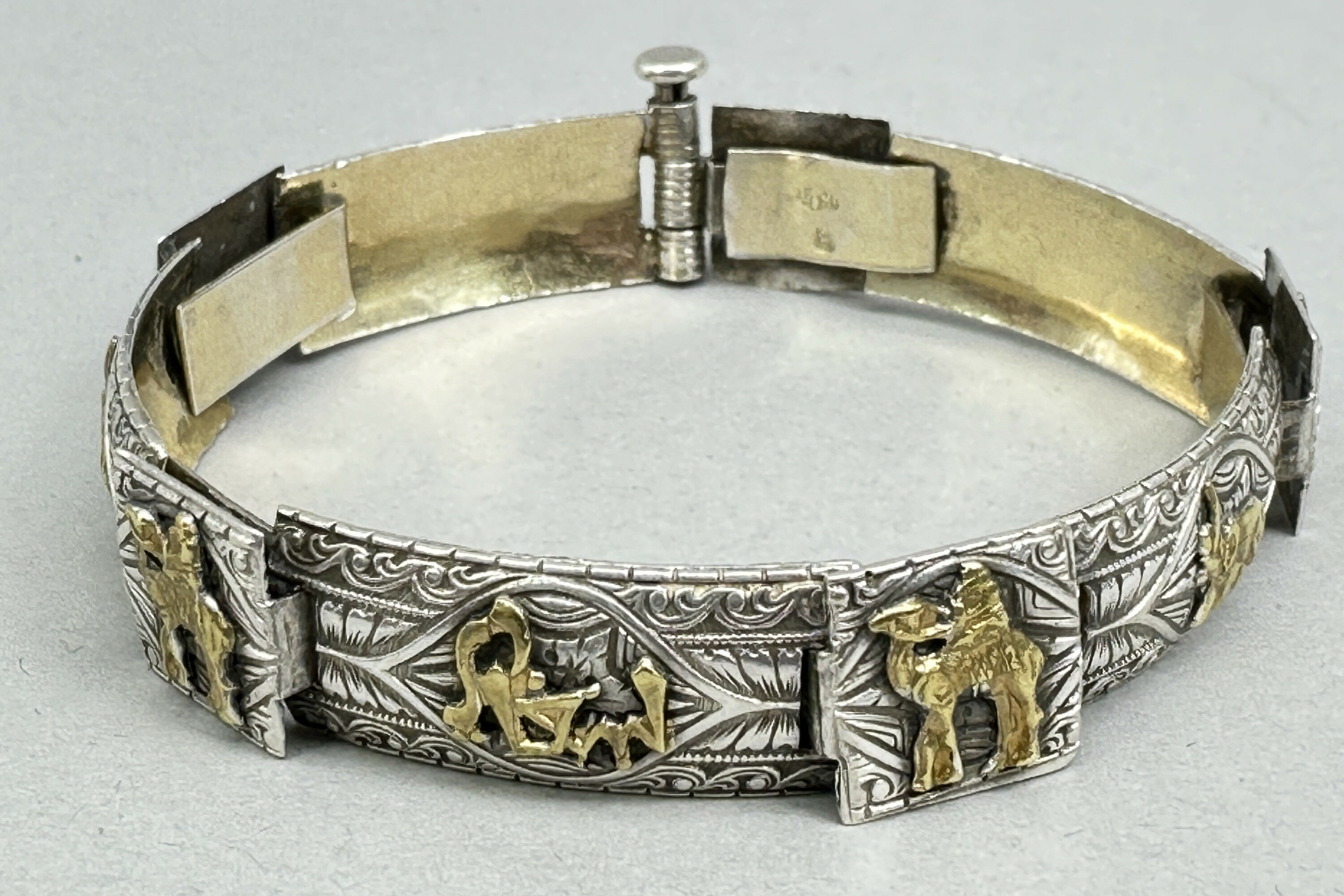
Very fine Moroccan engraved silver bracelet c1930
Price: £95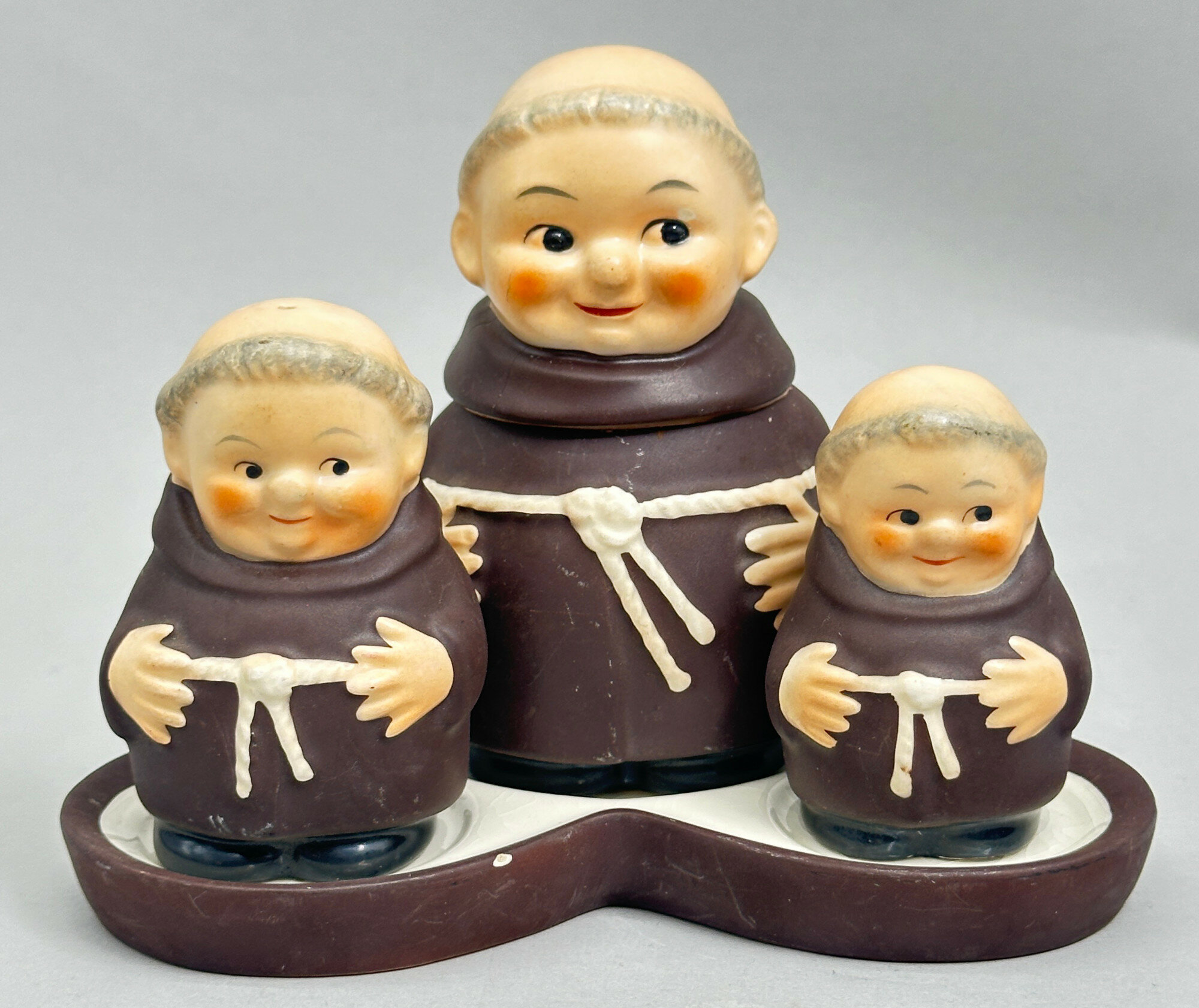
Cruet set in the form of three Friar Tuck Monks on a Tray, Hummel, West Germany, 1960s
Price: £55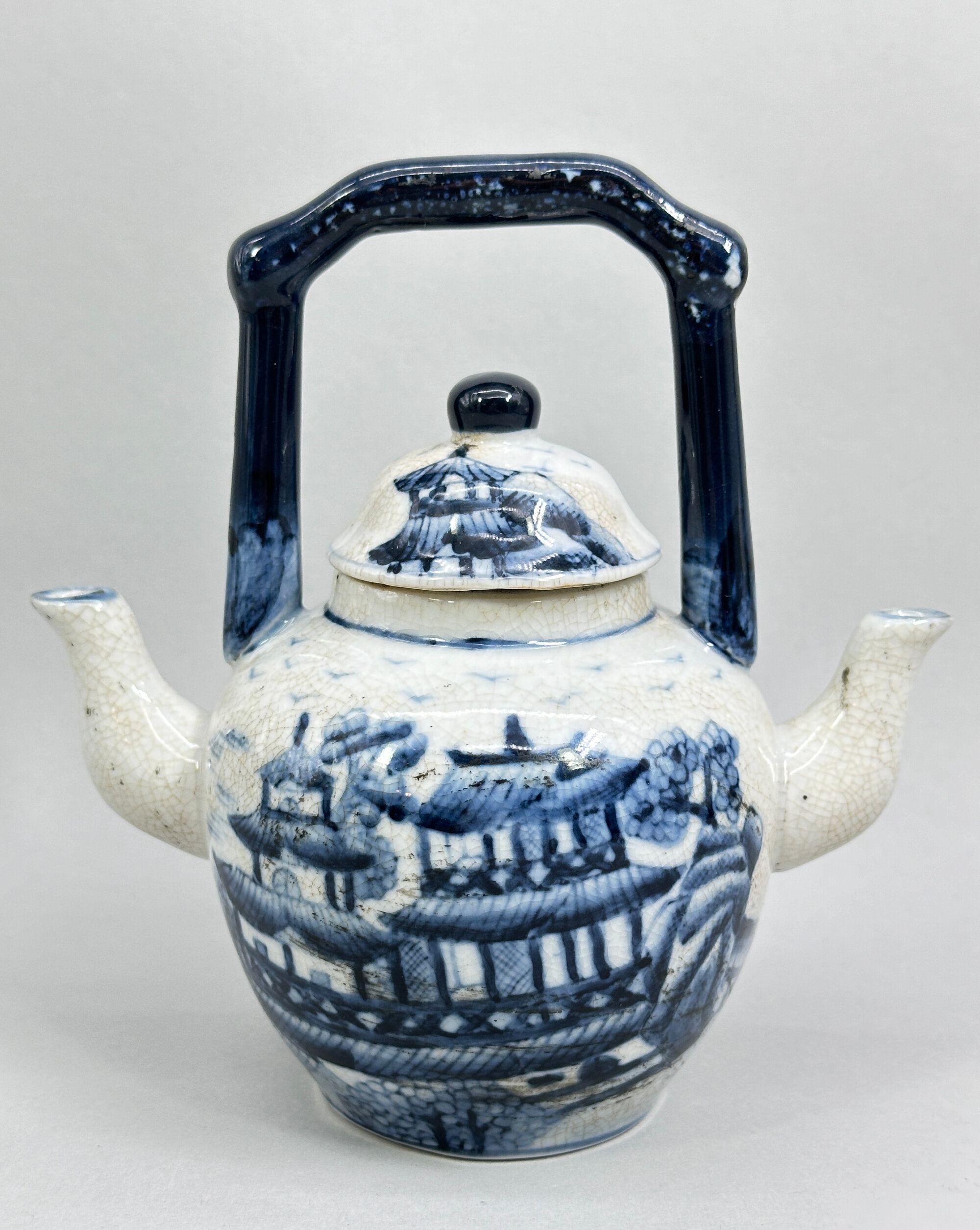
Chinese provincial double spout Teapot, early C20th
Price: £55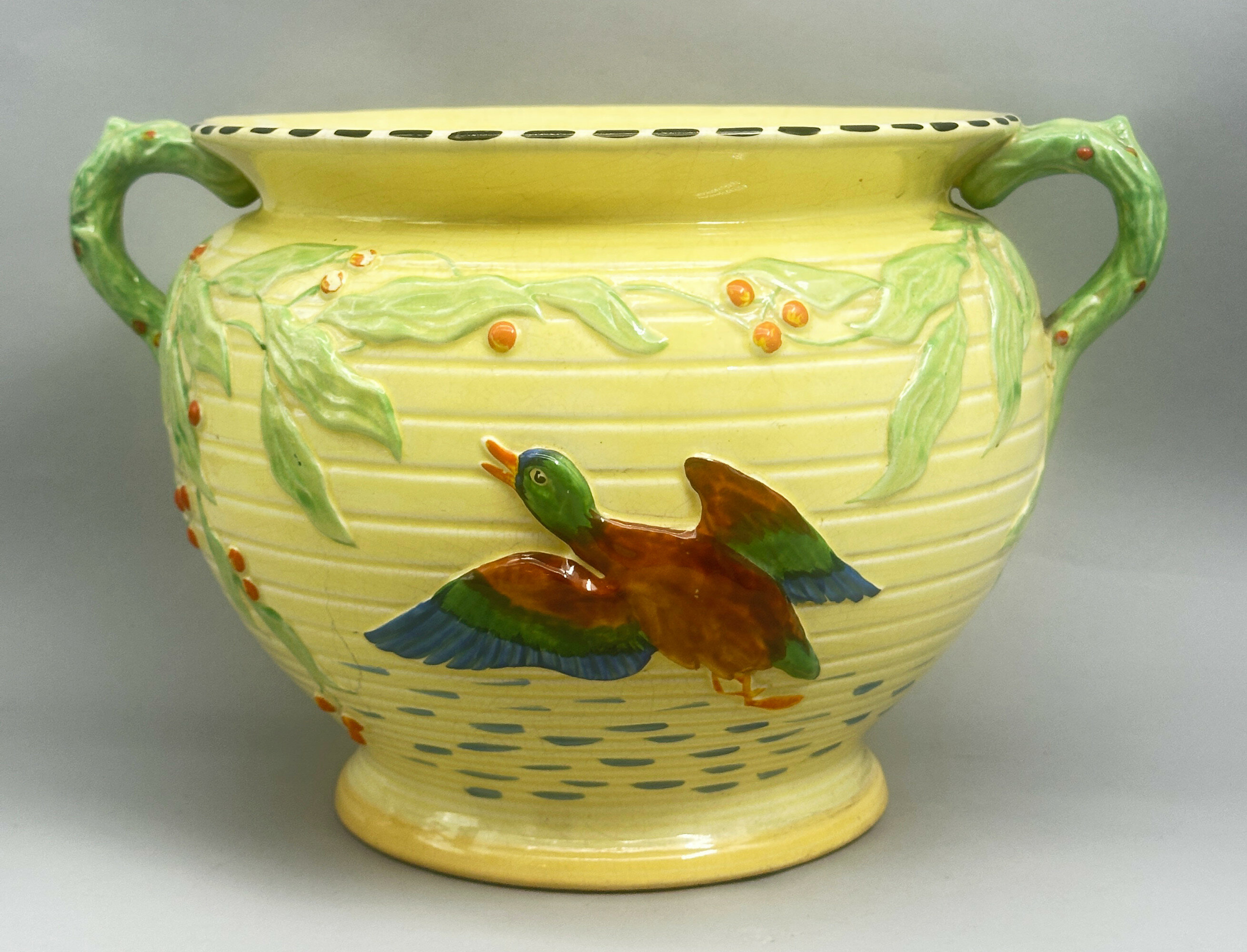
Falcon Ware Jardiniere decorated Mallard Duck and Foliage, 1930s
Price: £65Falcon Ware was the trade name for pieces produced by Thomas Lawrence, later Thomas Lawrence (Longton) Ltd, a business founded by Thomas Lawrence in 1885 which moved to the Falcon works, Longton, in 1895. In the same year he took his nephew, John Grundy into partnership and around 1920 Grundy became the Managing Director. Thomas Lawrence died in April 1932 and John Grundy became the sole proprietor until his death in 1938 when the business was sold to Grundy's son-in-law Mr Richard Hull (jnr) and Mr. E.J. Dennis and the name was changed to 'Thomas Lawrence (Longton) Limited'. At the same time the firm merged with Shaw and Copestake Ltd of which Richard Hull was a Director but the two businesses still operated independently until 1962 when the Thomas Lawrence business was fully subsumed by its partner with the ‘Falcon’ name ceasing to be used two years later in 1964.
Falcon Ware was known for colourful and decorative designs often with naturalistic themes. This jardiniere is an excellent and unusual example. The cipher ‘LG’, for Lawrence and Grundy, which is not so often found, implies a dating to the 1930s which corresponds with the general style of the piece with its hint of Art Deco associations.
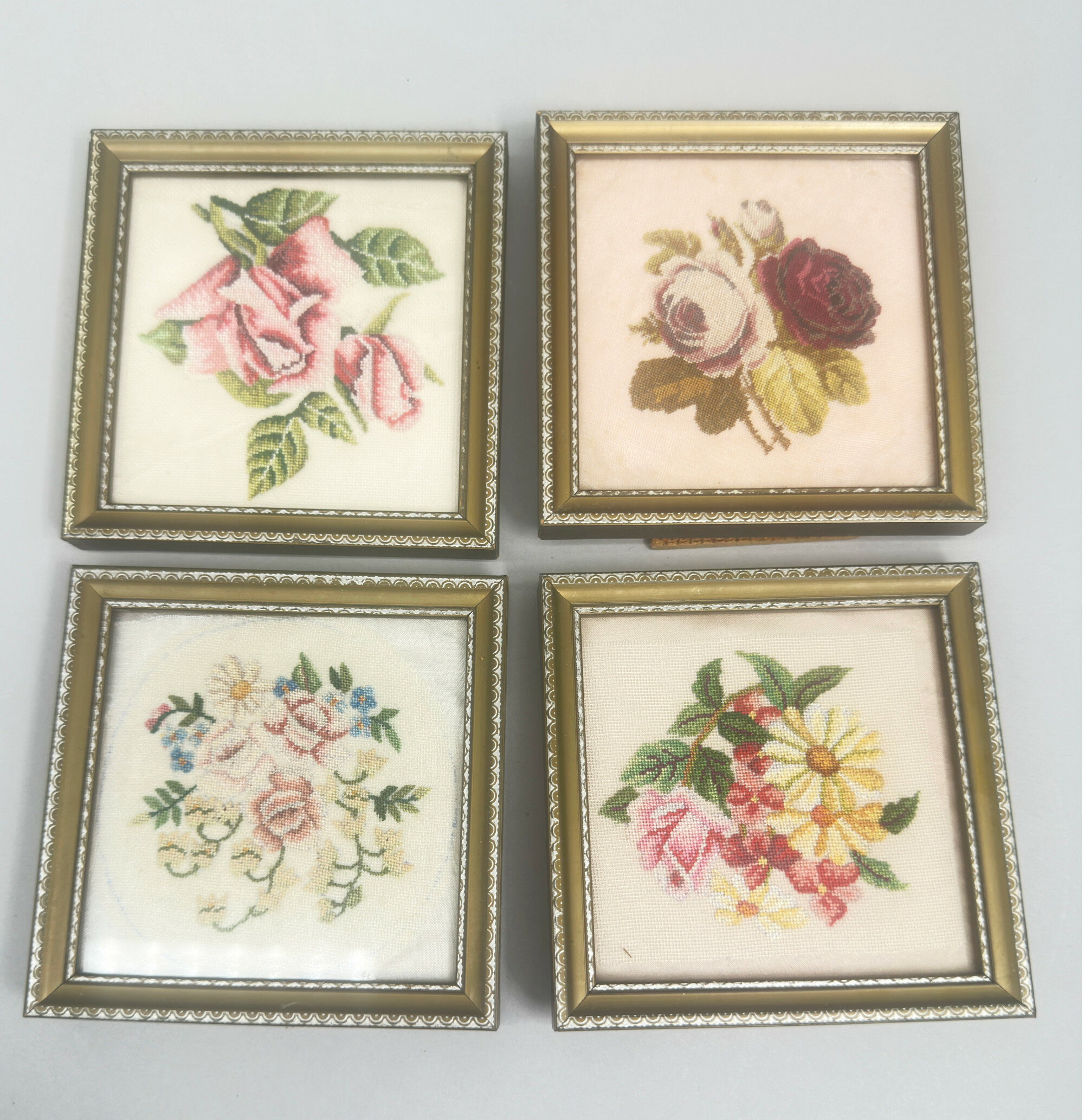
Set of four Petit Point needlepoint stitch framed floral Wall Hangings, mid C20th
Price: £45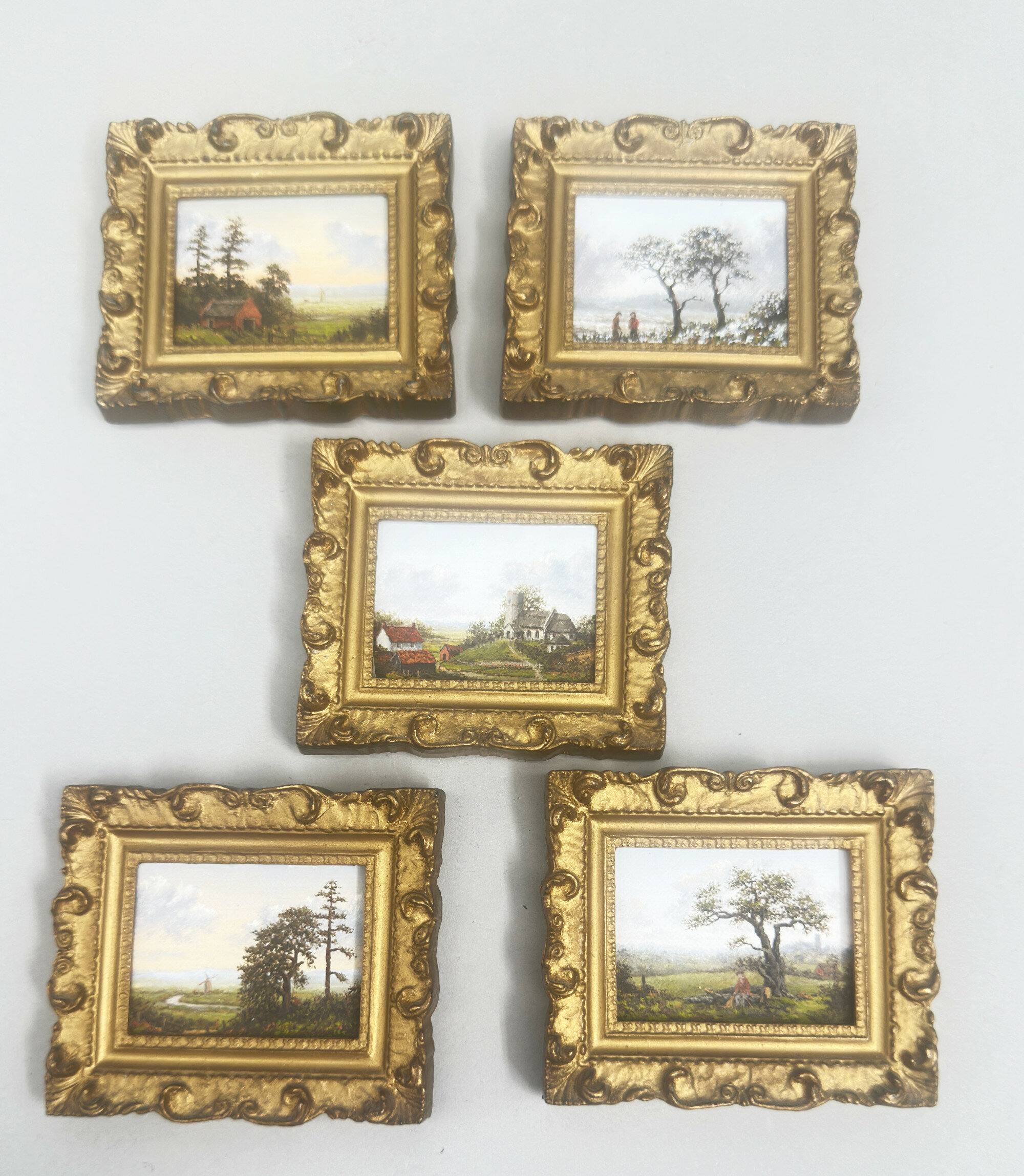
Set of five small landscape paintings attributed to Charles Boyland Turner, C20th
Price: £110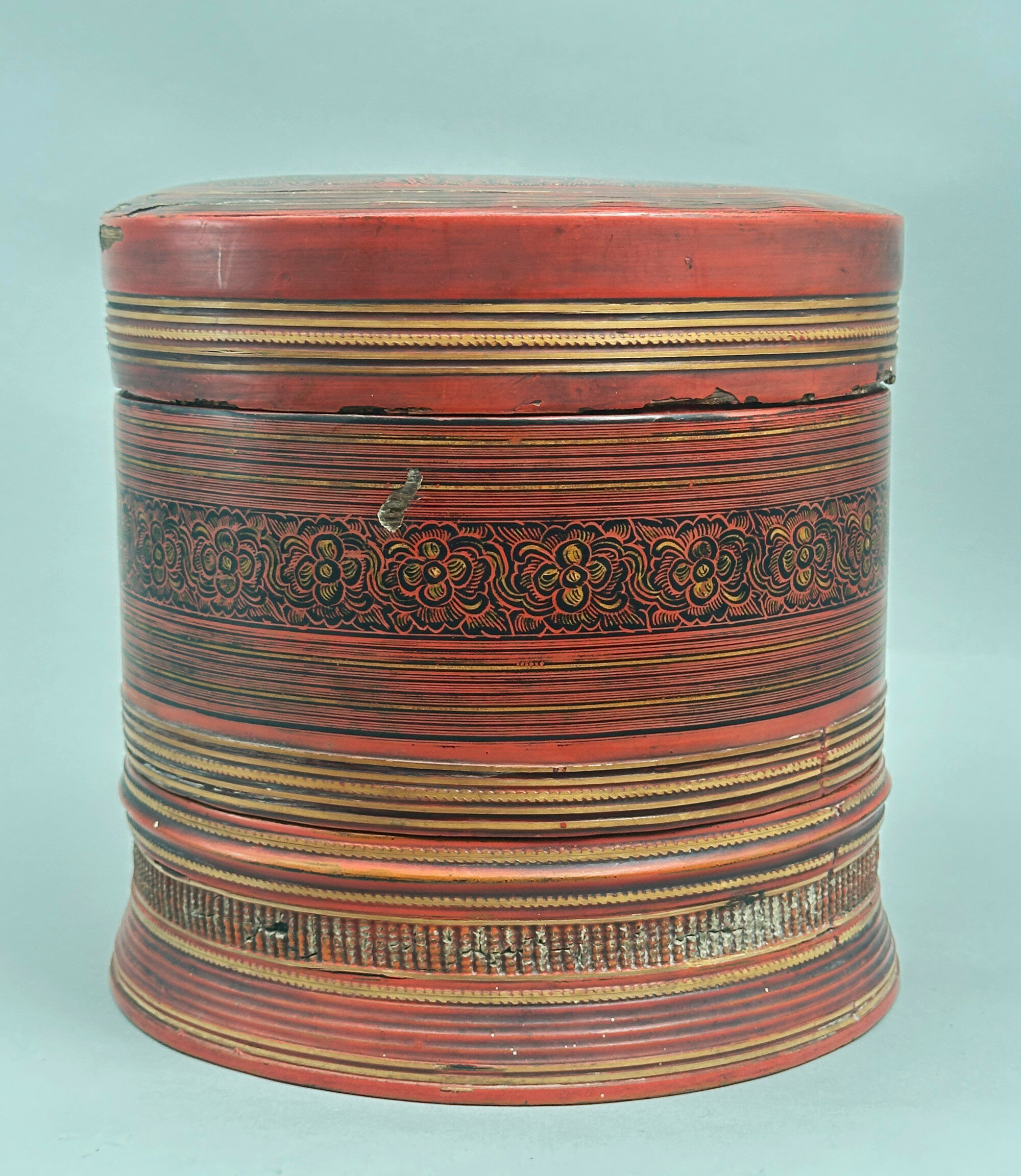
Burmese Lacquer Three Section Betel Box, early C20th
Price: £95The betel box seems to be mainly confined to Burmah, now Myanmar, and was normally made using the lacquer techniques for which the country was so well known. A woven bamboo, or sometimes cane or wood, base (which can be seen here where the lacquer has flaked away : see image 12) was covered in multiple layers of lacquer paste, each allowed to dry and then polished, and finally the piece was decorated. The format here is typical : an upper section with a tray on top covered by a lid which fits on to a lower section also with a tray on the top. The trays are coloured red on the inside and black on the outside, the lid and the boxes orange on the inside. The exterior decoration of the two section body and the base of the lid employs a wide mixture of narrow bands, some indented and some raised, with a broader band of repeated stylised floral decoration at the top and another with modelled vertical line decoration below. The base is slightly flared and the lid slightly very slightly domed. The top of the lid has a densely packed design comprising temples and dancing figures and the base a design of circles and waves. As with many of these boxes great care was taken in the ornamentation and this example was, perhaps, made for one of the wealthier households.
Dating of these boxes is put in the early years of the twentieth century and they survive as a memento of a tradition which is still practised, but with less elaborate accessories, in the present day.
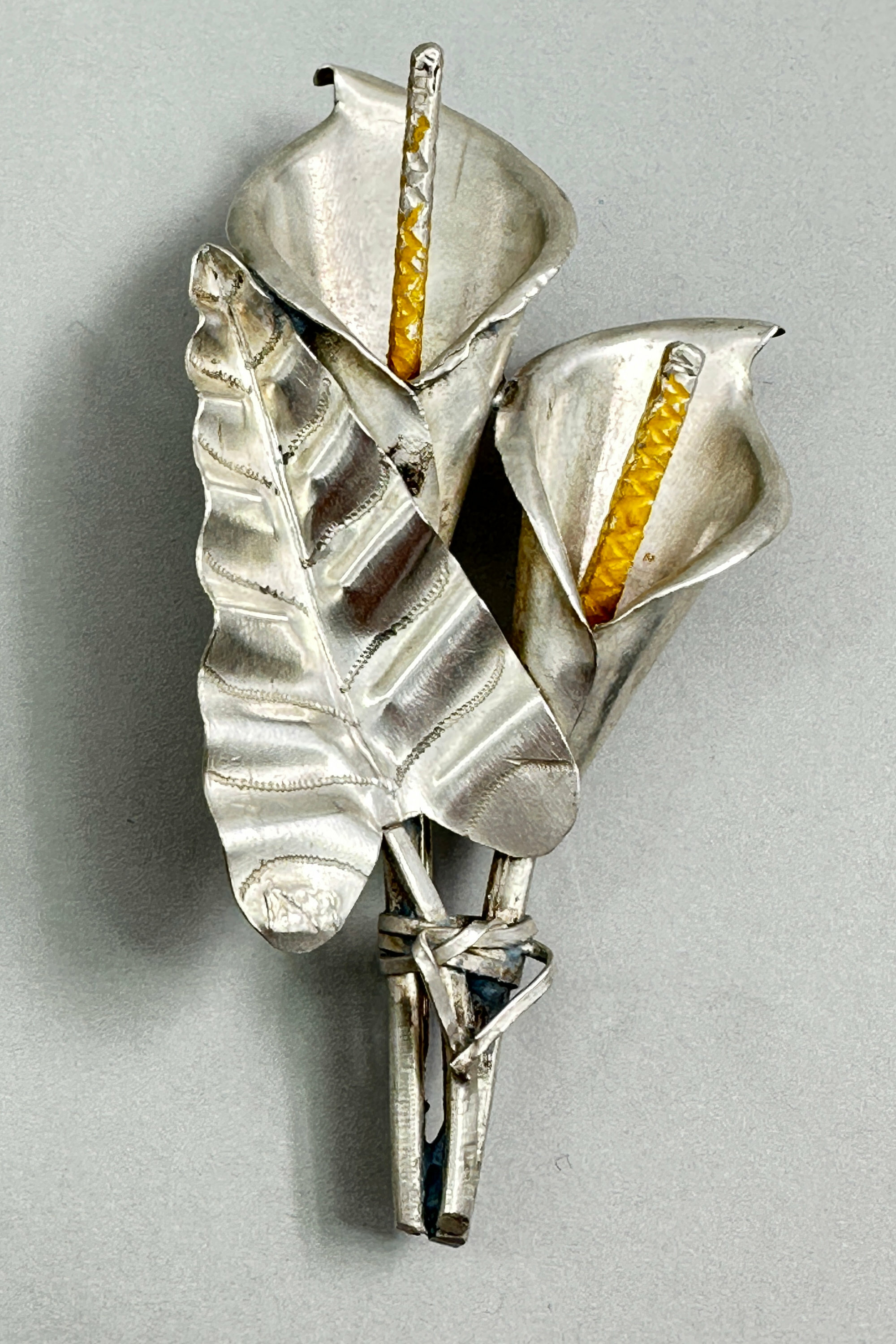
Modernist Silver White Anthurium Brooch, Mexico, 1970s
Price: £25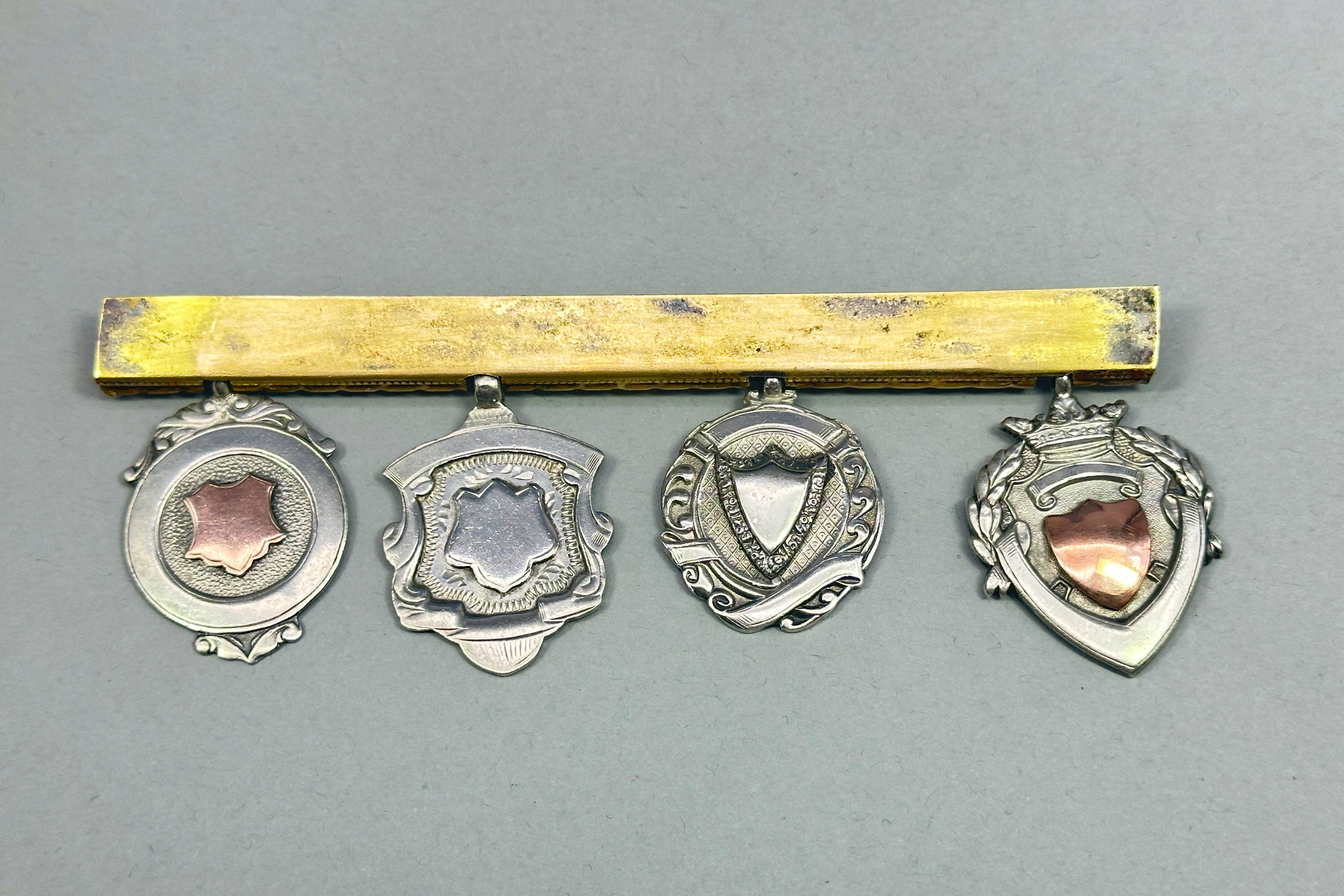
Gentlemans waistcoat pin set with four watch fobs 1930s
Price: £150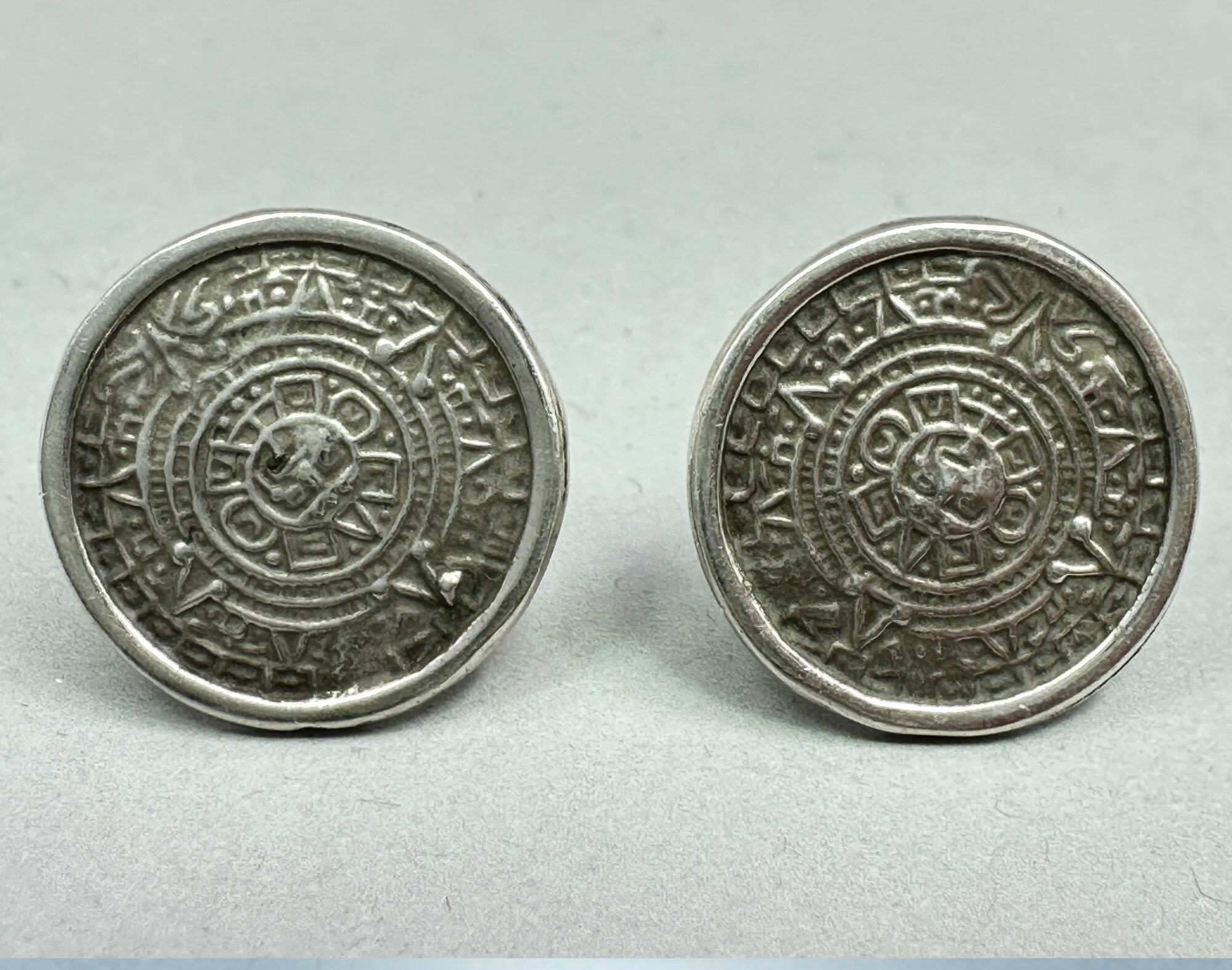
Taxco Mayan Sundial earrings, c1980
Price: £25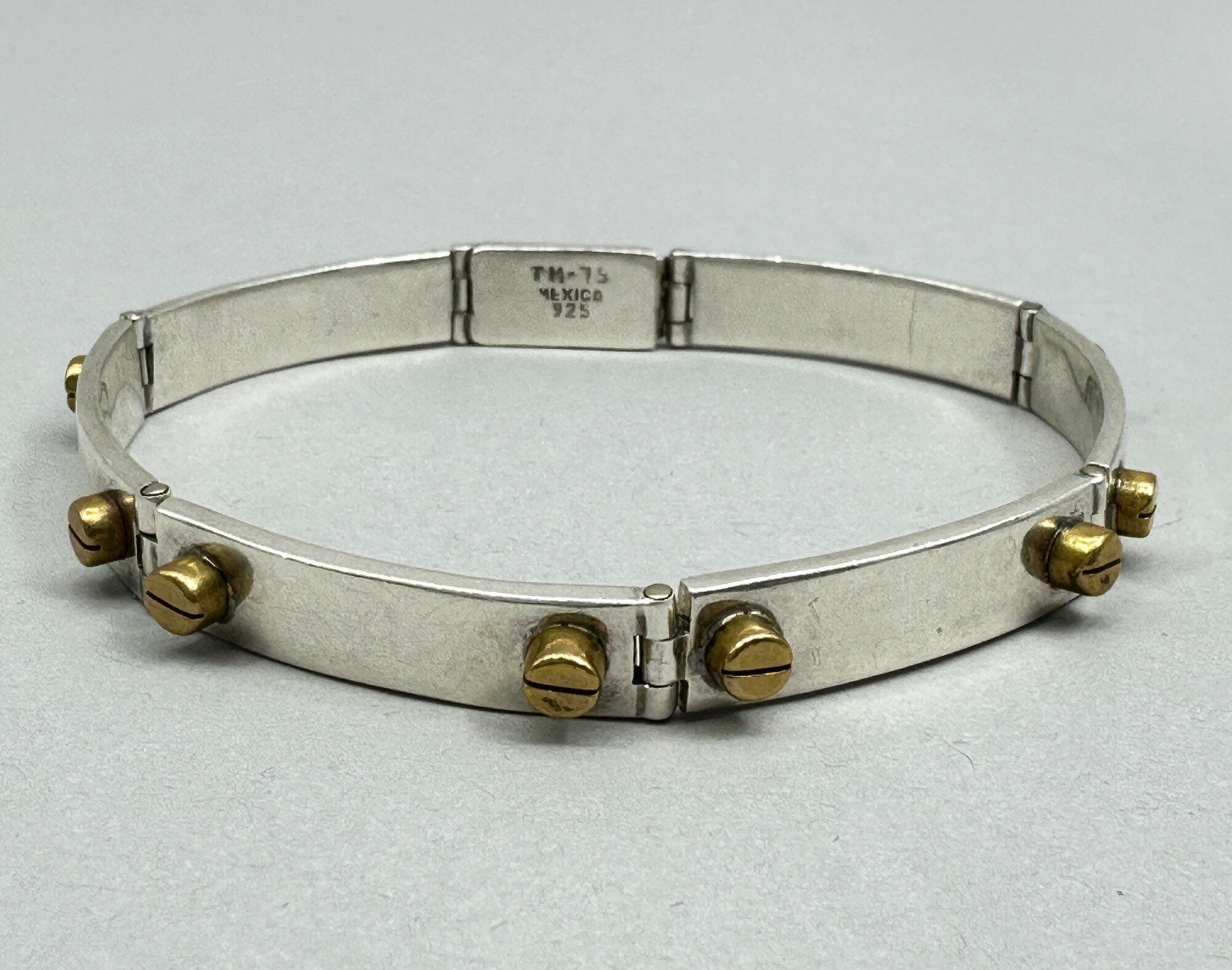
Taxco bracelet with rivet details c1980
Price: £85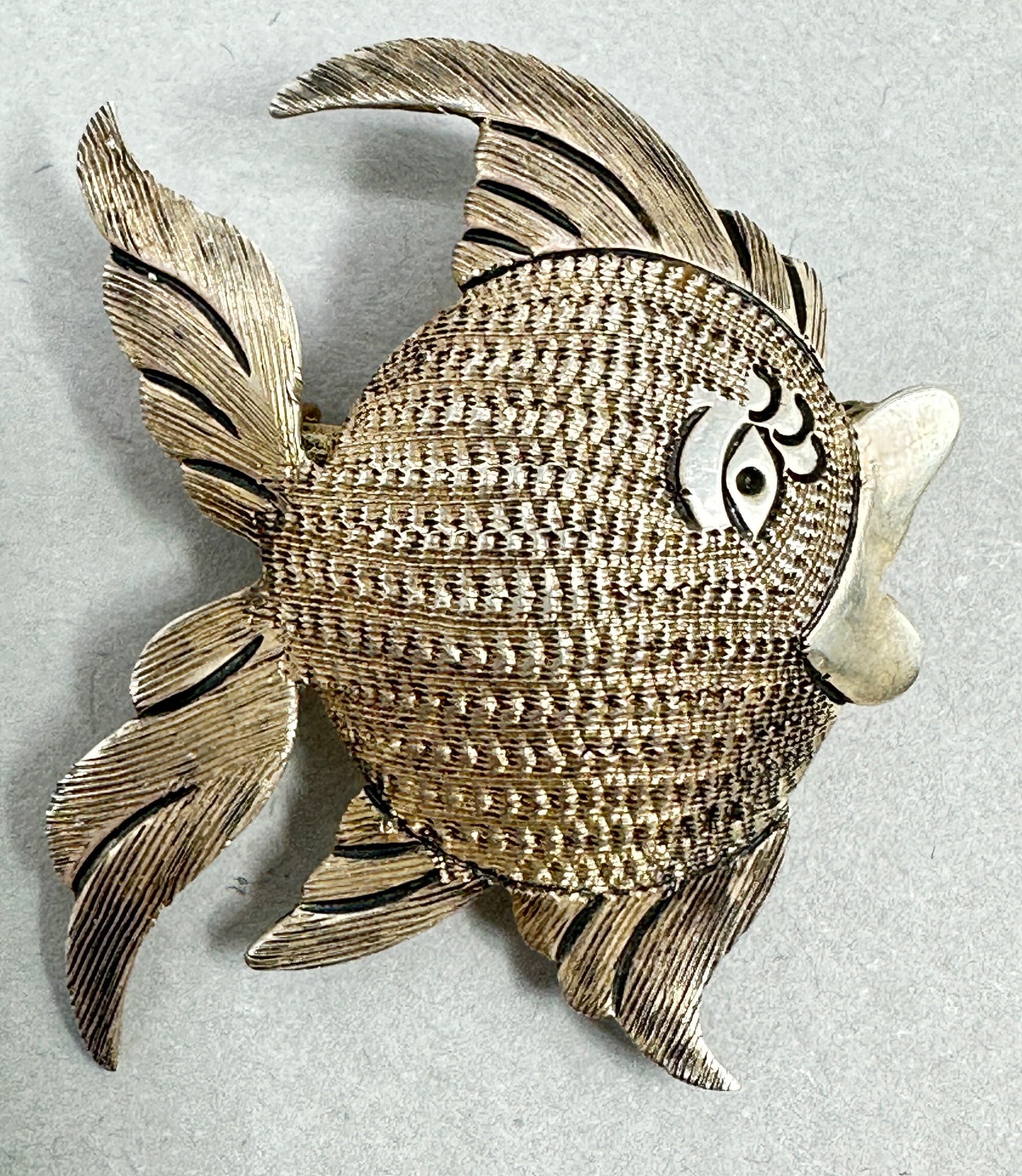
Taxco Fish Brooch c1940
Price: £25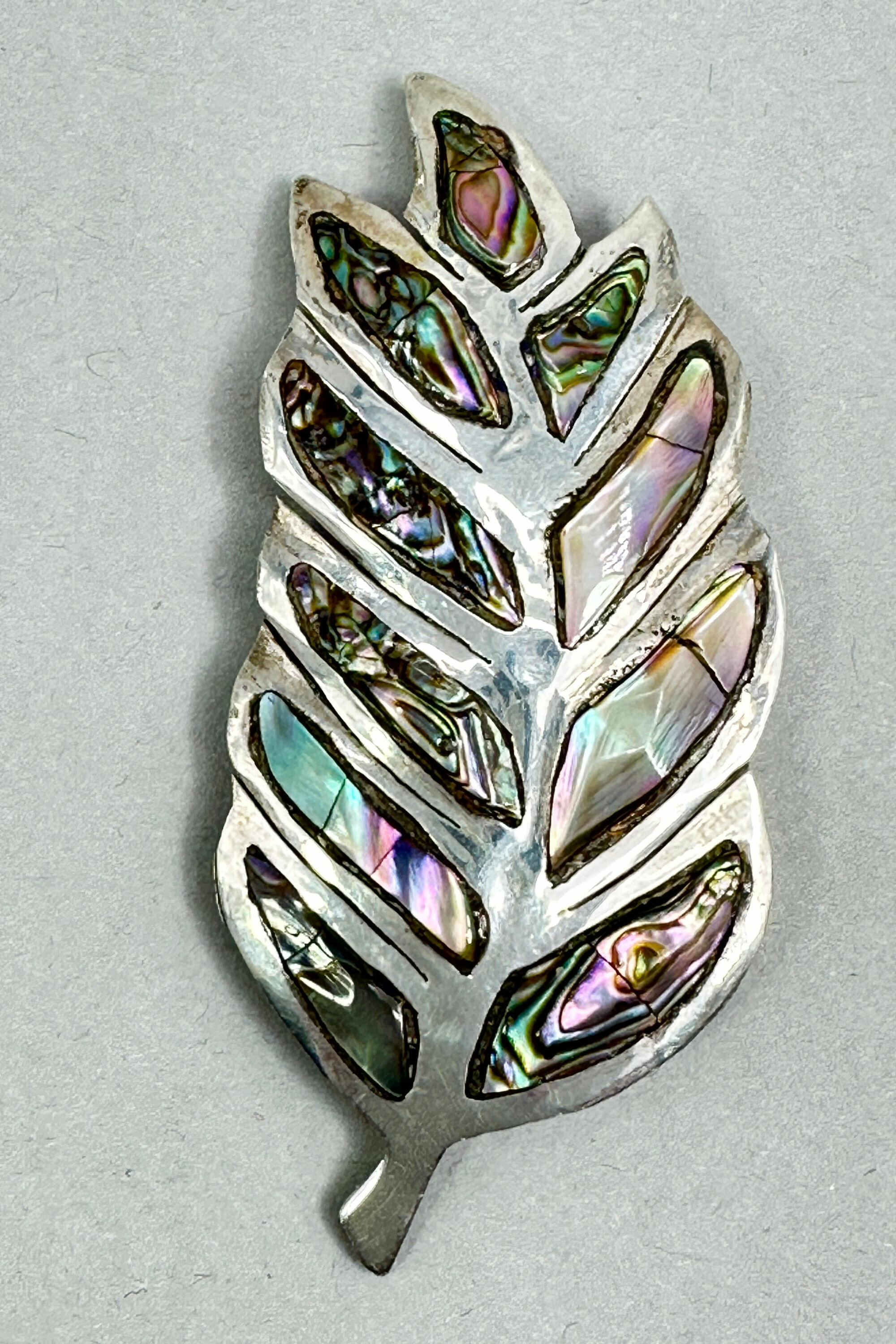
Taxco leaf shape brooch set with Abalone, c1950
Price: £45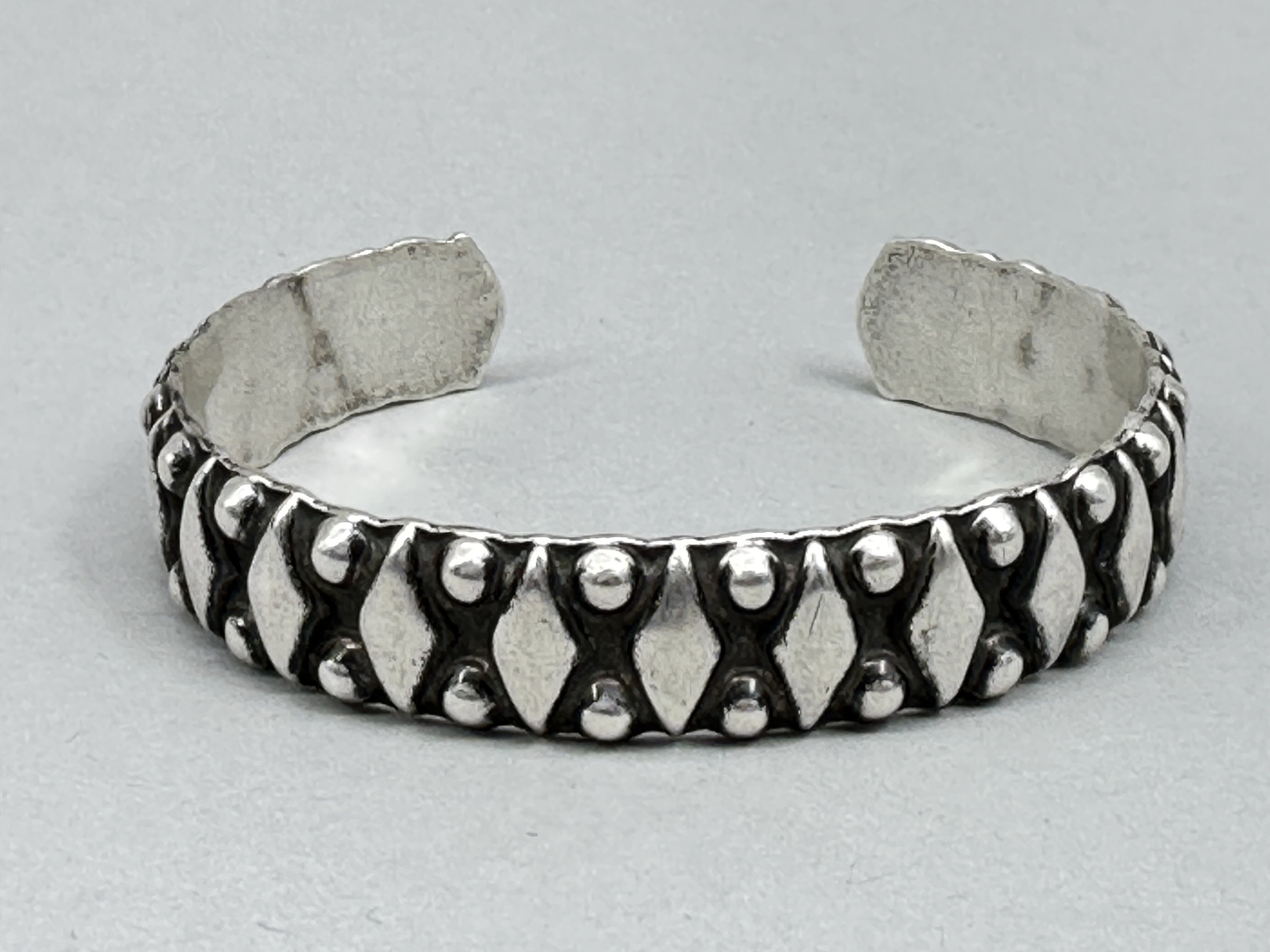
Classic Taxco cuff bracelet, c1980
Price: £75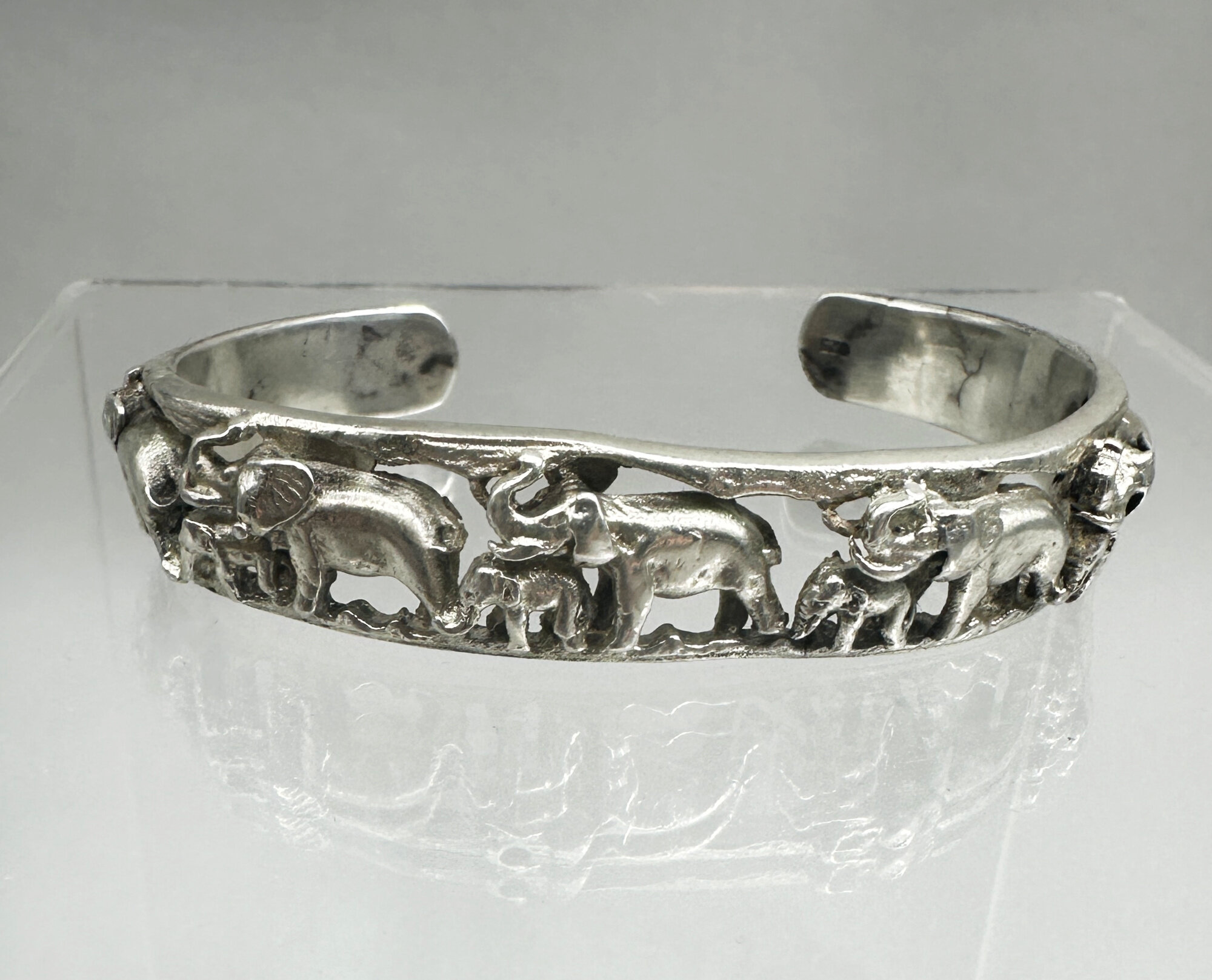
Taxco silver elephant cuff bracelet c1970
Price: £85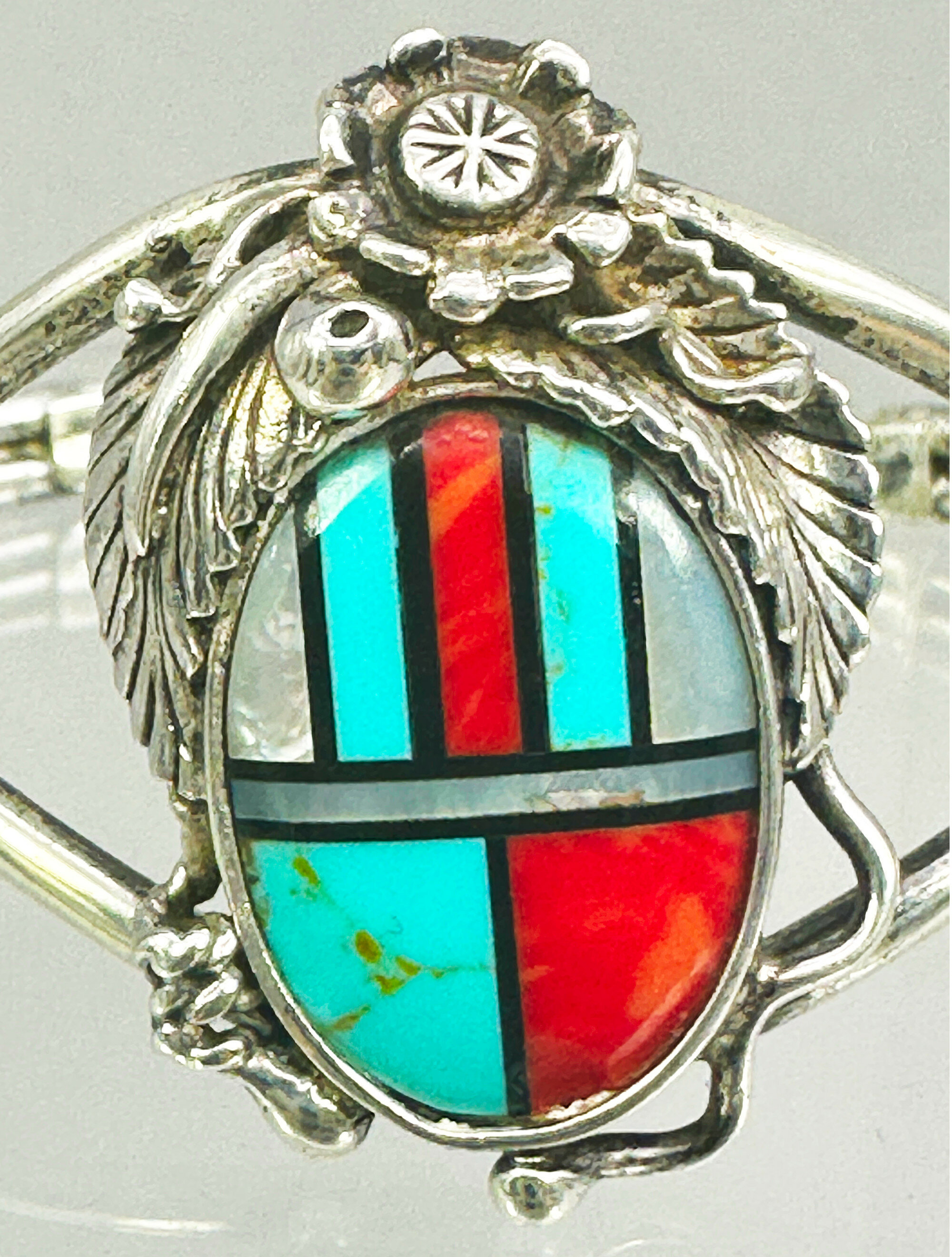
Native American Zuni silver cuff bracelet c1970
Price: £125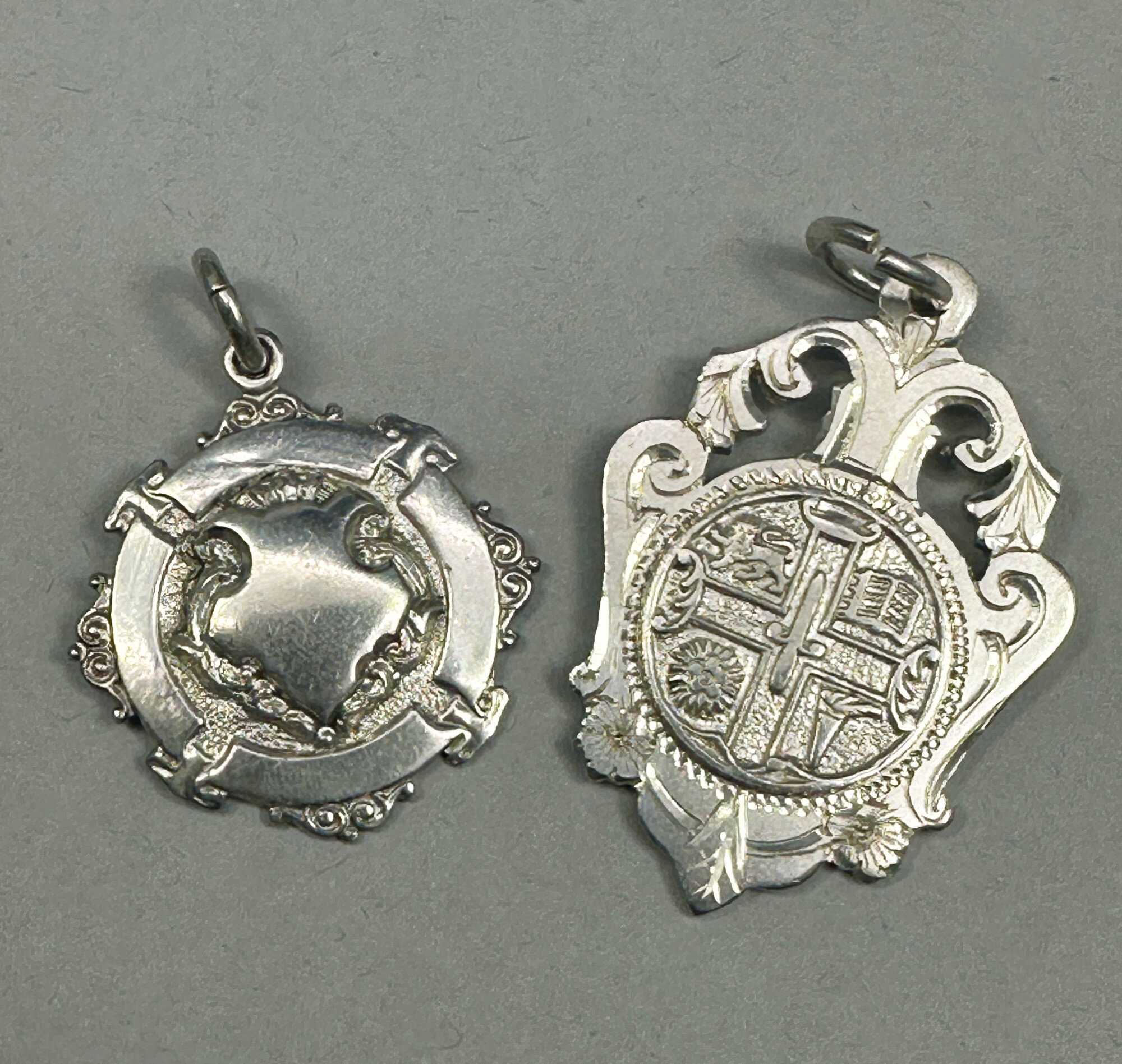
Two watch fobs 1912 and 1923
Price: £35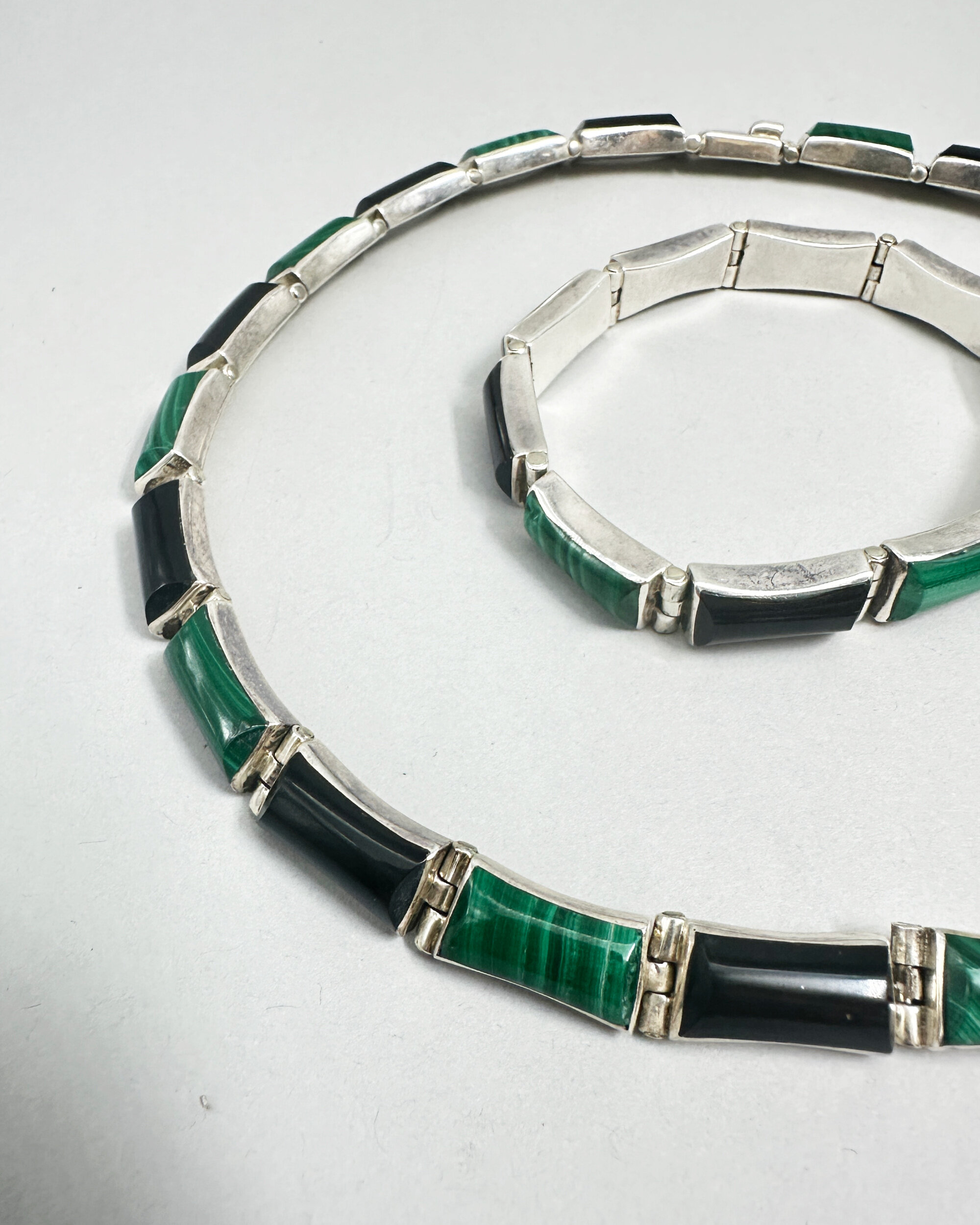
Taxco suite of necklace and earrings, malachite and onyx stations, 1990s
Price: £250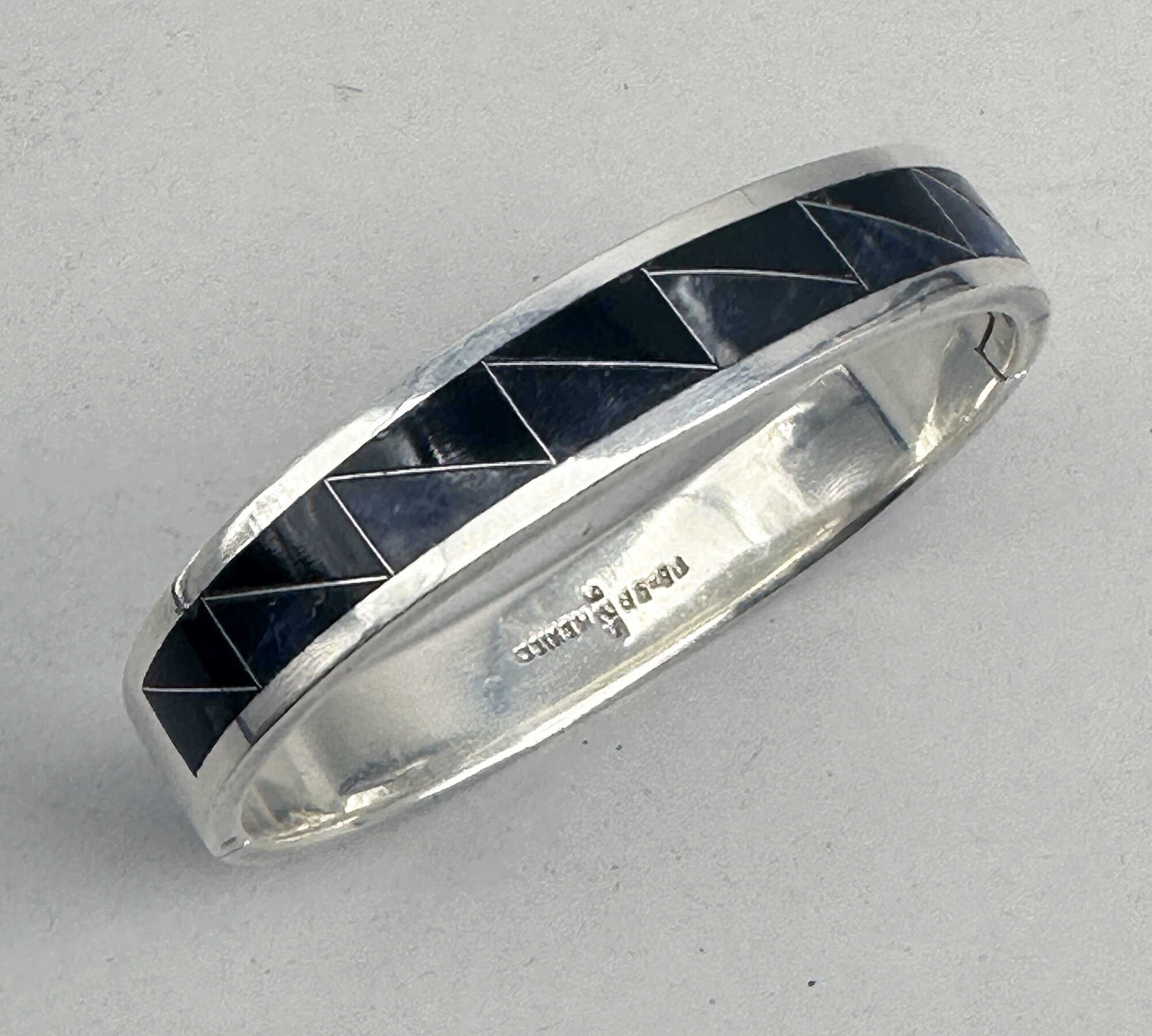
Taxco silver bangle with onyx and sodalite mosaic decoration, 1990s
Price: £75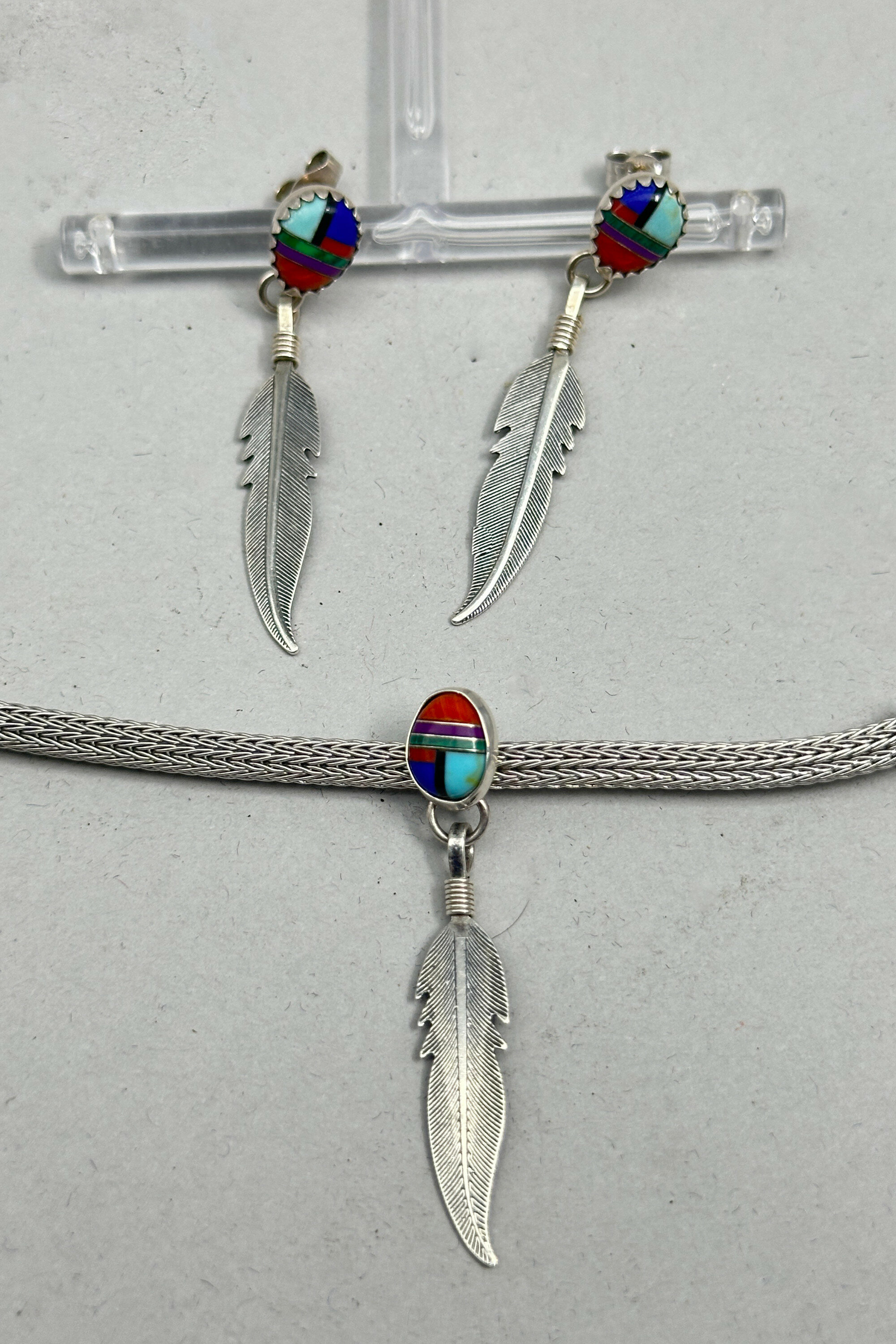
Zuni suite of necklace and earrings, New Mexico, 1990s
Price: £95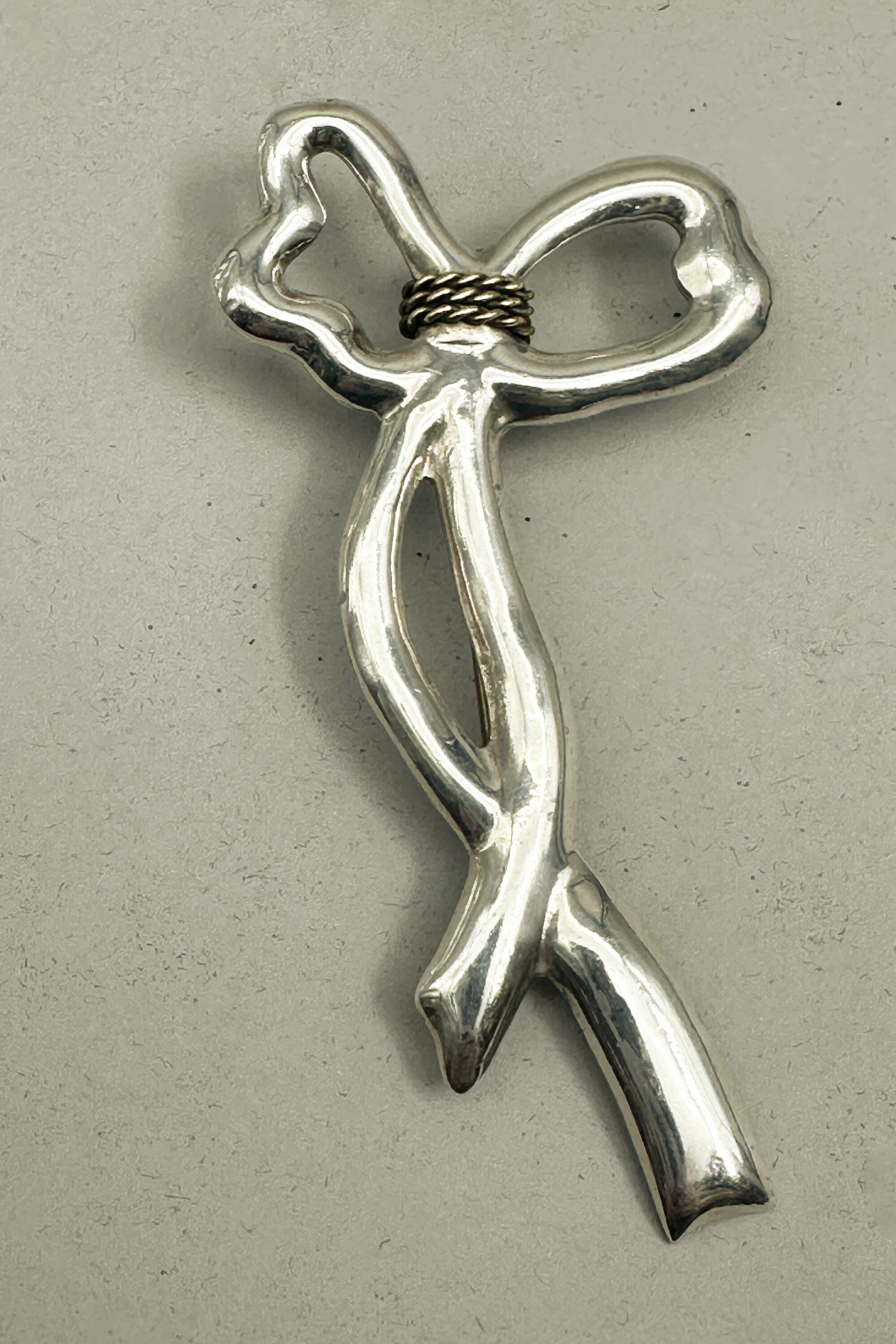
Modernist Taxco brooch 1980s
Price: £45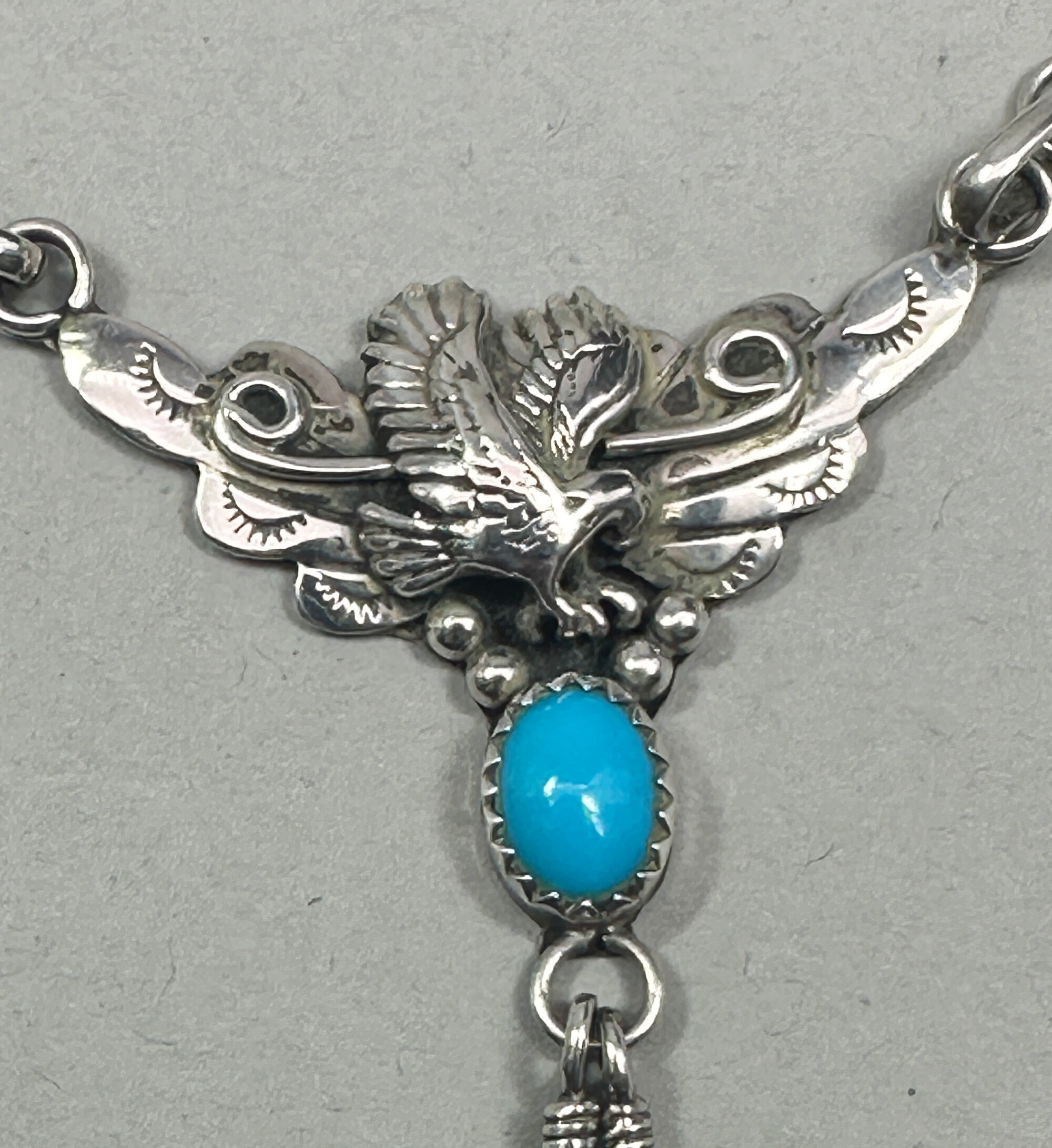
Navajo suite of Necklace and Earrings set with sleeping beauty turquoise, 1990s
Price: £250The Navajo are a Native American people of the Southwestern United States with the largest reservation in the country, mainly concentrated in Arizona and New Mexico. Their silverwork, which they began to produce in the late C19th, came to enjoy great popularity and often employed the use of turquoise. This matching suite is an excellent example of their work. The necklace is marked ‘Sterling’ for 925 silver and the same material would have been used throughout, providing a perfect backdrop to the ‘sleeping beauties’.
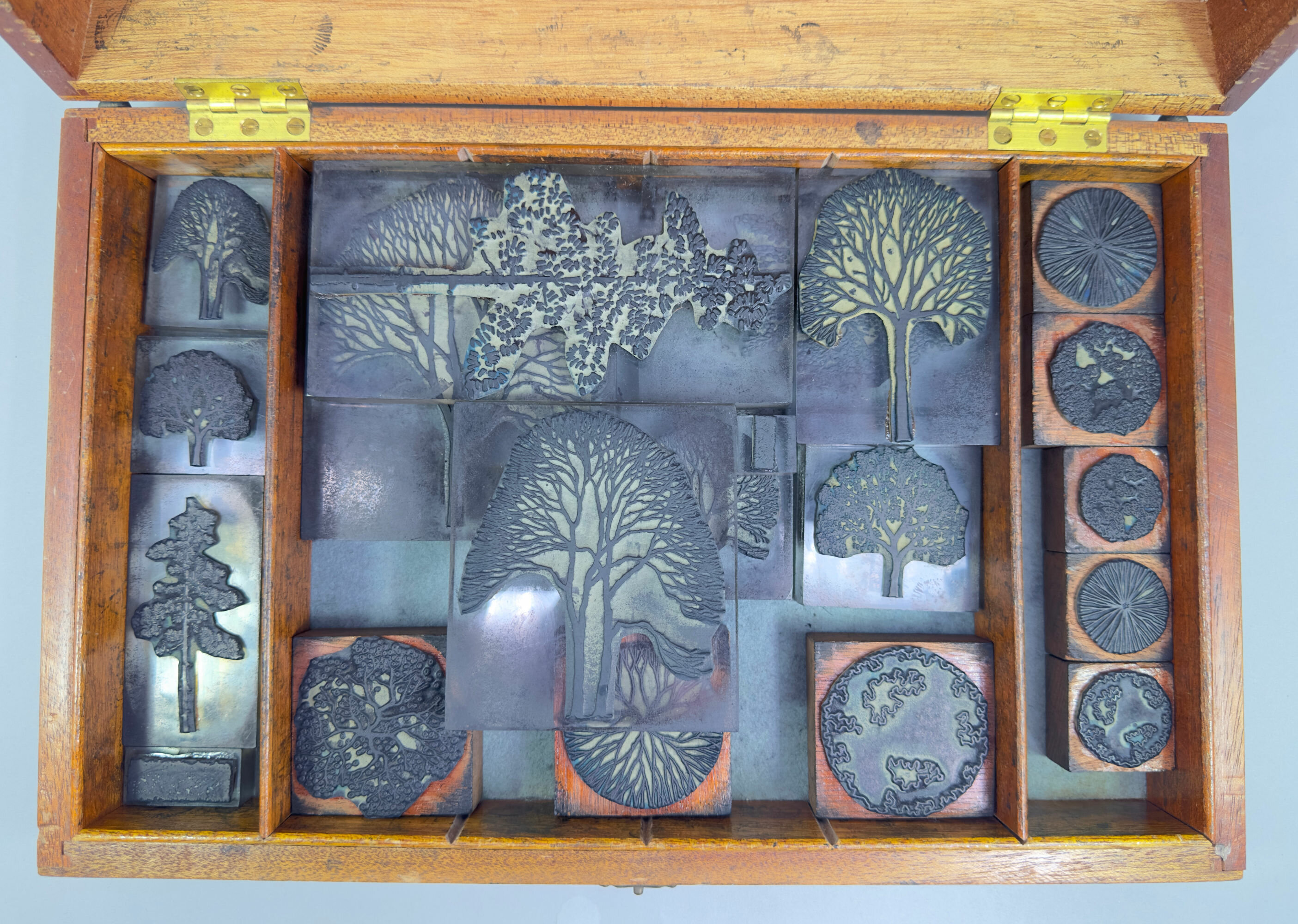
A group of twenty assorted artists Stamps in H&R Johnson sample Box, C20th
Price: £75
Mounted aquatint engraving of a Courting Couple, signed, probably French C20th
Price: £45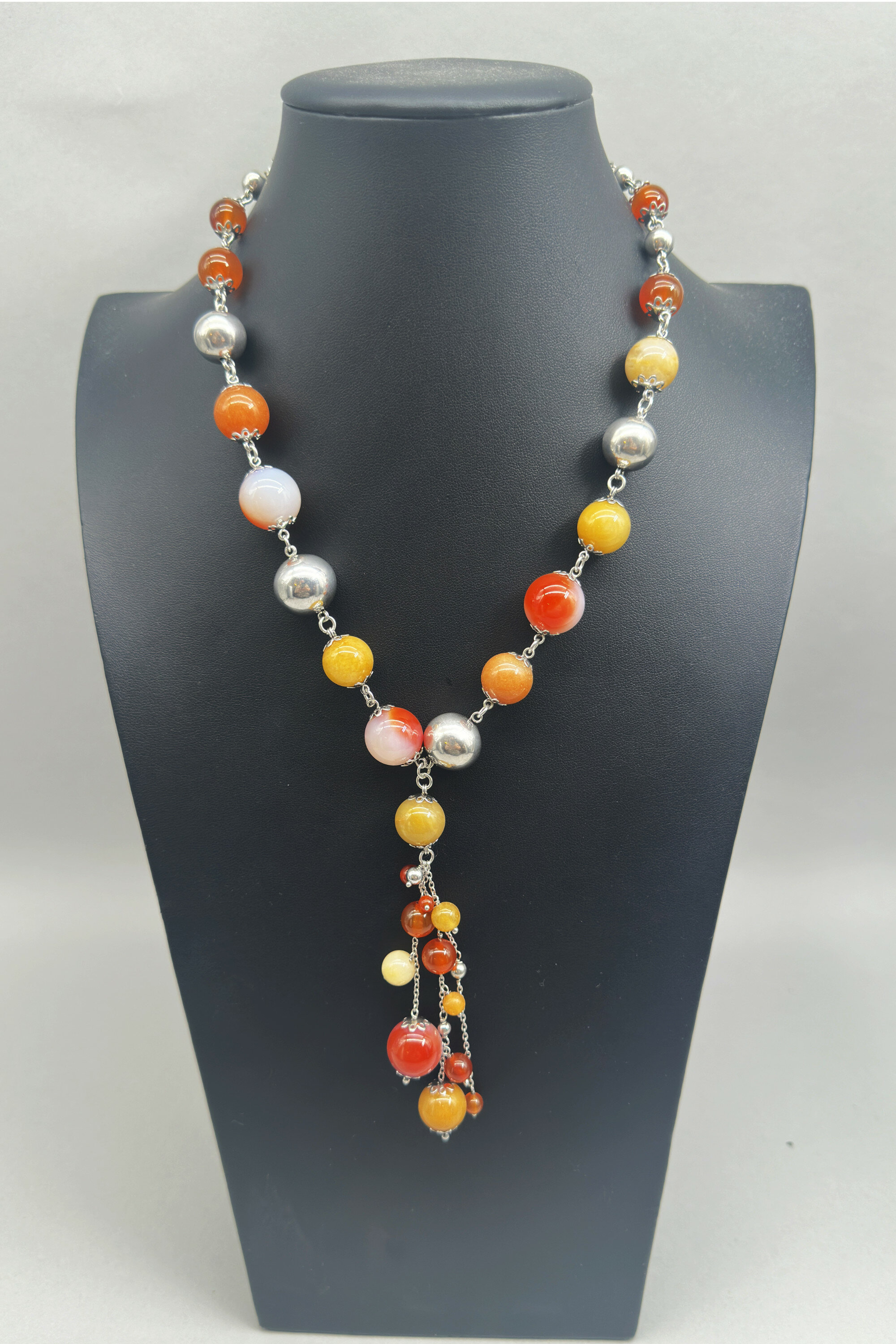
Bead necklace with jade carnelian and silver beads c1990
Price: £75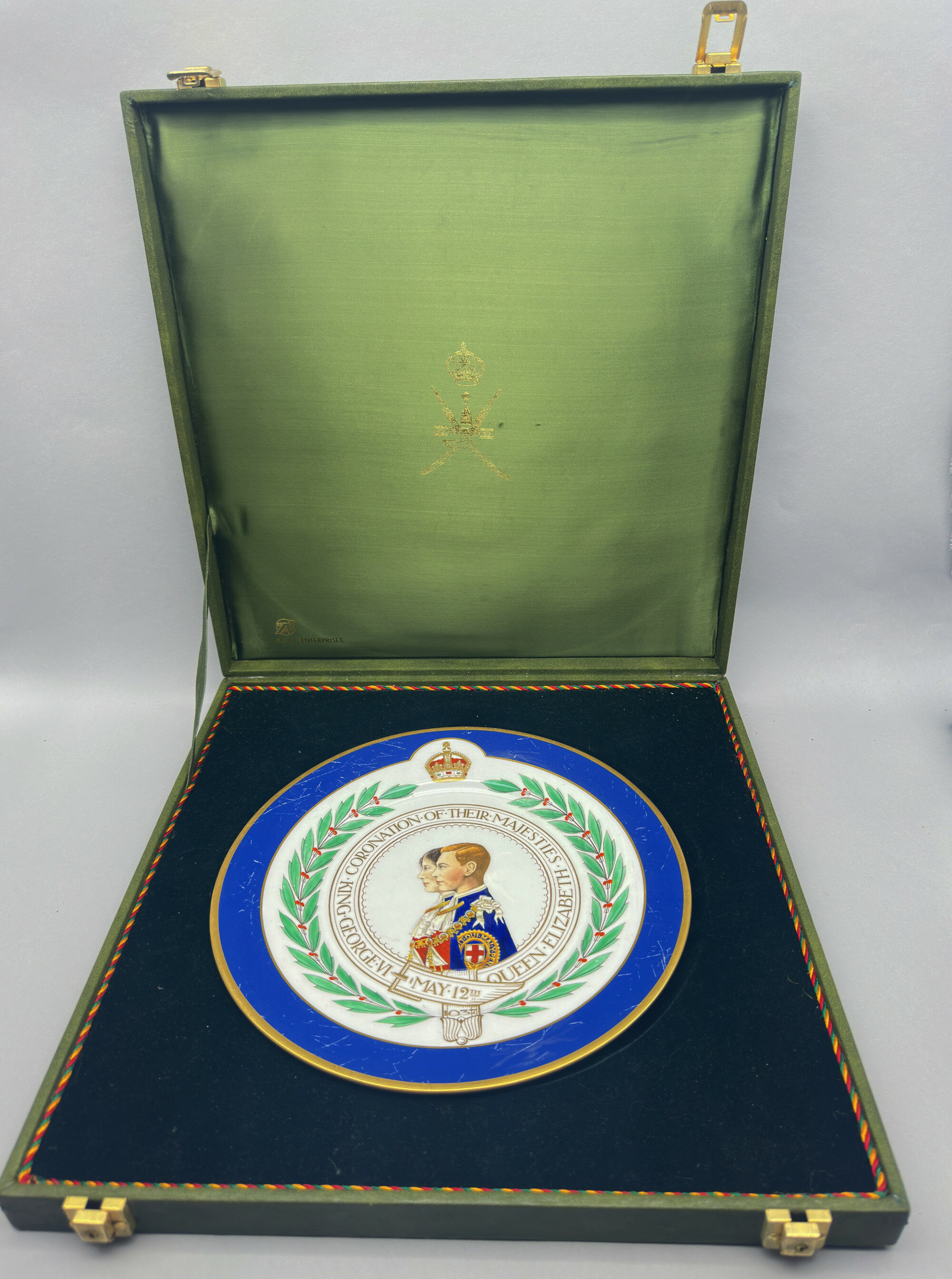
Mintons Coronation Plate, King George VI and Queen Elizabeth 1937, boxed
Price: £25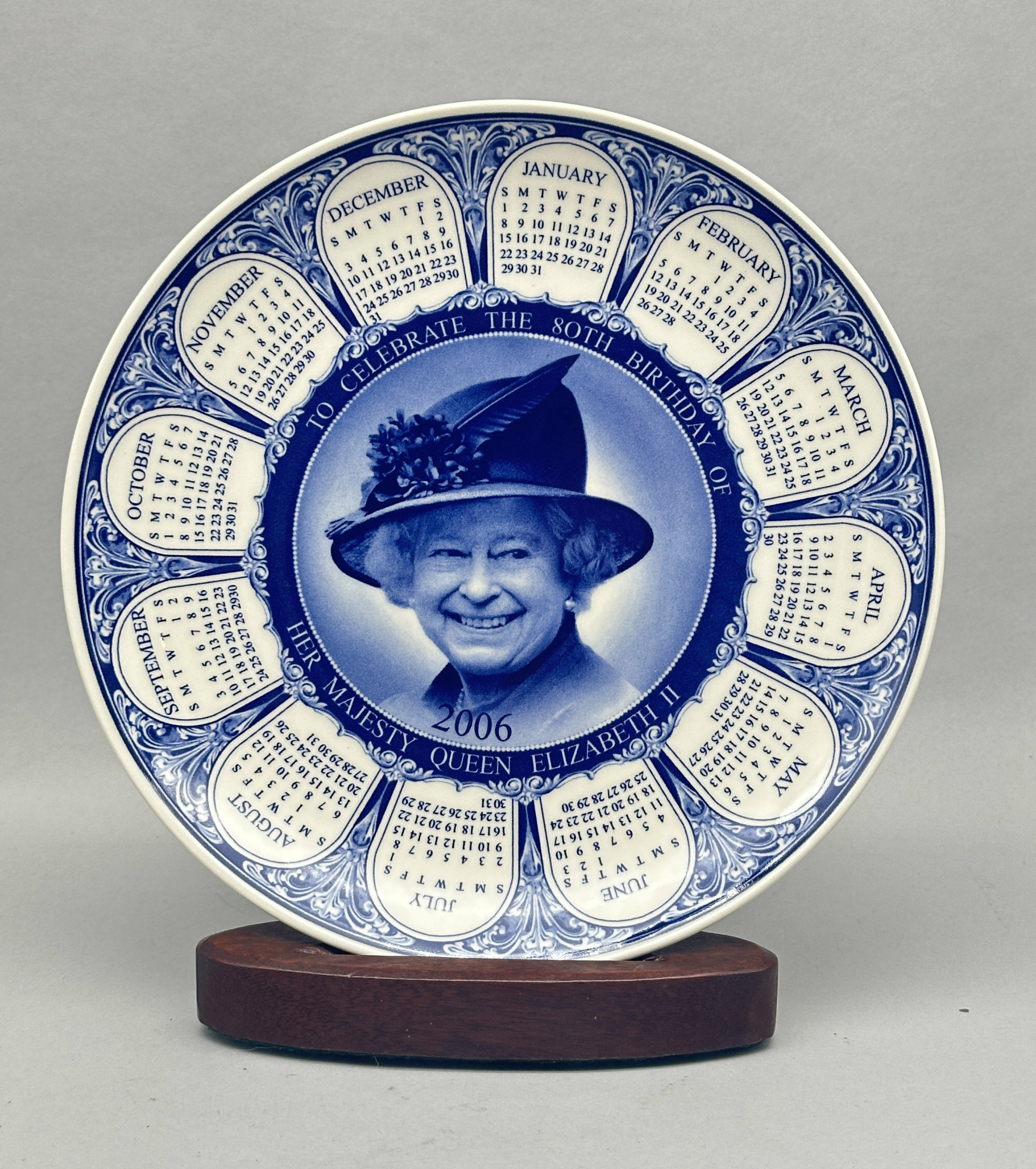
Wedgwood Calendar Plate, 80th Birthday of Queen Elizabeth II, 2006
Price: £10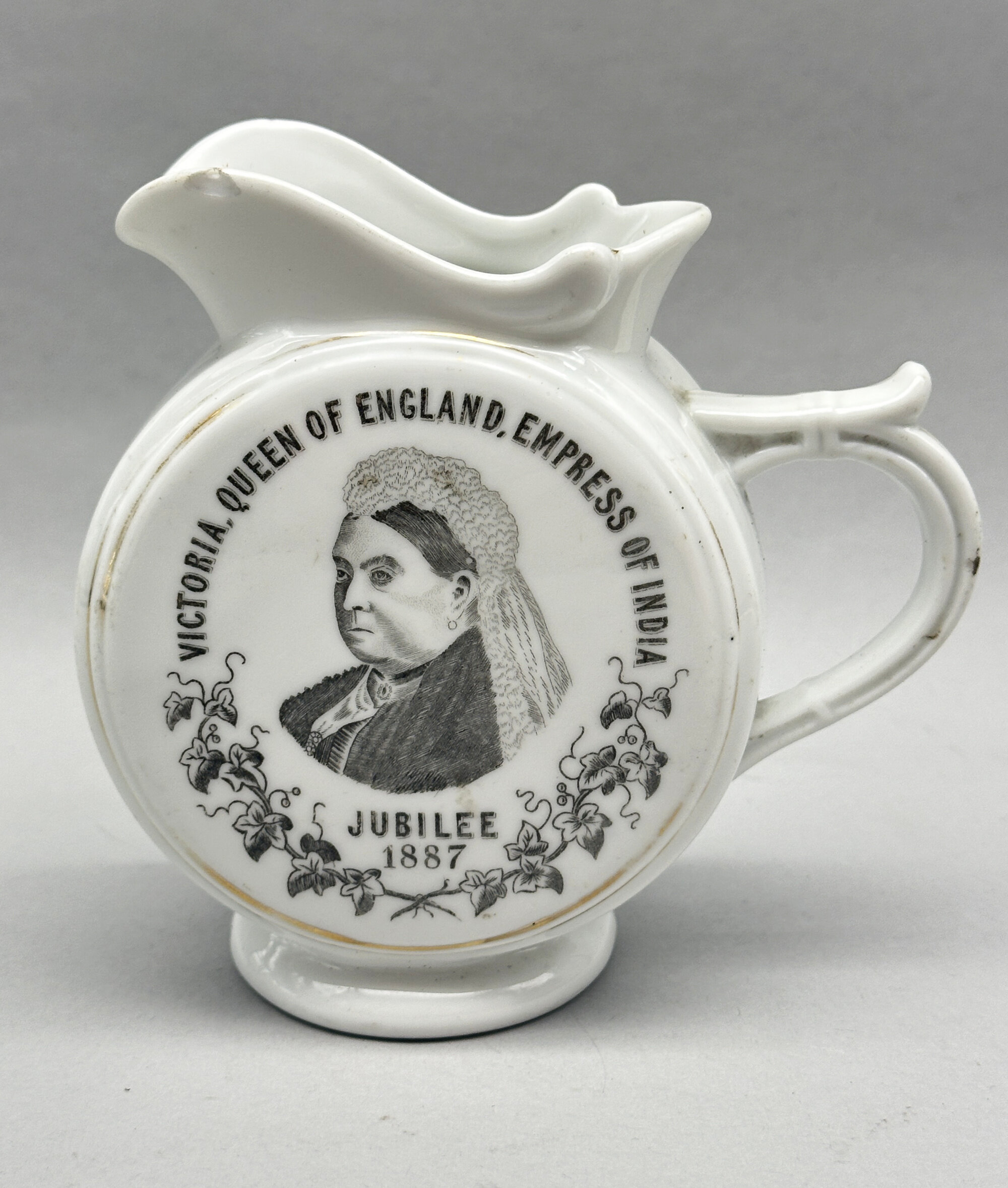
Queen Victoria Golden Jubilee Jug, 1887
Price: £10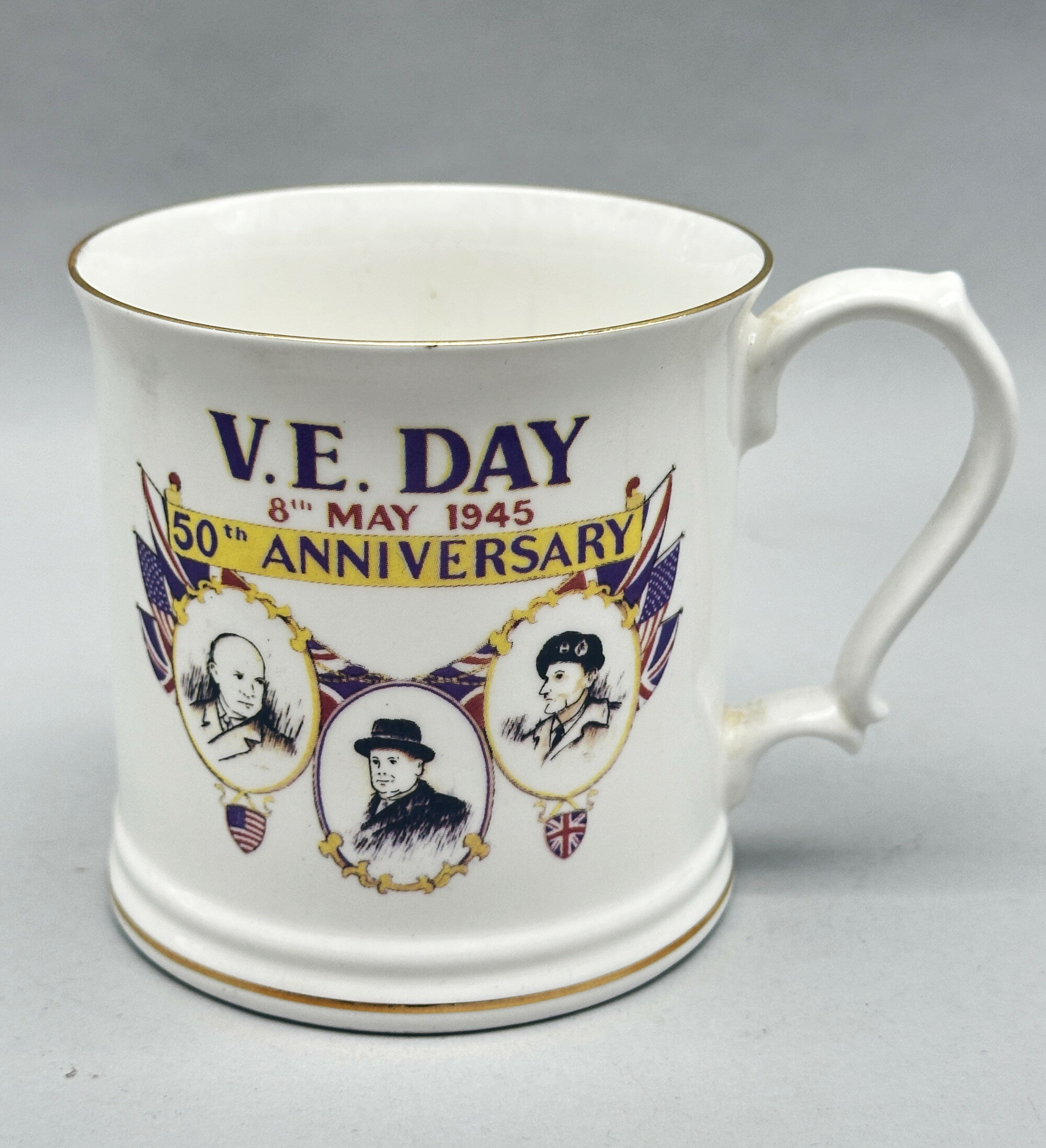
VE Day, 50th Anniversary Commemorative Mug, 1995
Price: £10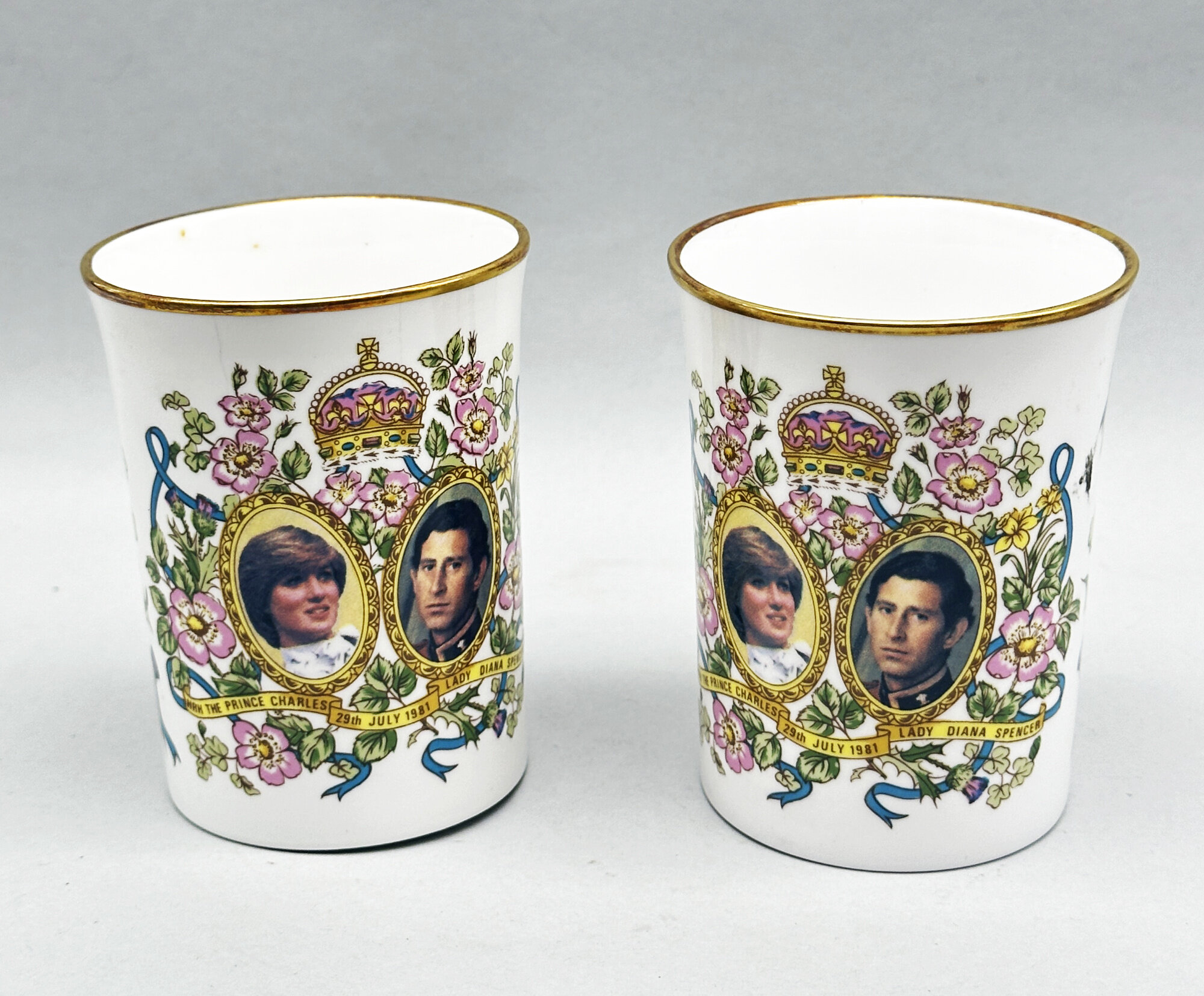
Two Beakers : Wedding of the Prince Charles and Lady Diana Spencer, 1981
Price: £15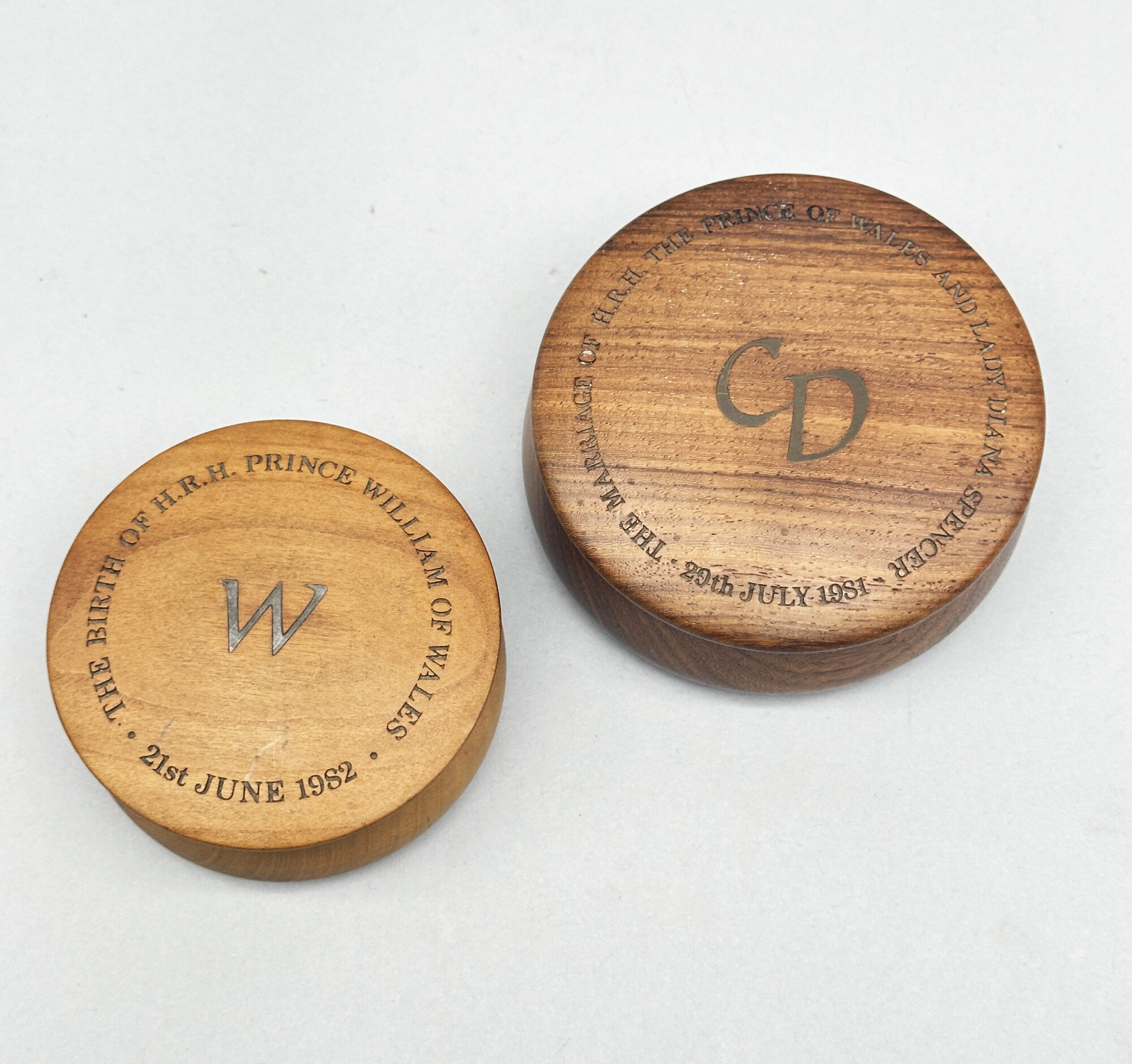
Two Wood Boxes : Marriage of Charles and Diana, Birth of Prince William, late C20th
Price: £15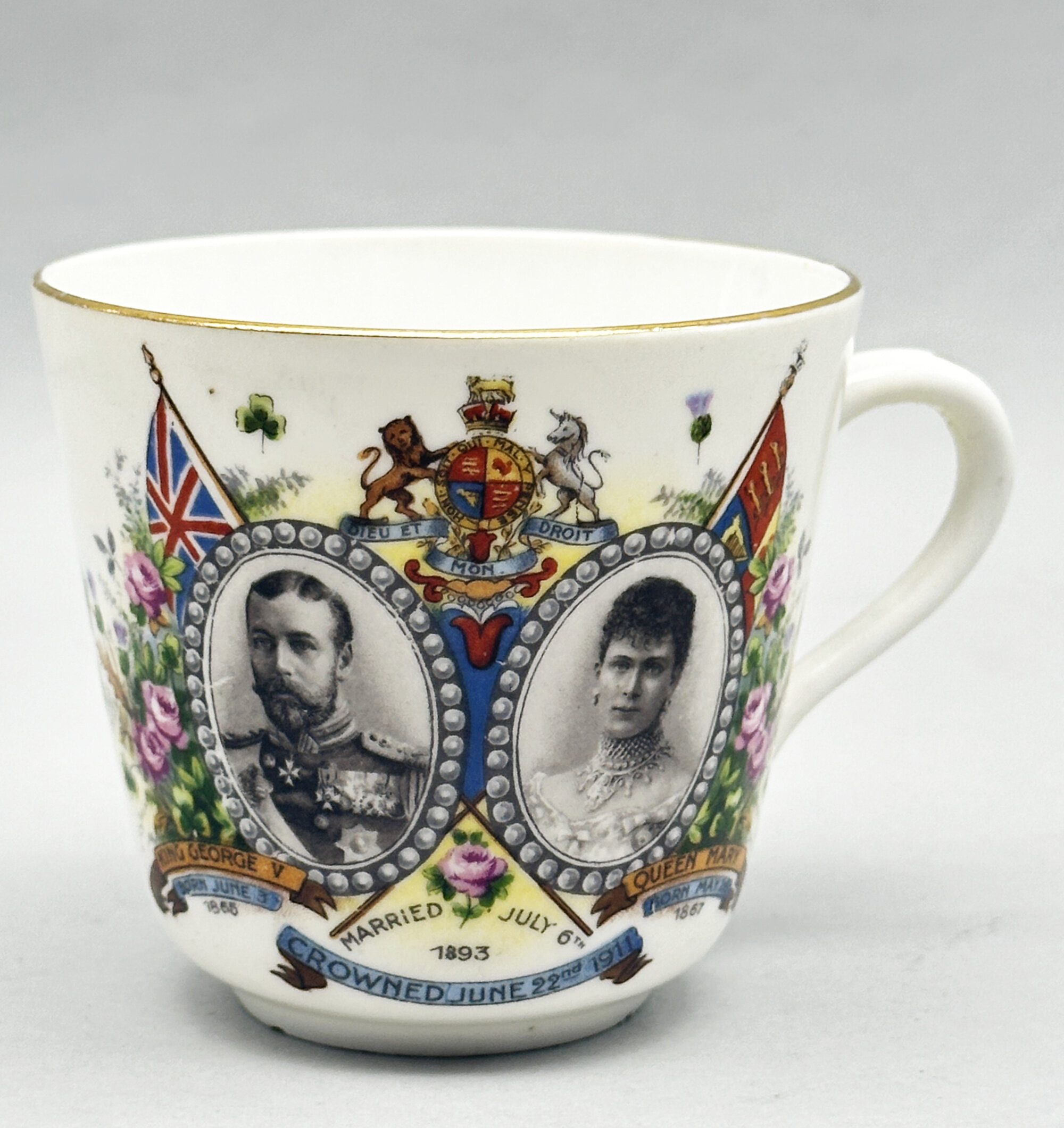
Cup : Marriage and Coronation of King George V and Queen Mary, 1911
Price: £10Production of this piece was presumably contemporary with the coronation in 1911 and many similar pieces were made by other factories at the time, more often in a straight sided mug shape. The form here suggests that there might have been an original saucer but none seem to have survived.
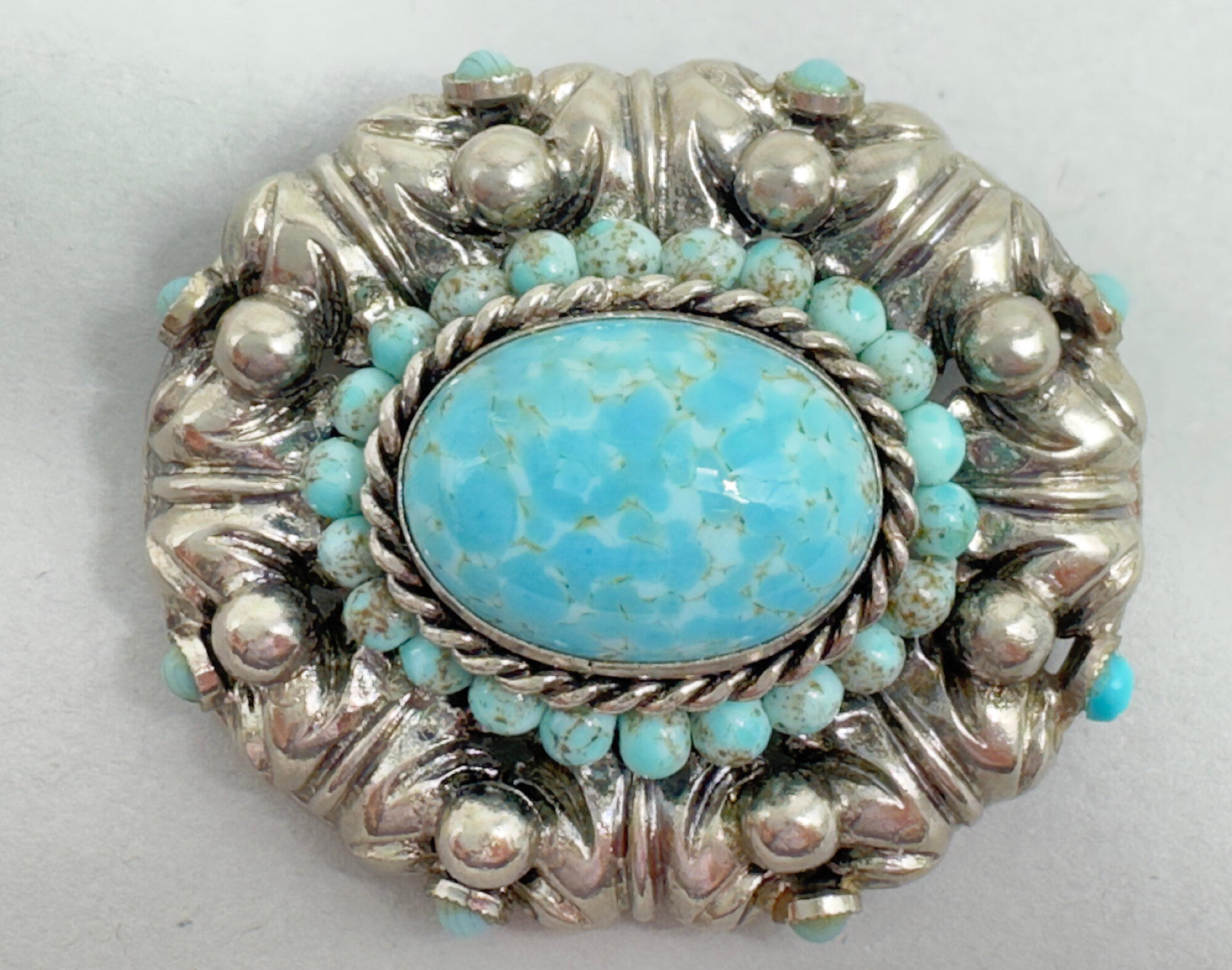
Czech glass faux turquoise brooch c1930
Price: £65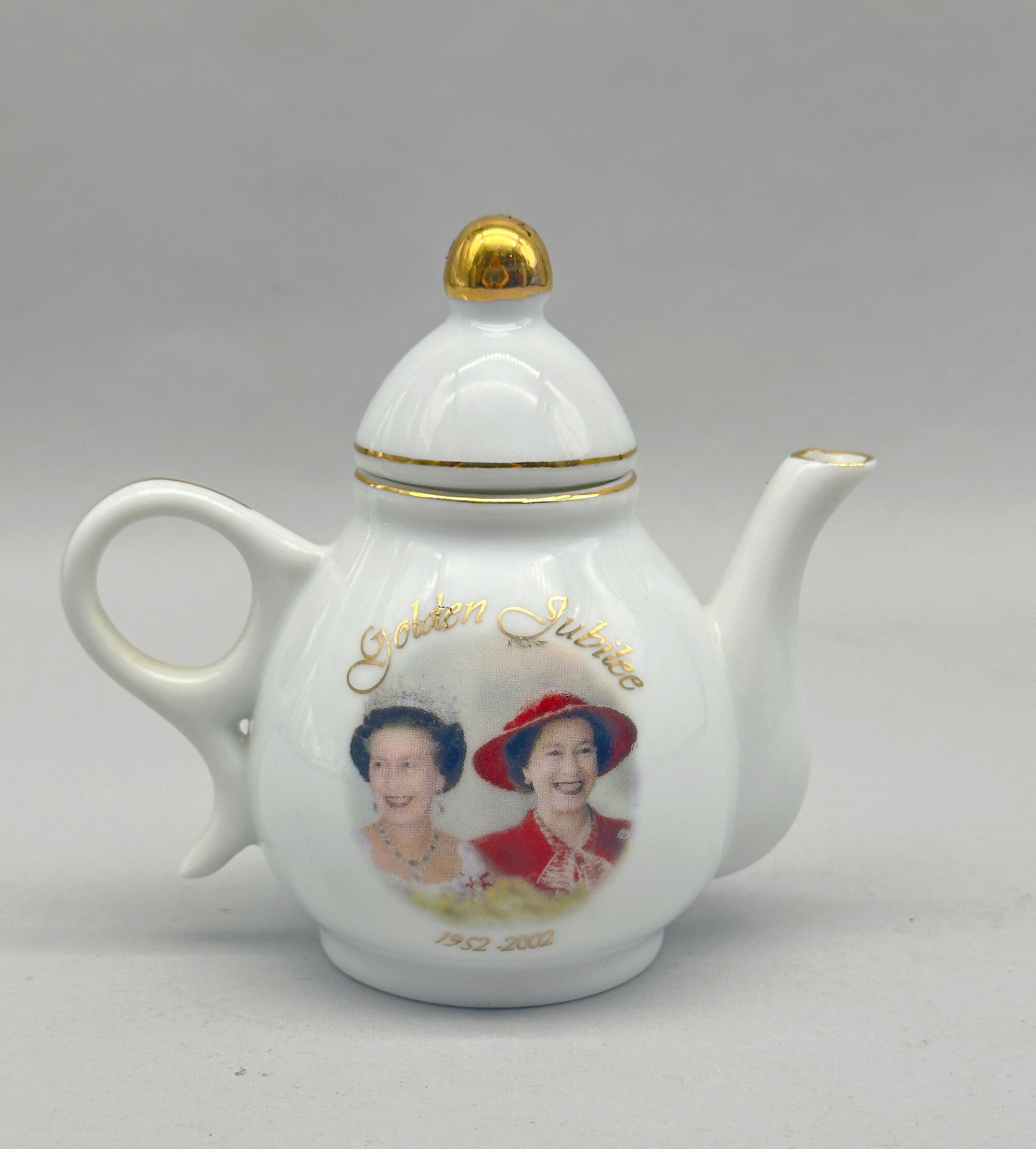
Teapot and Cover : Golden Jubilee Queen Elizabeth II, 2002
Price: £10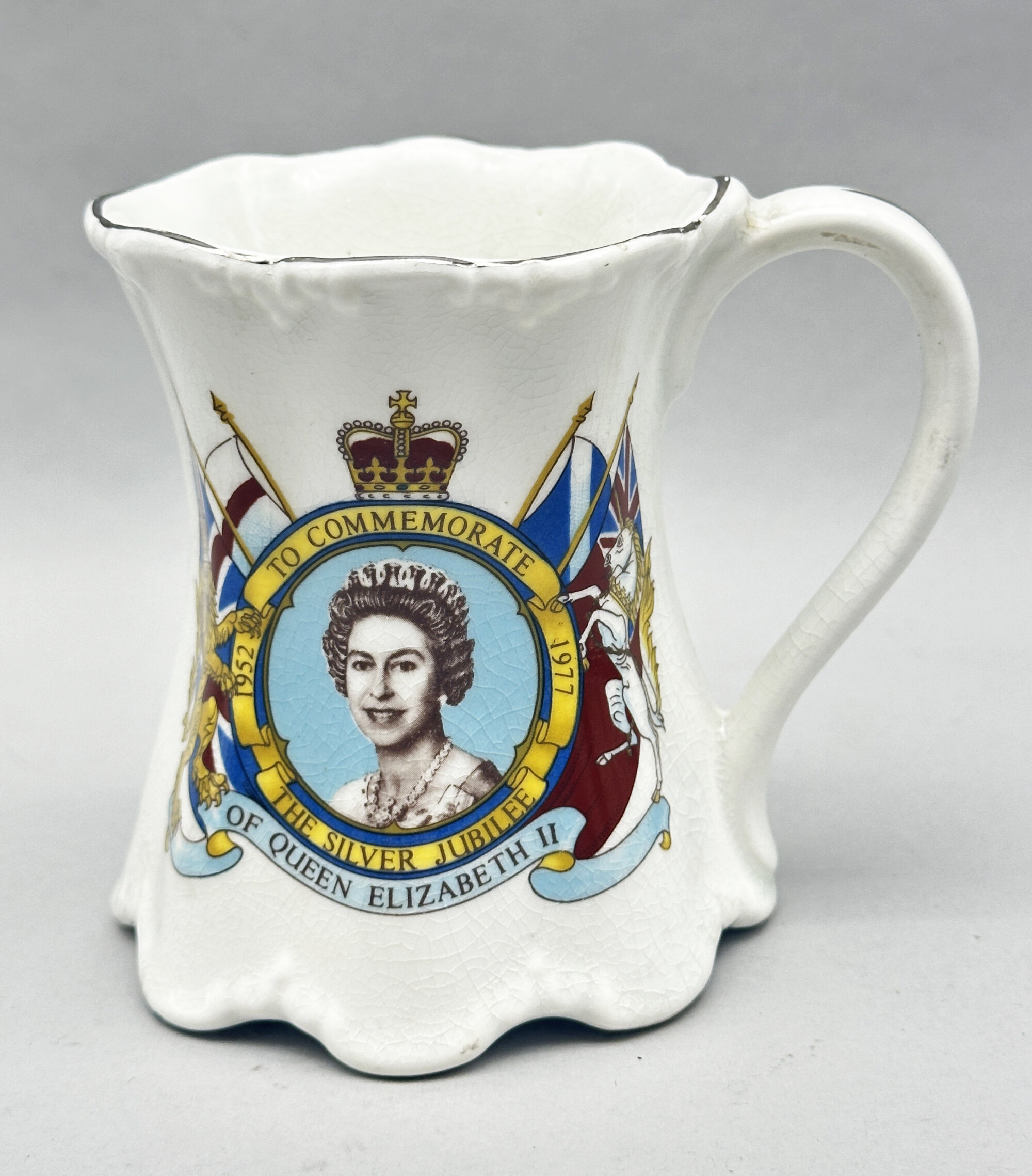
Queen Elizabeth II Silver Jubilee China Mug, 1977
Price: £10
Cup : the Silver Wedding Anniversary of Queen Elizabeth II and Prince Philip in 1972
Price: £25The Paragon China Company, formerly the Star China Company (see Lot XX), produced high quality gift items from 1920 to 1971, at first independently and then in alliance with other companies, finally being absorbed by Royal Doulton in 1972 who kept the ‘Paragon’ name until 1991. Commemorative wares were a speciality and this cup is a fine and typical example.
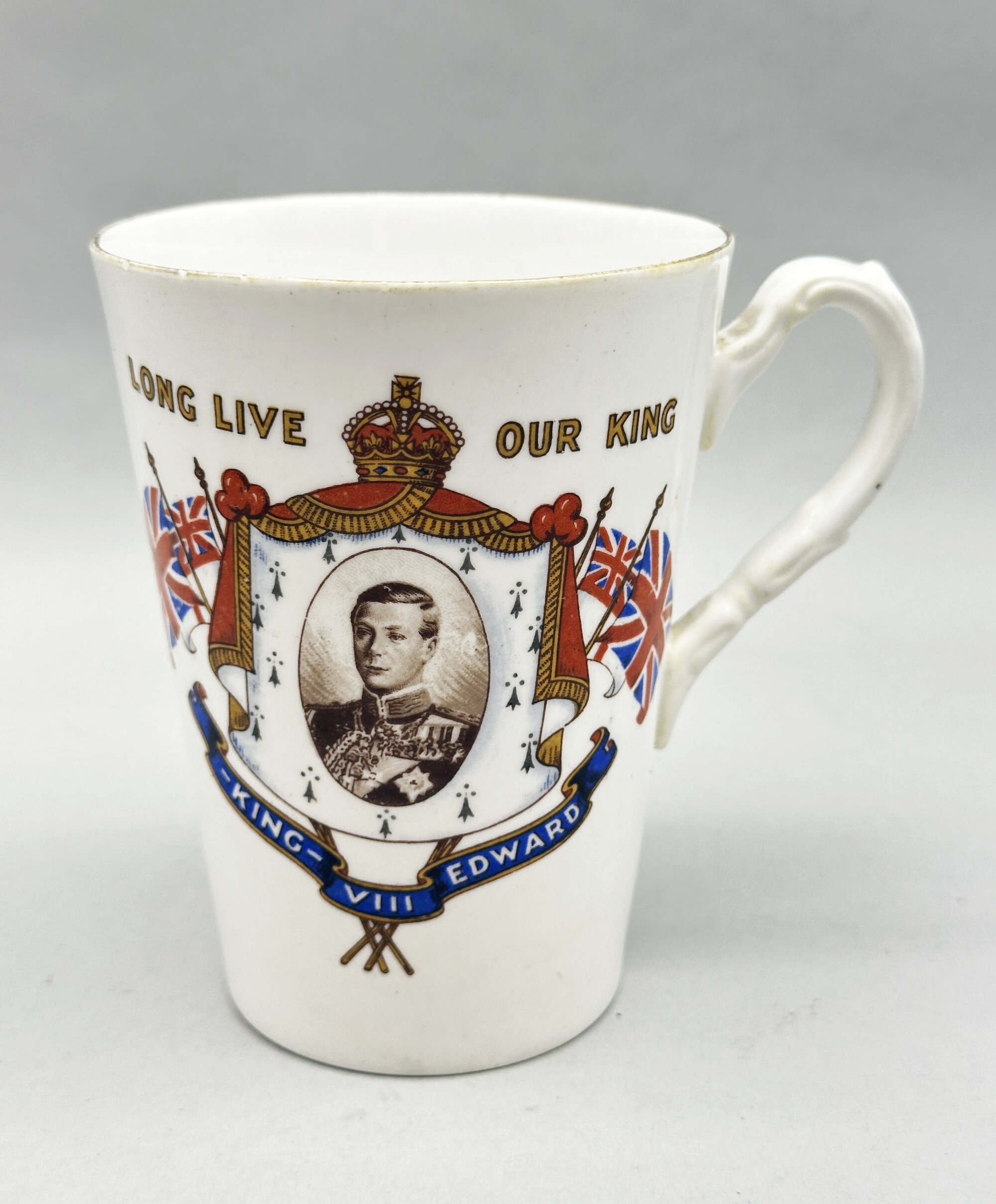
Mug Commemorating the Coronation of Edward VIII in 1937
Price: £25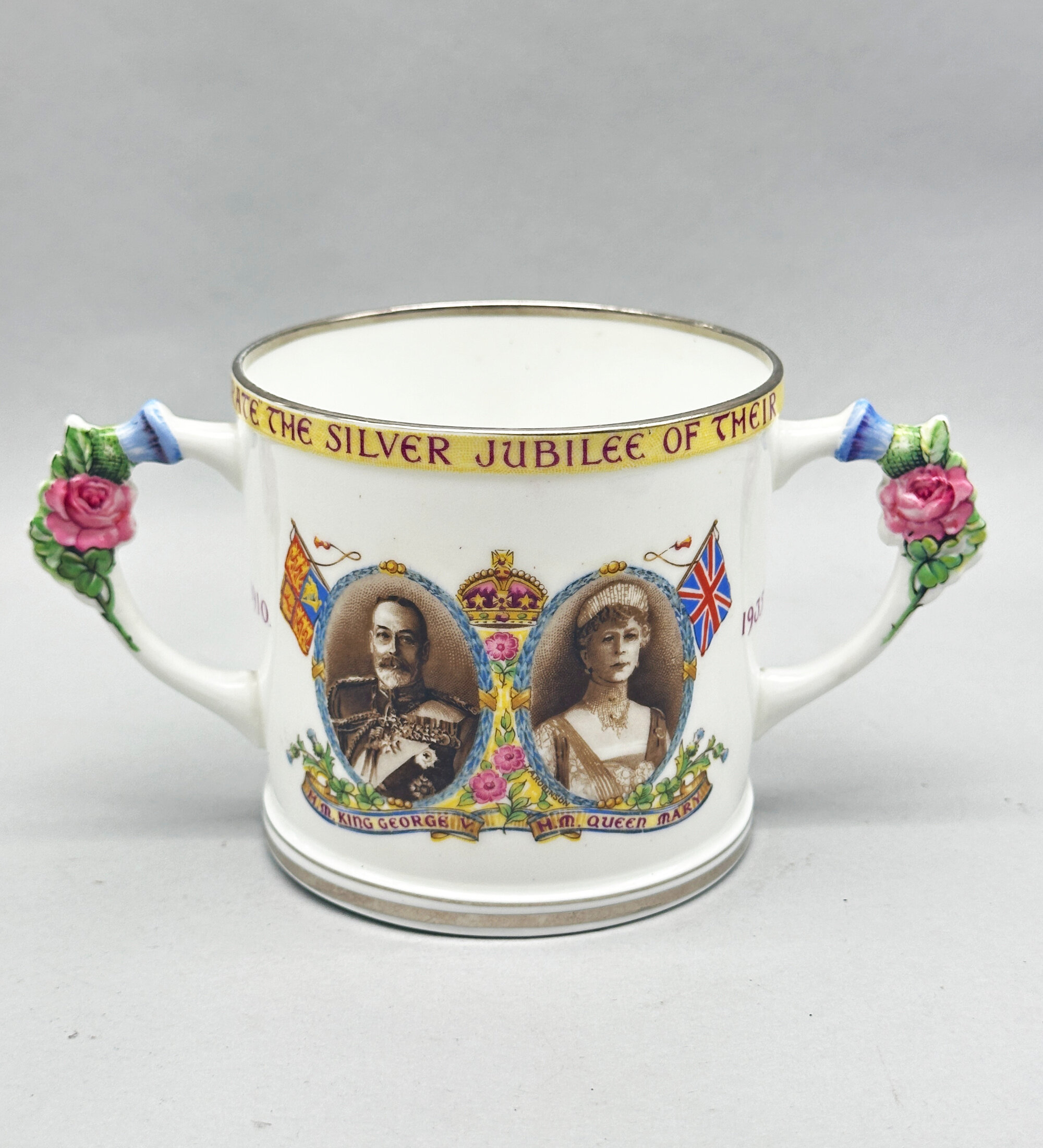
Cup Commemorating the Silver Jubilee of King George V and Queen Mary in 1935
Price: £55The Paragon China Company, formerly the Star China Company (see Lot XX), produced high quality gift items from 1920 to 1971, at first independently and then in alliance with other companies, finally being absorbed by Royal Doulton in 1972 who kept the ‘Paragon’ name until 1991. Commemorative wares were a speciality and this cup is a fine example.
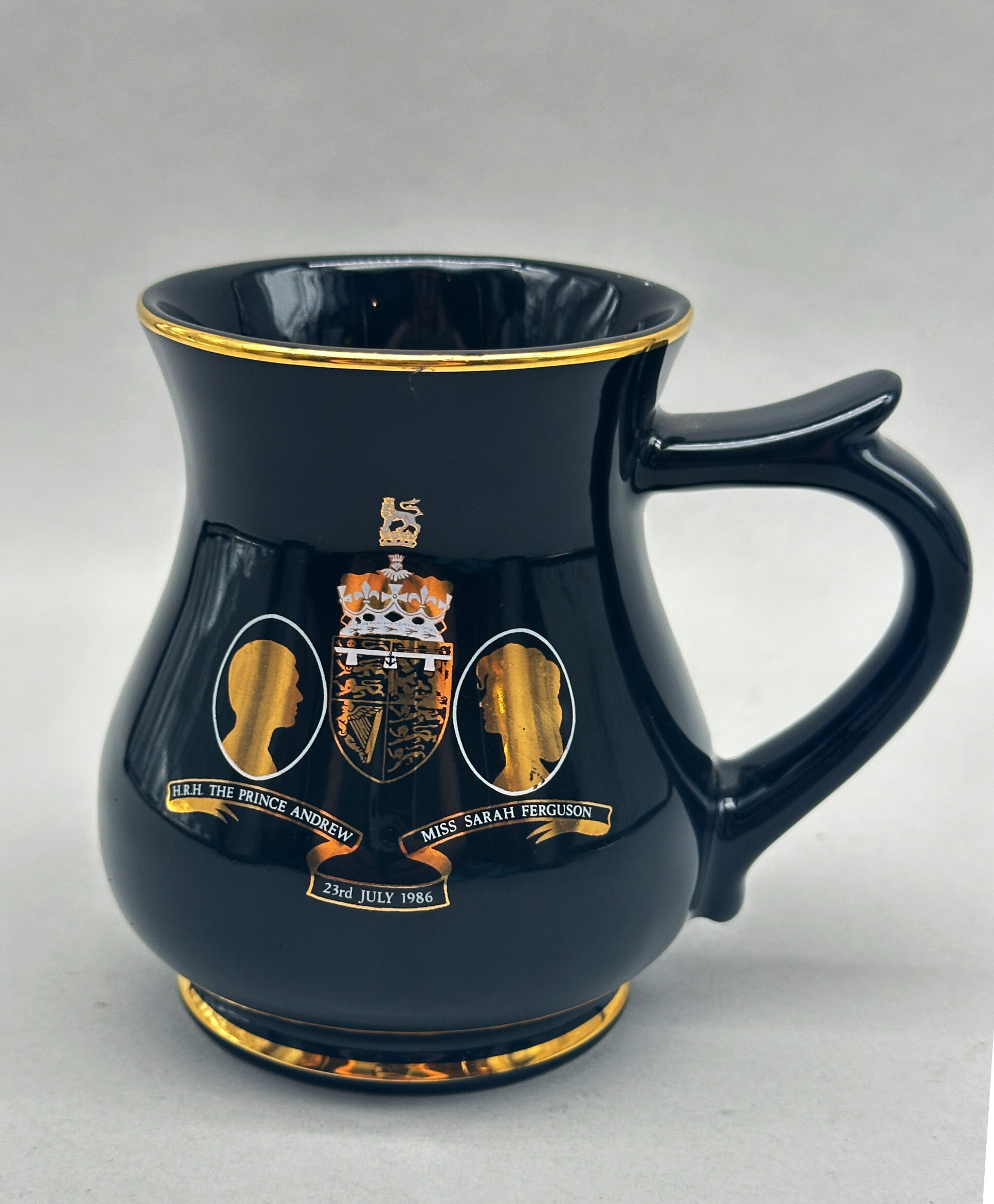
Ceramic Tankard celebrating the Marriage of Prince Andrew and Sarah Ferguson in 1986
Price: £10
Pair of Ceramic Goblets : the Wedding of Prince Charles and Lady Diana Spencer in 1981
Price: £20
Czech glass faux turquoise brooch c1930
Price: £65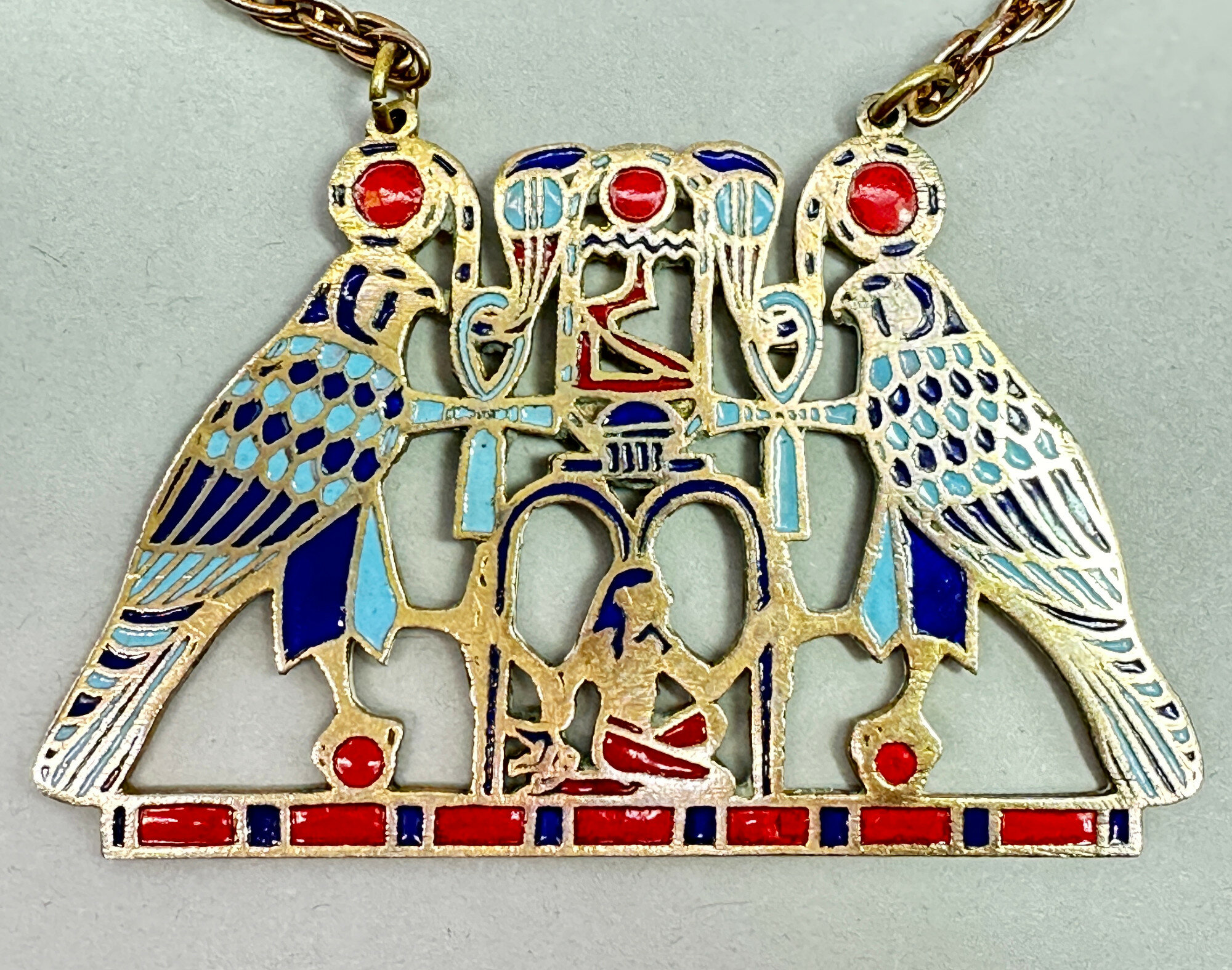
Outstanding Egyptian Revival necklace c1960
Price: £125
Large faux coral Bakelite brooch, British c1940
Price: £45